
This week sees the launch of my new online bespoke mentoring service at Forest of Dean & Wye Valley School of Photography - our humble photography training school based in the UK south west since 2009. I’ve been asked many, many times why I’m not on YouTube, Facebook “how to” videos or Instagram reels. Lots of people are and they are very good at it. Some though are not and it’s not always easy to tell the difference. For me though, the photo school has always been about personal service.
When people re-book additional sessions, they expect it to be with me and not a staff member or stand-in. The face-to-face experience is what it’s all about. It’s not just the client’s point of view either – I get a lot from the experience too. It keeps me current on camera makes and models and the questions clients ask keep the grey matter ticking over. But it’s sad to see the “Myths of Photography” still spreading and mutating.
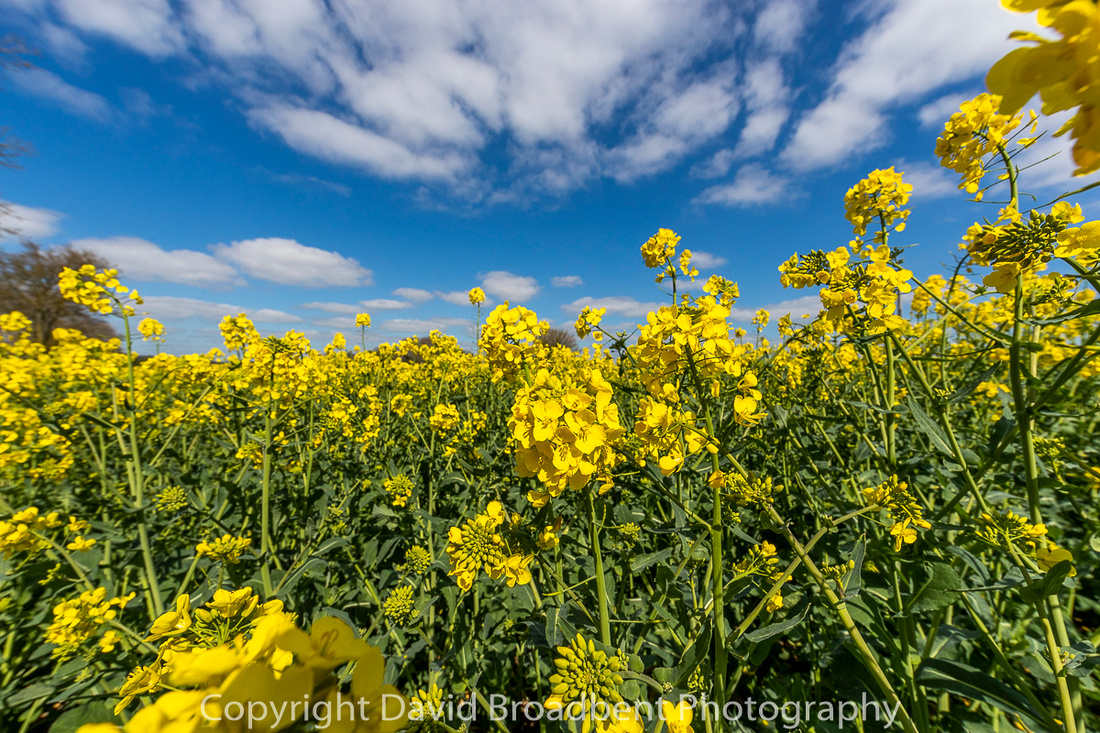
I’ve worked hard on an online package that I think will preserve the values of the photo school whilst at the same time allowing those who live outside our beautiful area to access our no jargon, no nonsense fun training. I meet lots of lovely visitors to our area who take in one of my photo experiences whilst here. Our training partners Forest Holidays and Puzzlewood have been extremely popular places to shed those lockdown blues and Humble by Nature have a packed course schedule for 2022. We’ve even had to add additional bird photography course dates to the calendar for Wildfowl & Wetlands, Slimbridge!
It has been the visiting clients who have kickstarted this latest initiative. Having been on a two- or four-hour course they’ve seen the benefit of my “keep it simple” approach. They’ve asked for this. So here it is. It’s really an adaptation of my existing Continuous Development package – except online.
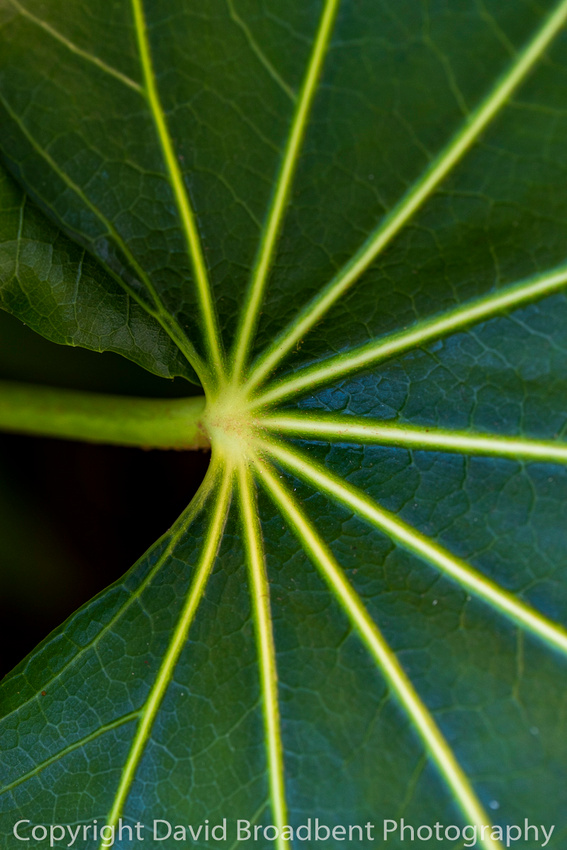
It works at any time and for all levels. There is a small one-off sign-up fee to cover the initial analysis and assignment setting followed by a per session paid constructive Zoom based critique session. This process of assignment and debrief can be repeated at your own pace and on whatever timescale suits you. Each subsequent assignment builds on your experiences in the preceding one. In that way you can start to dig down into more complex and creative areas as you progress. Whatever level you start at, we can help. We’ve lots of experience and David provides beginners tuition right through to a Masterclass in your preferred genre. If you want to take a month to complete an assignment and have your debriefing session in the evening after work – no problem. No subscription and no pressure. We’ve got a small business edition as well. Helping business owners get the best from the devices the company owns to super charge their social and marketing cost effectively – ask for details.
Our first clients have already agreed their training needs established in their preferred working areas and the first few critique sessions have been lots of fun. The feedback so far has been really encouraging. Many of us are used to using Zoom and video meeting platforms in our everyday work and it’s nice to maintain that connection. It’s also the best way I can think of to get honest, constructive and encouraging feedback on your best work.

#photography #lessons #tuition #online #courses #training #photographer #development #creative
]]>
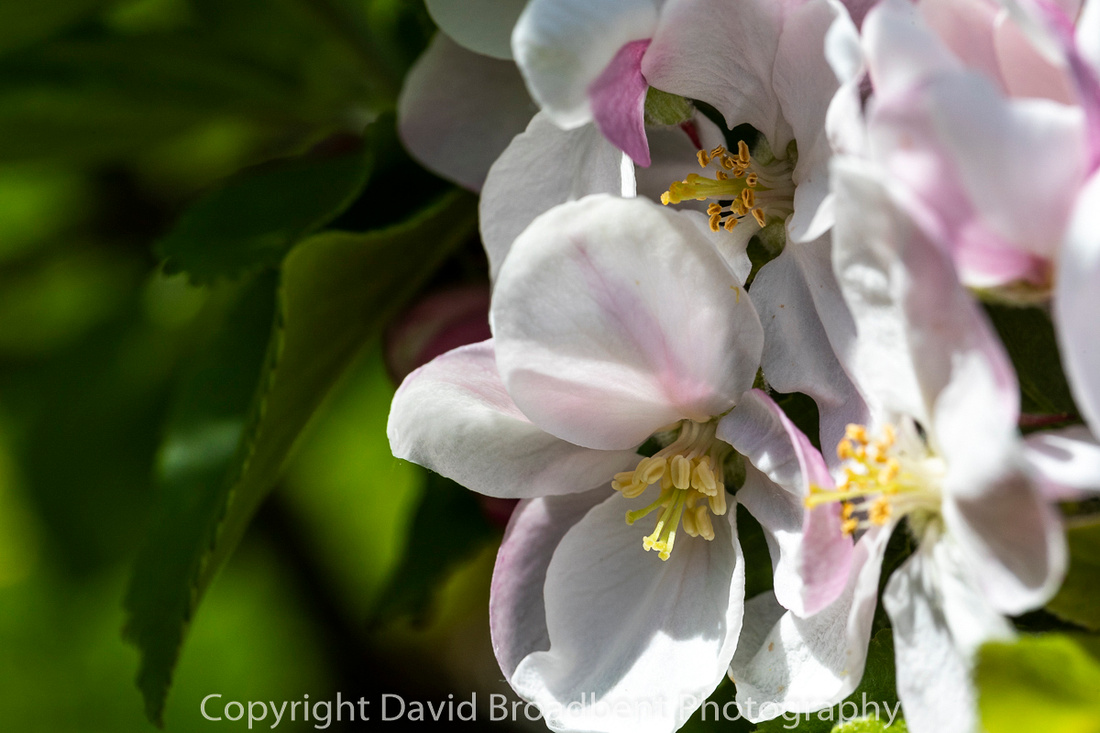
It strikes me that modern gardens are a lot like Mars bars. For them to work at all we need to be able to work, rest and play in them! Achieving that balance in a single space at the same time is trickier than we all imagine. Compound the difficulty by adding in – wildlife friendly and low maintenance.
We took over the Rose Cottage garden several years ago now. When the house is a wreck, the garden is very low down the order of priorities. I think we bucked that trend for one very laudable reason – in terms of demands on us, gardening is heavy on time and very light on the balance sheet! A concept familiar to any renovator i.e., the lulls between having sufficient cash to achieve the things you want to and, well, having none at all.

We set out to make our garden a place to work (many of my garden images have been taken here), a place to rest from the sheer exhaustion of working all day at the day job only to start again in the evenings / weekends on the renovation, and above all a place to play. Having major projects in life shouldn't negate the need to kick back and play whenever the opportunity presents itself – within reason.
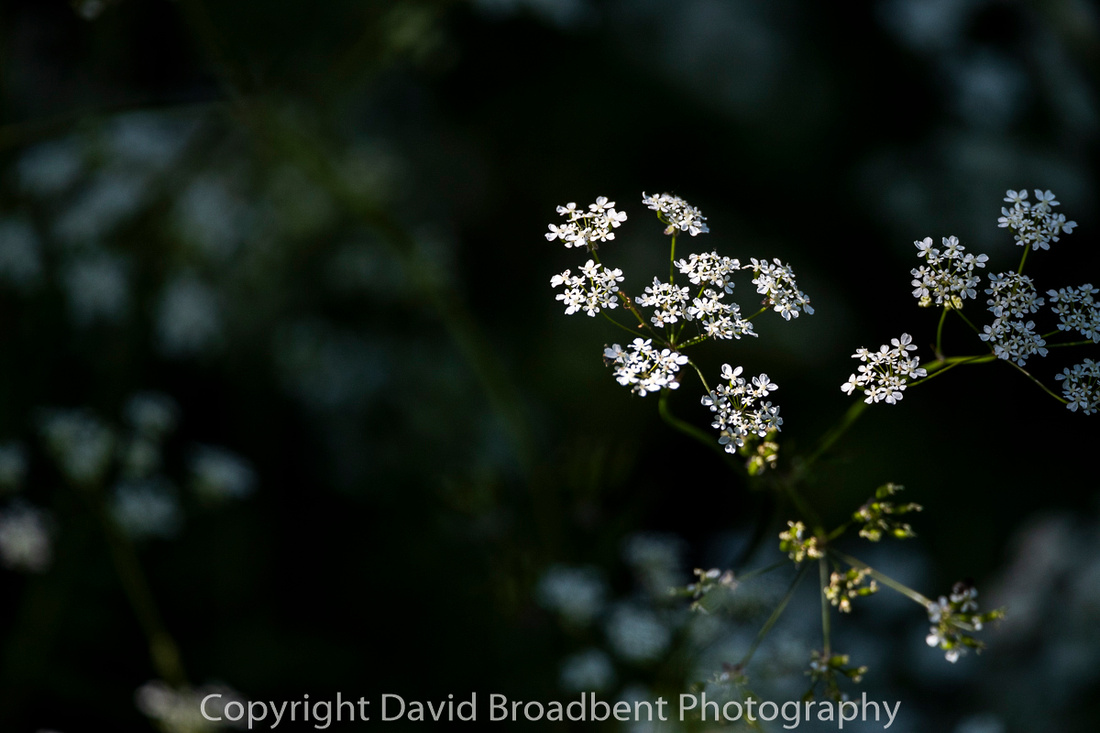
We started by keeping what is good. You can’t do that if you don’t know what is there. This means, great news, doing very little for a year. We did mow – mistake – but much more of that later, oh and we trimmed hedges. In that time, we learnt an awful lot. We learned where and how to rest in the garden, we learned that the mature fruit trees and boundary hedgerows were a real plus for us and the wildlife. And, we learned what a great space it was in which to play and enjoy relaxation time for ourselves and with our friends.

Our garden is not and will never be a show garden. But it’s ours and we love it. That’s about as complex as it gets for us and in the coming weeks we’ll expand on the trials and tribulations of turning a village plot into a Mars bar.
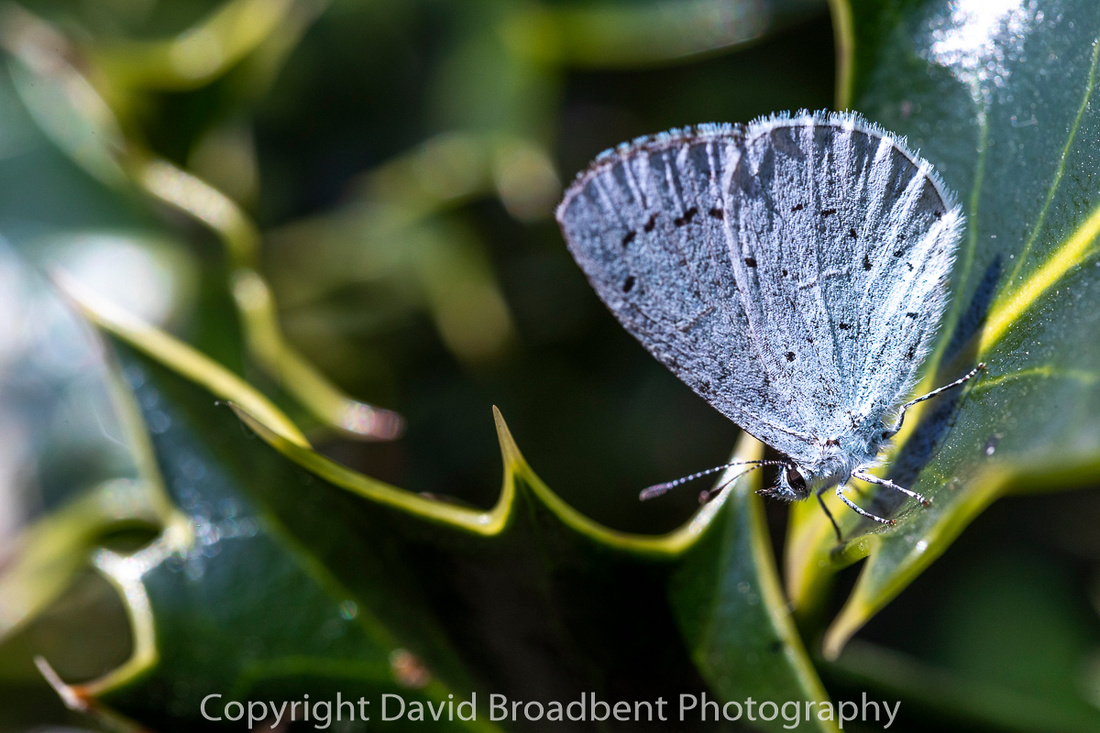
We set out to ensure that at least half of the garden was dedicated to a pollinator friendly space. A place where insects, amphibians and mammals could call home. And crucially, a place that didn't come with much in the way of maintenance demands! I was asked at the time to write about the transformation of our small garden plot. The challenge of providing a monthly column was very useful, since I had to, in effect, document the monthly developments resulting from what we did and didn't do. Providing a haven for pollinators doesn't have to be hard work. Over the years I had read all of the "How to" books and skimmed off the turf in back breaking afternoons. None of it worked. But back in 2015, I worked out the secret. Let nature do the work. There is a hero plant in re-wildling and it's called Yellow rattle.
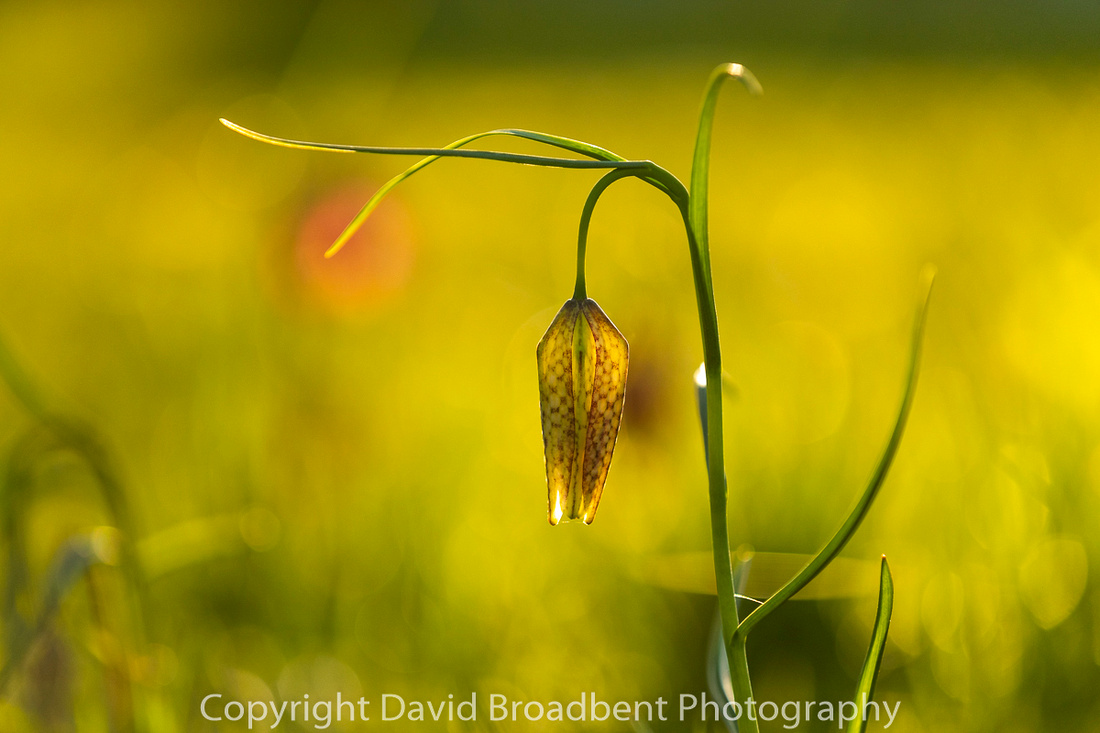
Fast forward to March 2020 and as the full implications of Covid were beginning to sink in, it was to the garden I turned to keep my photographic activity alive. Now instead of words, I photographed the garden everyday throughout the lockdown. Each day something new inched closer to perfection and each day provided a whole new subject and distinct lighting.
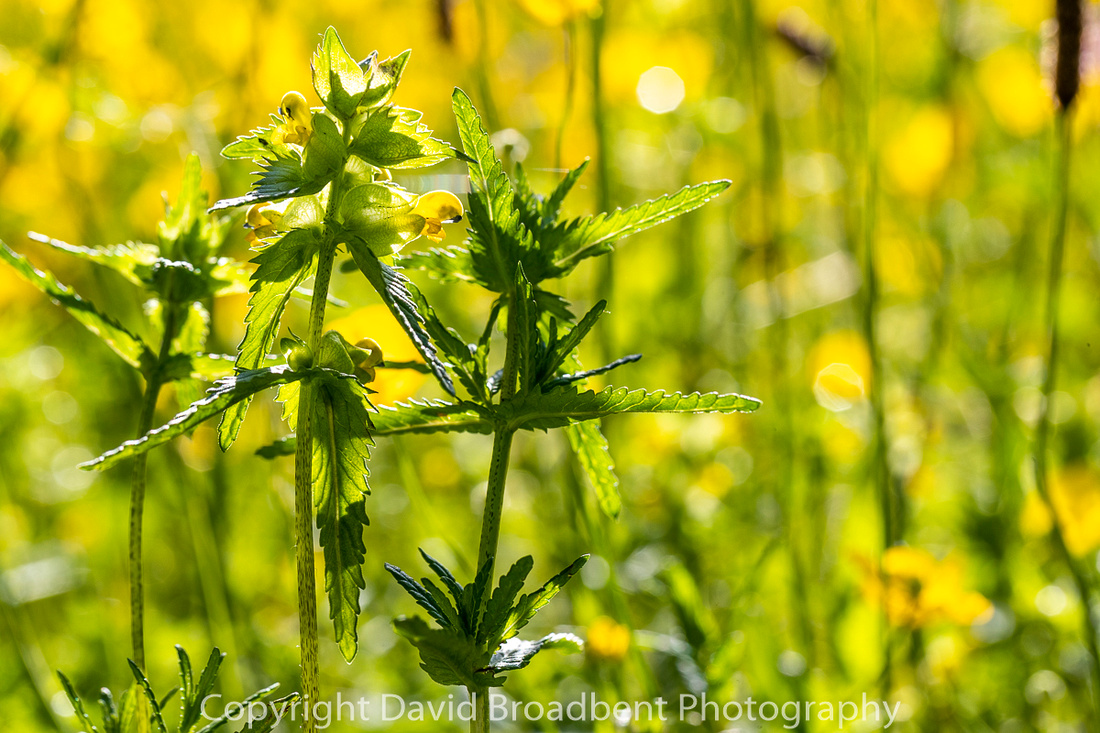
It's also good for the soul. I haven't ever met a wildlife gardener who worries too much. It comes with the territory. You worry less. About what it looks like or what people think. You just take the joy from it. The joy that you are doing your bit in rewilding your patch. But most of all I take the joy from lying in the hammock, amongst the wildflowers and the heady buzz of life that should exist in a proper meadow - albeit a mini one.
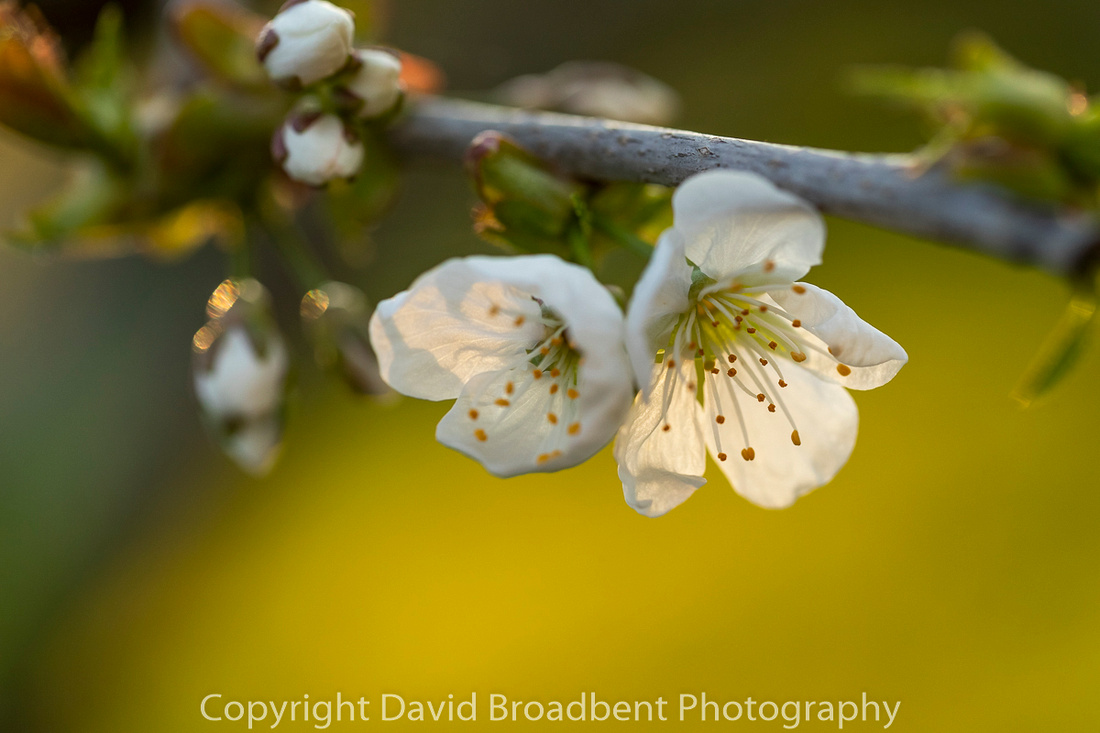
This time of the year at Rose Cottage Garden is always a rewarding time. Winter is well and truly behind us and now we see the first encouraging signs that our plans for a wildlife and pollinator friendly garden weren’t all just pie in the sky. The seemingly unstoppable freight train of spring rolls on. And, as the daffs fade and disappear beneath the racing lawn they were planted in, so the Primroses and Snakes–head fritillaries planted along the fruit path give way to Cowslips and Lady’s smock. The orchids, one of which just appeared when we stopped mowing beneath the fruit trees, are showing through the short grass on impressive spotted foliage. Much more so in our garden situation since the soil is still (even though intentionally impoverished) much richer than their native habitat. All of this makes for wild orchids on steroids!

The fruit trees, winter skeletons for so long, are now bursting with blossom and thank heavens for June drop because I don’t think the Conference pear could survive under the potential crop weight if all of those tiny fruits came to fruition.
It’s a little early to tell yet, but we are just holding our breath now for the Yellow rattle to show through. Over the years we have tried everything in the book to create a mini-meadow. Turns out that the best technique is the one nature uses anyway! It needs a cold period to germinate and so our half a kilo of meadow magic rolled around in the fridge for several months before it was broadcast sown into the frosts.
Yellow rattle, so called for its flower and dry seed heads which rattle as you walk through them, is a parasite on the lawn grass and supresses it’s vigour just enough to give everything else a chance. It really works – and you keep a relatively grass sword dotted with pollinator friendly and colourful flowers.
These stories (in italics) first appeared in print in the St Briavels Village News in April 2015 onward. The garden has developed a very great deal since the early days. Last year we counted 70 Common-spotted orchid flower heads in the meadow. Follow the current story on Facebook https://www.facebook.com/RoseCottageGardenDiary
]]>

OK, let’s turn this thing on its head. We are talking about getting the most from your image assets. This is a pitch to SME owners so here’s the pitch first instead of last. Your entire collection of images, videos, graphics and vectors curated and made available to you and your clients and suppliers 24/7 whenever you want. Images quality assessed, curated, search engine optimised and held in cloud computing to enable smooth and efficient usage and sharing by anyone you decide needs access and you don’t have do anything else. All for the cost of a single monthly coffee.
Before you decide it’s not for you just read the next paragraph.
OK, so you are feeling good about yourself, your website is looking good and you are all over social media. Your web designer has included your favourite pictures in the main website – it’s what it is; and provided you with a user gallery which you can refresh – there’s the gold – right there! Life never is constant is it. If we didn’t know that before, we went to the school of hard knocks in 2021. BREXIT, the pandemic and the anticipated staycation explosion all surfaced.
I have a question for you; does any of your online content cover these issues in the keywording?
The Overview
Having made the commitment to commission quality professional images – what do you do next?
I have many clients who commission me for interiors, food and drink, lifestyle and travel themed images for specific projects. Those images, already loaded with relevant keywords, generally go straight to the other design and marketing professionals in the chain and the outputs are there for everyone to see.
But those images, video clips, time lapse sequences, graphics and vectors are assets. And, as every entrepreneur and business owner knows, assets need sweating and managing to get the most out of them. Peculiarly images assets tend to live longer than most, they have a longer relevant life, they are fairly low cost to acquire and far more than any plant or equipment, they speak! They speak about the quality of your business; they speak about your passion and they speak about your commitment to the service you offer.
Why then do many business owners keep these valuable assets in the digital equivalent of a shoebox in the attic? Used for an immediate project and then stored away, sometimes in a retrievable form, but forgotten. Those assets can supercharge your social media, maintain engagement and perform chatty news-style updates to you followers, inform your newsletters and every inch of your marketing activity.
Ever struggled to find the image that you need for a new project? Forgot where you put the folder with it in? what hard drive? What computer!
FAQ’s
What is it? – Gmail based cloud storage for media assets used for project collaboration by some of the biggest names in global business.
Why would I do this? – any image file takes up a great deal of space on your hard drive. Much better to create your main archive and stash it away somewhere very safe and then just access a cloud storage.
Why can’t I do it myself? – you can, well some of it. You’ll need some software to help you do it efficiently. And Google have gone back on their pledge to offer the service for free.
How do I share? – Want to send new images to your web designer, the local rag and a trade magazine? Just provide an email for those you wish to share with. Share indefinitely or for a time limited period, close permissions for anyone you no longer want to have access.
What do I have to do? – Not very much! Just supply what you want stored and available and tell us about your media and your business.
When do I pay? – Up front for the year.
Can’t I get a free Gmail drive? – You can indeed for a limited amount of storage. High resolution images, movies, and time lapse are BIG file though. This is why, as industry professionals, we choose Google to share vast quantities of data. Google recently updated their terms to open the door for charging for storage (BBC 13/11/20). This is a major change for Google. To capture market share from the competition they said “free, unlimited storage for ever!” and spent hundreds of thousands of dollars on storage capacity. Apple for example charges an outrageous fee for big storage capacities. None of us in the media industry thought Google's pledge was sustainable – a case of if it’s too good to be true….. In fairness to Google the service stayed free for a much longer period than any of use thought.
What if things change? – you paid for a year; you get a year. We’ll ask you if you want to renew 1 month before expiry. If not, we clear the drive and wish you well.
What do you do for the money? – We pay the Google fees and then we collect, curate, assess, advise and report on image quality (if we haven't shot them), initial and updated keywording, being Gatekeeper for your image back-up assets, dealing with problems, sorting out misuse and copyright issues, archiving, off site back up, loading to the cloud, loading to a client area of our own image website to maintain an online presence 24/7, backstop your problems, provide marketing advice on usage and where your collections are underrepresented - did I miss anything?
I use Dropbox or WeTransfer. – All perfectly adequate file transfer systems and they are free until you start to use them regularly. Often users upload the same images over and over again to different PR, social media and print companies - it's madness! Work smarter, they generally lack a library capacity and of course there is not much in the way of editable curation and/or keywording.
What if I lose all my stuff? – It happens but we have your back up.
What if the Cloud fails? – no one on Planet Internet likes to talk about this. But it has happened and data was lost. If it happens, we have your belt and braces back up of your archive and can reload the whole lot if necessary.
How come you know about this stuff? – 35 years’ experience in film and digital imaging supplying agencies, books and magazines around the world has left its mark.
Keywording? – Do not get cornered at a party by a keywording expert! It is the text embedded in a picture that tells search engines what is in the picture.
The Background
When digital first landed imaging professionals in publishing, stock photo, news and media were already well acquainted with a very efficient analogue storage and retrieval system and the bones of that system together with the new bits digital offered were simply transposed to the digital storage of media. It’s called IPTC data.
It works like this…The Daily Mail wants a picture of an aggressive looking youth to scare the bejesus out of its ageing and introverted readership. First it needs to find such and image (caption - searchable), then it needs to discriminate (no pun intended) this image from others (filename). Once printed, it needs to pay the copyright holder and so it needs to know who the owner is. If a camera magazine wants to use the same image, they’ll need the above but they’ll be just as interested in some of the data. What camera was used, did the flash fire and what was the f-stop and shutter speed. All of this guff is (or should be) already loaded by the photographer, behind the scenes in the image - it's called metadata. Sadly, from my experience of managing client collections, the marketing potential for this optional information is seldom covered adequately.
When Google and other search engines “look” at a picture, they don’t think - Oh look, there’s Uncle Ben standing on the top of Mount Blanc in his skiing gear!
The Internet searches text. All Google sees is the filename, caption and size of the image in pixels (e.g., 3500 long by 2400 tall) and how many pixels per inch the picture has – the resolution. It knows the “map” or code of those pixels too and what “colours” they represent. To avoid looking like a blunt instrument when it comes to trawling the world wide web it crucially also relies on the IPTC data. So, it’s not Uncle Ben per se, but the IPTC data (mountain, Mont Blanc, adventure, Mont Blanc Guided Tours, male, adult, mountaineer, .....etc. etc.) that really wields the power in terms of Internet search engines.
The Detail
When things change in image terms, which is always by the way, picture editors scramble for relevant content. Generally, the first place they look is their own libraries and then the agency’s, Getty, Alamy, PA Media etc. using the relevant keywords for that particular issue. People like me scramble in real time in the parallel universe to update our image assets with every single relevant keyword we can think of.
Is this a job we could do tomorrow? That thought means, you lost already. Let’s put that in perspective. Captain Sir Tom was one day’s news when he died and he was another on the event of his funeral. But, if you are in marketing, those one day windows are the motherload.
How do we do it? You send us your images however is easiest for you. We look at them, we asses them and let you know where the technical quality of the collection sits; we catalogue them; we keyword them in consultation with you; we make the keywords visible for you by loading them to archive galleries on our own website; we format them to create versions of the originals optimised for social media and press – which we share with you; we load them to a cloud computing folder just for you so that we can update the image keywords; we maintain and back up your archive and we provide marketing ideas.
What we are not. Sadly, IT can sometimes be as challenging for us as it is you. We can’t offer (in this package) support in computer use, training specialists or social media gurus. But we know lots of nice people who can do that too.
If you don’t want to take the service at the moment please at least revisit your archive and ask yourself some of the questions above.
Ask about our terms [email protected]
Sources: BBC online 13/112020 Google Photos abandons unlimited uploads.
]]>
Lost Works
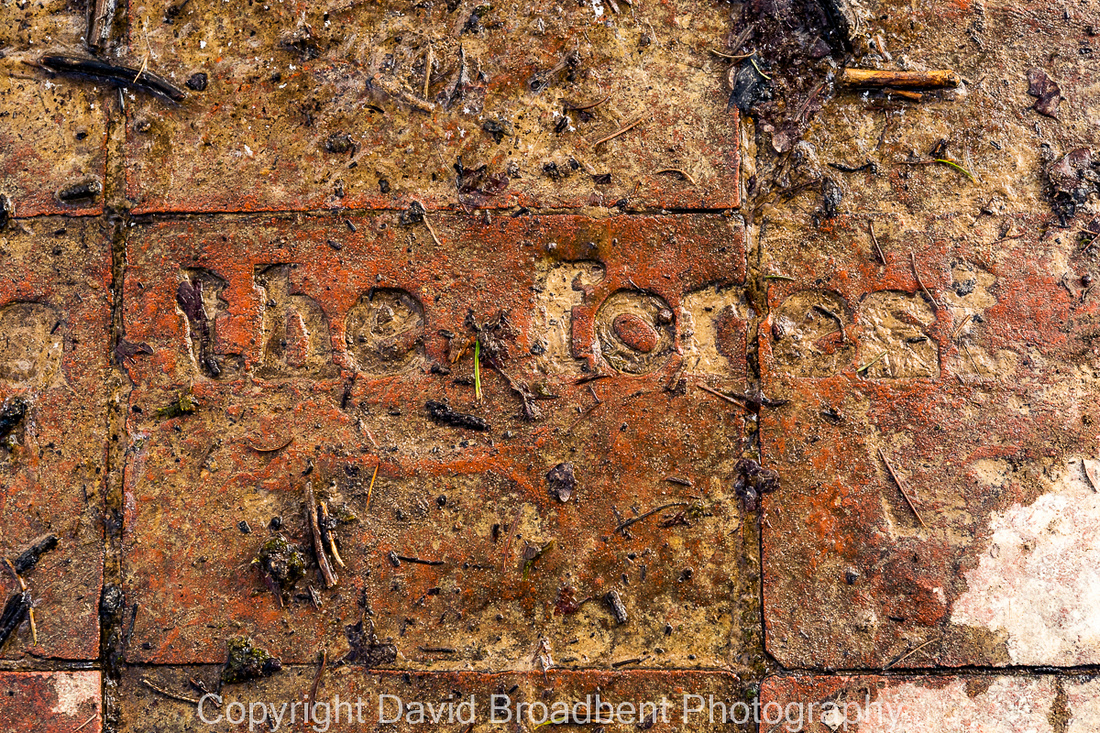
It’s great to “find” something isn’t it? Where does that come from? Self-interest or the instinct for survival or the thrill of getting lucky?
I was out in Speech House Woods during the last smattering of snow that in these climate change days the news likes to call “heavy”. The ground was unusually covered in fine white powder beloved of skiers. The forest looked glorious in its coat of bare bones winter beautiful. Speech House Woods is home to the Forest of Dean Sculpture Trail and I’d been asked Cathy Mager – Creative Director at the Trust, to photograph the Natasha Rosling work “Threshold”. It’s the newest work on the Trail and hadn’t yet been photographed in a winter setting. The Trust maintains an archive of its works and development housed at the University of Gloucester.
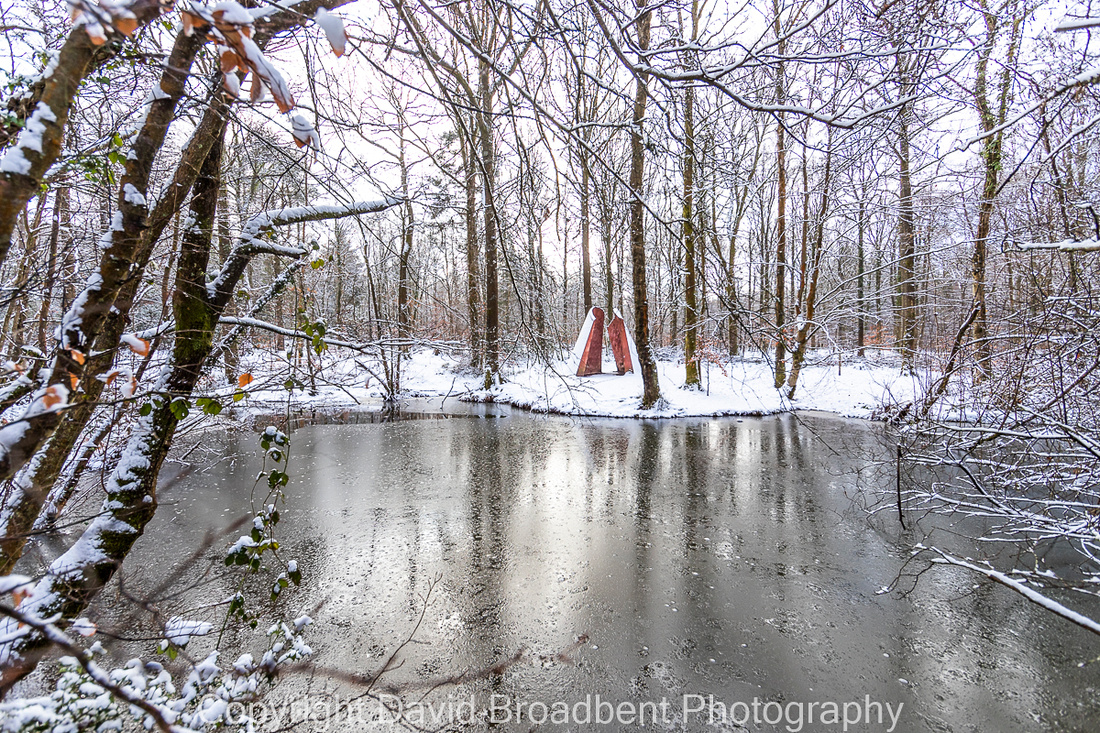
I couldn’t wait to be honest. I’d been involved in documenting the installation of “Threshold” since the start of construction. Having photographed the artist, her team and Natasha’s creation in its various stages we’d already discussed how might through the seasons. The dyed red concrete body seemed to glow in the stark crisp white of the snowfall, which had itself been windblown and drifted up one side of the sculpture. The drift coated almost the entire windward face leaving only the rose red edge exposed emphasising the angled gap between the two walls.
It’s such a striking work in such a great position. I’ve been intrigued right from the beginning to see how the finished work, with its cast textures of Clearwell Caves on the inner faces, would look as it matured into its location. Fascinated to see it in all sorts of weather and light conditions as nature reclaims the site and gathers in around it.
I remember also talking to Natasha about her sculpture, her first major public piece. In conversation with all of the artists of permanent works on the trail I’ve always been fascinated to hear their views on the legacy they are creating. These large commissioned public pieces live for a long time. Possibly even longer than the artist themselves. Some of the artists haven’t spent much time thinking about this issue so consumed as they are in the creation of the work to an opening deadline. For some reason, knowing of this legacy, and how it feels, has always piqued my curiosity.

Anyway, good snow is a fleeting thing as our weather patterns change and so I took the opportunity to spend some time out walking the trail. The young terriers accompanied us and were loving their first taste of a proper snow fall. All of the scents (and sounds) of the forest and its animals are heightened as the snow covering deadens the forest floor. The dogs where in hyper mode straining at the ends of the lead. We were having a very pleasant day indeed! All good things come to an end though and so having revisited several art works on the trail, we took the route less travelled and cut back toward the car park along a minor, wet and muddy track.
Here, along this sodden path, lined with a tangle of timber limbs blown out of the canopy, we found something. We didn’t know it at the time but we had stumbled across “Farewell to the Forest”.
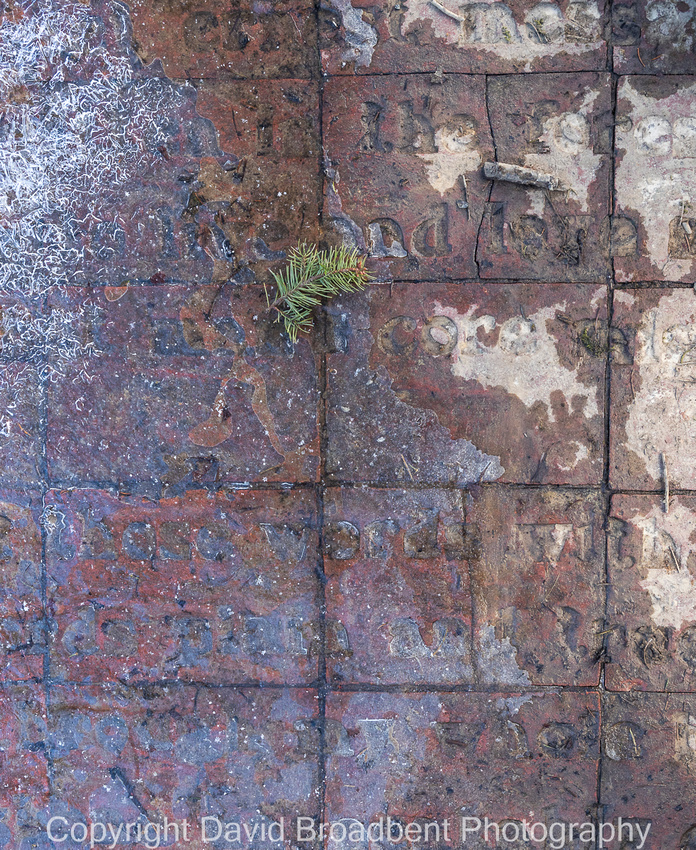
Obvious in the landscape because of its geometric contrast to the jumble of the forest floor, mud and footpath ruts, but also blended and camouflaged into its surroundings – “Farewell to the Forest” is a brick path constructed in warm coloured clay bricks inscribed with the lyrics of a German folk song.
So, we had definitely found something. Something that was placed into the landscape, a sculpture viewed in two dimensions. But not something that I had ever read or heard about. Later I asked Cathy about this find of a brick pavement in the woods and she told me all about it.
The sculpture is by an artist called Reinhild Beuther and was part of a curated collection of works for the Trust from the years 2000/2001 – so 20 years ago! Respected artist Neville Gabie brought together s collection of works under the exhibition theme “Underneath”, of which this was just one.
“Farewell to the Forest” translates in German as “Abschied vom Walde”. It’s the title of a folksong by Felix Mendelssohn Bartholdy from the early Romantic period with words attributed to Joseph von Eichendorff. The artist Beuther knew of this song because of her German roots. Her mother used to sing the song that speaks about the forests as both good and scary, laden with resource and myth. Beuther wanted to link the similar traditions of the forests of Northern Eastern Germany with those of the Forest of Dean. She commissioned a local brickyard to make the pavement. Each inscribed brick handmade and imprinted with an English translation of the folk song. At the time, singers were invited to the forest to perform the song in its original tongue. This must have been a great thing to have heard in the woods under the shade of a large Beech tree.
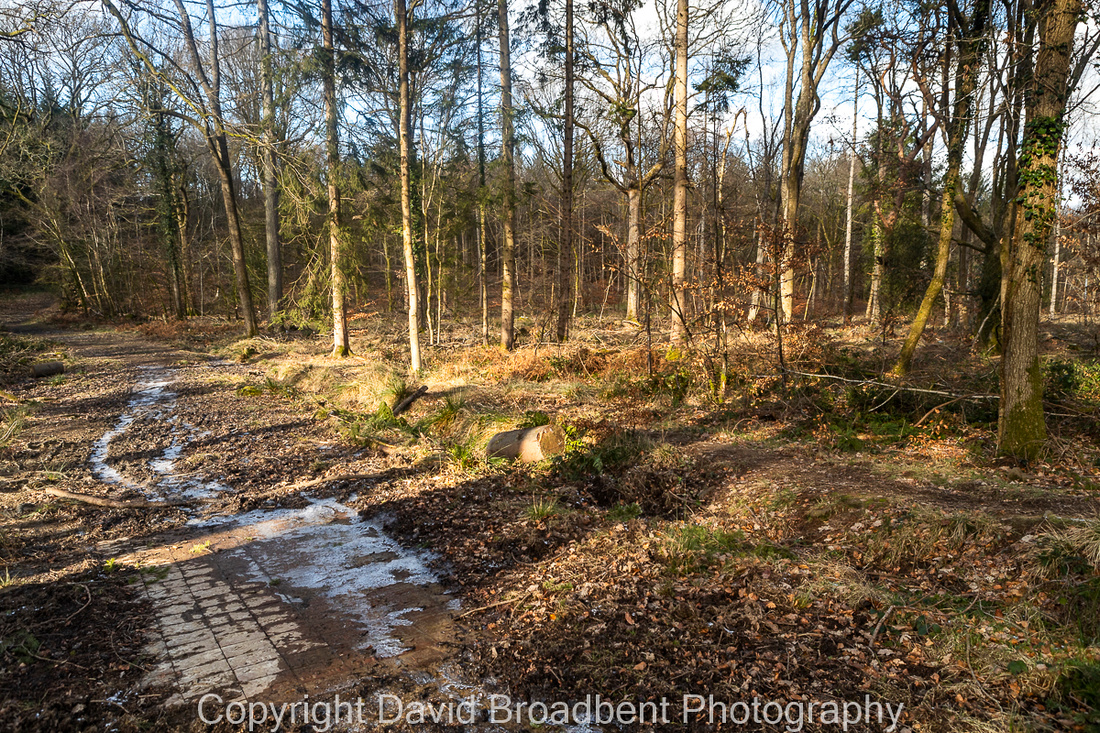
In pictures of the work from the time of installation, the perspective shows the work as flat and level in the ground. When you visit this art work you’ll find that it is anything but. Rather, it is on a sympathetic gentle incline of the track itself as it heads in the general direction of the Speech House Hotel. If, as we did, you find the sculpture by walking up the bank, the imprinted lettering is more obvious because of the angle than it is from above.

The work is “lost” because it no longer forms a part of the official sculpture trail and so it doesn’t feature in the trail guide or information. Sculpture trustees considered restoring the work a few years ago but decided to leave it undisturbed. Actually, I like that it’s lost. I like that there is something unexpected to find walking the sculpture trail. I like that there is an enigmatic piece of art that is there to be found again and again by everyone who encounters it. I like that I had to ask questions and research to discover more about the brickyard piece and I like that not everything on the trail is in a leaflet. There is mystery and discovery in art anyway and finding a work that is new to you is really exciting! This work is lost but it is not the only lost work on the trail. Do you know of others?
And then there is that legacy question again. I’m sure that Beuther didn’t expect her work to live forever. But here we are 20 years on and it’s still there. OK, one of the bricks has cracked and the imprinted text is filled in with forest dirt. Small pieces of the canopy above now litter the surface transforming the pavement as flotsam changes each new day. The incline of the track invites the winter thaw to form snaking rivulets under the ice. In all of the seasons, water run-off chooses a different daily route across this artistic interloper to the forest. Close up inspection of the more delicate areas shows the fabric matrix of the brick is just beginning to show through the smooth and steadily eroding surface. Imperceptibly and in a geological time scale, the brick will wear and soften. Soon, the water will find a weak spot and the flow will gather and concentrate along it. Tree roots will disfigure the ground beneath to create undulations and the winter frosts will continue to wither the bricks mineral fabric. One day the text will erode completely, but the work, the idea, the intention is still there –being wonderfully reclaimed by nature. Reclaimed and transformed. Transformed from how it was conceived and intended as a crisp brick surface pavement in a woodland glade into a more mellow piece that is blended and semi-consumed by its surroundings. An intriguing bit of art with German roots is now living among the roots of England in the Forest of Dean – there’s something really nice about that!
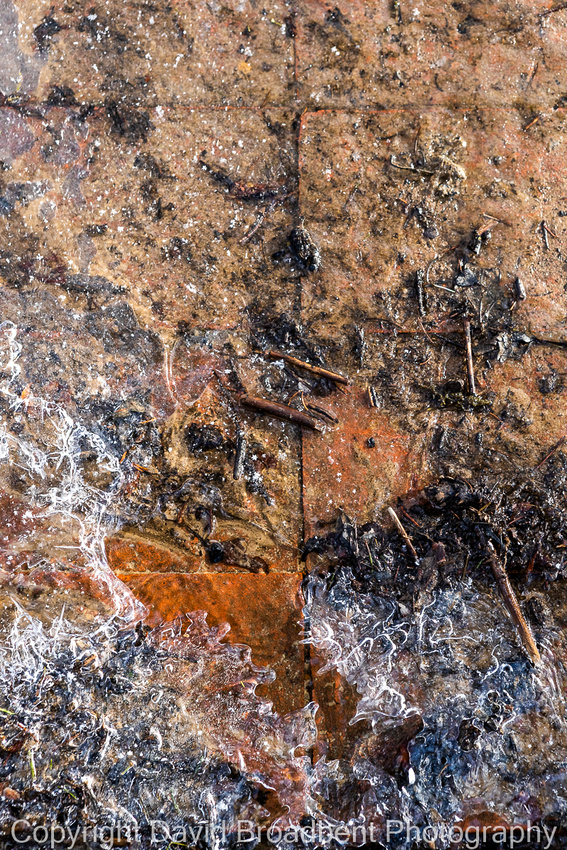
Background
The Forest of Dean Sculpture Trust and Forestry England have worked in partnership for the last 30 years to create this Sculpture Trail that attracts 300,000 people per year. The works, some permanent and some temporary, are specific to the Forest of Dean and are deliberately discrete in the woodland. The idea being that visitors have to seek them out or come across them by chance. The trail guide is just that, a guide. The real discoveries of the works themselves, finding some of the “lost artworks” and how you interact with them is all up to you.
For more information on the work of the Trust and to connect with them via social media https://www.forestofdean-sculpture.org.uk/
]]>
It was a great pleasure to be asked to support our own village version of the global #SupportLocal campaign. This is a movement that seeks to influence the way we all shop and consume services. As well as to remind us about the diversity of products available just around the corner. Some of these businesses have proven to be absolute stars during the height of the pandemic, supplying us all with goods and services whilst in lockdown.
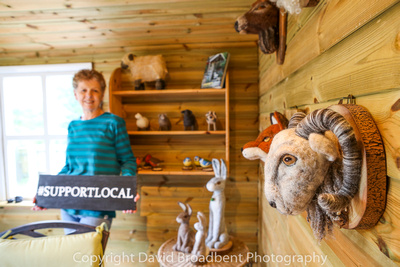
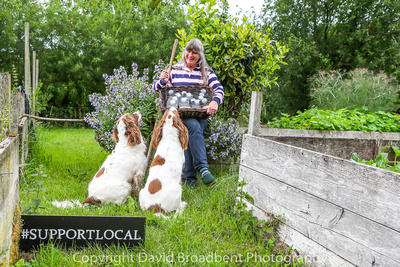
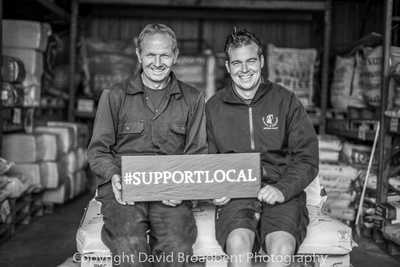
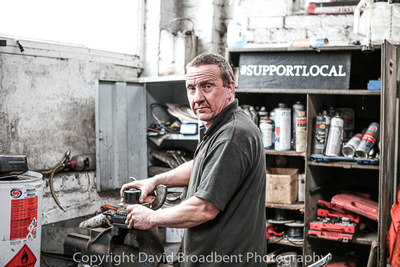
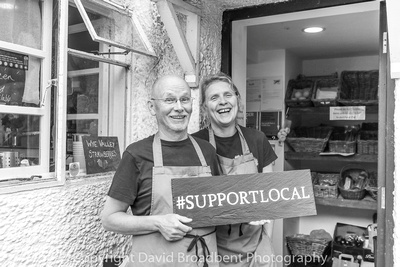
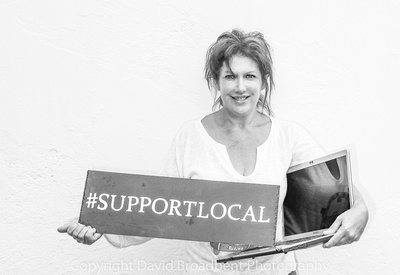
The vast marketing budgets of the multi-nationals enable them to be omnipresent in our lives. On our TV’s in our magazines and increasingly in our social media accounts and inbox thanks to some nifty and no doubt expensive SEO activity. As we all suffer from very short memories, we are already seeing a tendency to drift back to the bigger outlets as the lockdown eases.
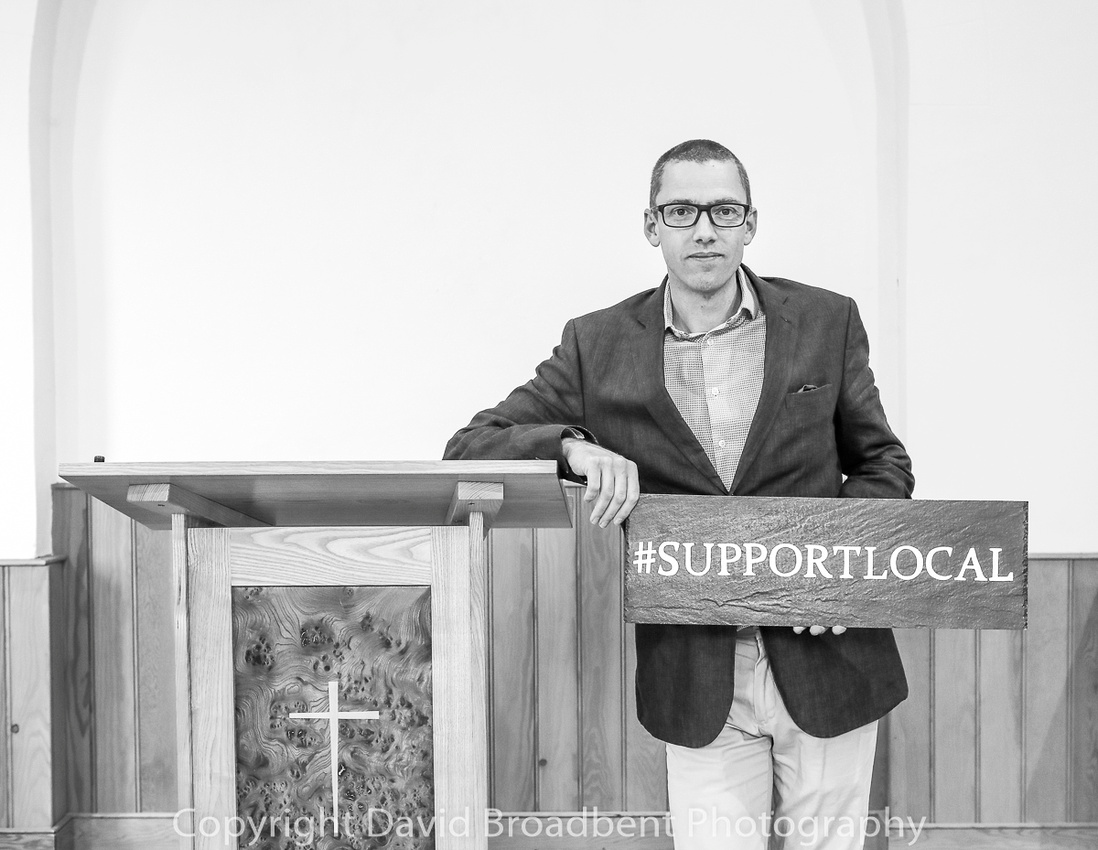
The baton of #SupportLocalStBriavels was taken up by Jo Thompson of Wye Valley Flowers and sought to keep this business within the community not just now but as a long-term behaviour. The Forest of Dean economy has always been dominated and driven by SME’s with only a few large employers, relative to other areas. Even so, it was a surprise that in the first few hours alone 20 odd individual small businesses expressed interest from just one small rural backwater of 1500 people!

So over the course of a hectic long weekend we set out to document, in stills, all of those local business owners so that we could put faces to names, create dynamic marketing content and begin the vital first step in the process – telling those immediately around you that you exist. I think that we did that and more. In mini photo shoots lasting ten minutes we tried to create a collection of images that, although essentially marketing in nature, we also engaging, interesting, informative and amusing.
So how do you approach a collection of quick time shoots to a deadline. The key is to get your subjects to relax as quickly as possible. Relaxed and the results can be natural and warm. The alternative if relaxation looks like a challenge is to be fast! I mean really fast, and tell lies. This is only the test for lighting and composition and whilst your subject thinks you are still getting ready – you are actually getting the shots. For this latter group success looks like total amazement that it’s over already – a sure sign that your believed you were in the warm up phase. As a photographer, you can only be fast if you are prepared and ready to go and ready forever is thrown at you. I always burst the first few because that way the sound of the shutter is more familiar more quickly. But you also have to think of the project as a body of work. How will these images look when they are all brought together. Dynamism won’t be served well by a group of pictures that all look too samey – and so in my mind I mix it up a little as we go along. This is a social media campaign and so I want the pictures to have some sense of immediacy and on the hoof while also creating the idea that the subject is approachable, friendly and good to do business with. Last and by no means least I always want my subjects to feel that their loved ones would think that I had caught their character. We all have a mental self-image of ourselves and reflecting reality can be really uncomfortable for some. Take me for example. I have a very body positive self-image and so avoid mirrors and fleeting reflections in shop windows whenever possible! We all have our hang-ups and self-consciousness to deal with in front of the camera and so I always think that the “loved ones” value is more achievable measure of success.
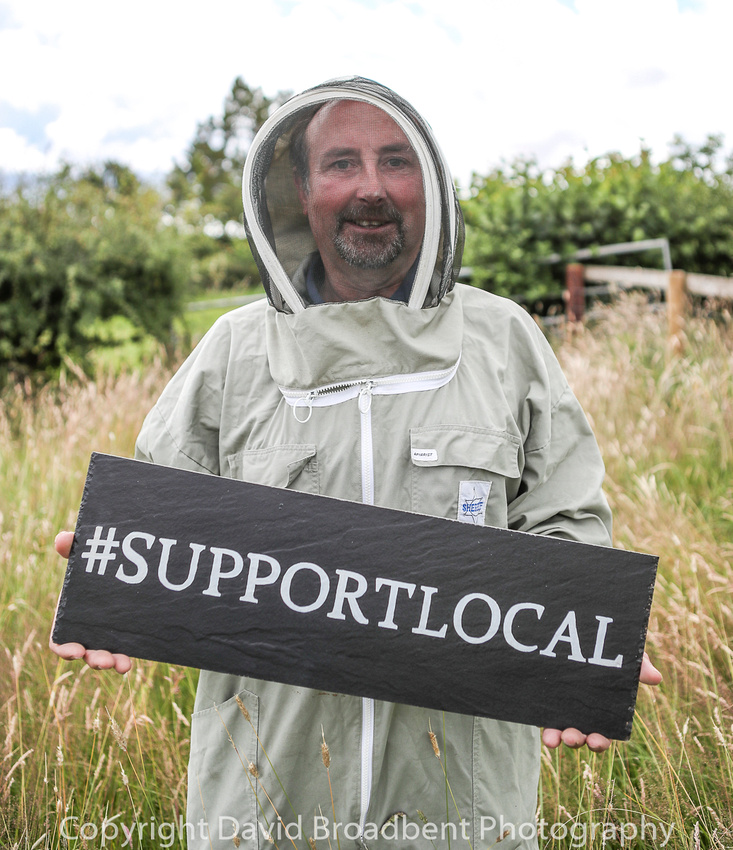
SME business owners are so adaptable, positive and up for the challenge that right here within this group is the enthusiasm required to regenerate our local economies.

Of course, it isn’t sufficient to just be “local”, proximity is only a small part of the equation. Great customer service and a fair price are also major parts of the equation. And the battle is harsh. Urban myth would have the future online and indeed the online expansion is, in part, decimating Britain’s High Streets. I say in part because we’ve all experienced poor customer service in proximate businesses. I don’t think that price is as sensitive as some think either. As long as the customer sees value for money in the whole package, they are prepared to pay a fair price for goods and services.

For traders is about being entrepreneurial, positive, customer and service focussed and making it very easy and enjoyable for customers to do business with you. There is a potential to fill the ever-growing high-street void with local.
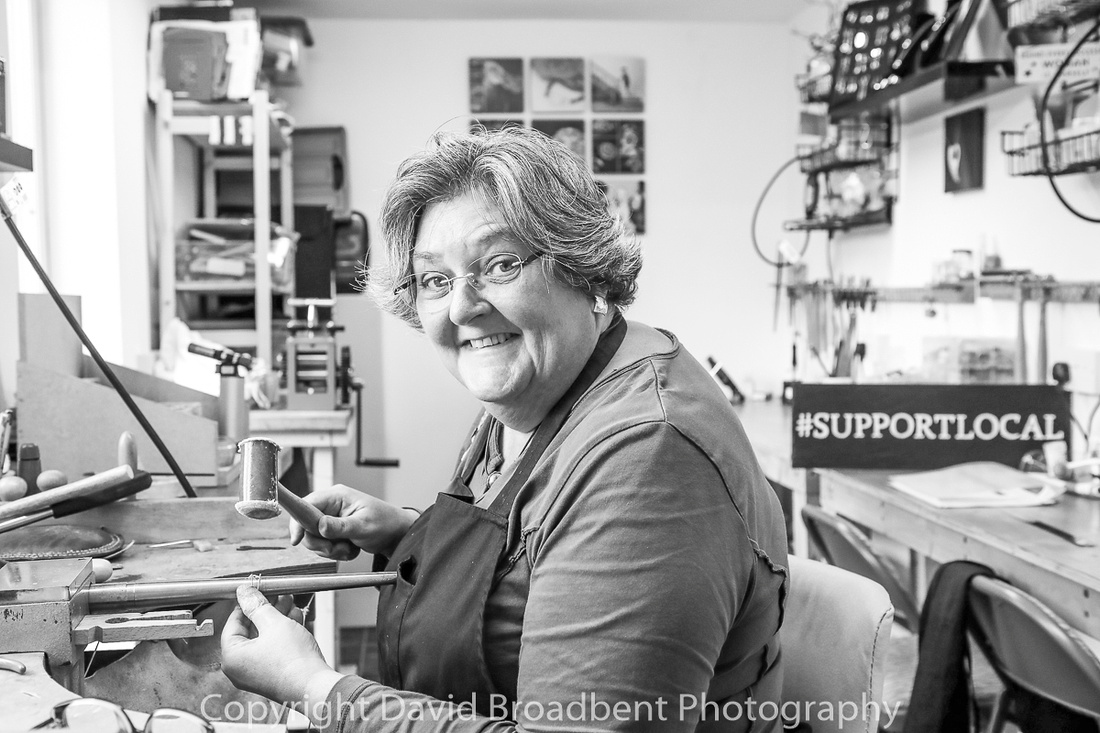
As the conversation grinds on and councils and landlords’ step into the ring for what promises to be a brutal match -up about what our High Streets will look like and what function they will perform in the future, the high street dies one shop at a time. Are the high business rates, planning or the landlords sitting on capital value to blame? Who cares who is to blame when you’re only focus is fighting the infection. Blame is a thing for later.
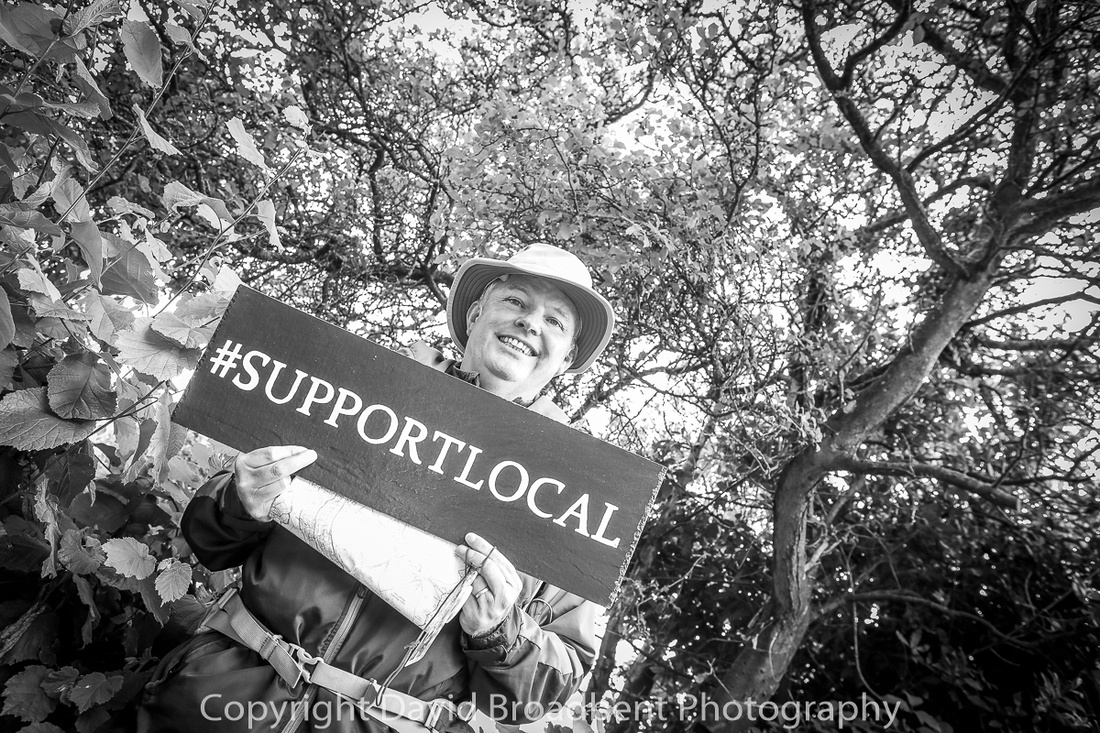
Maybe local hasn’t been seen as a viable option for the local regeneration process but what #SupportLocalStBriavels has shown is that this sector, although small, are mighty together. They can, given enthusiastic individuals willing support and a fair wind organise, promote and market like any other business. Their route to market can be much less complicated, their service quicker and more personal than lots of the competition. But they do need a fair crack of the whip when it comes to marketing support and getting the message out there. So, government maybe missing a trick by seeing all of these SME’s as too fragmented, too geographically diverse and difficult to deal with because - organised – they are more akin to a sector wide approach. The good news for government on a national and local level as well as trade bodies is that we are self-employed. We do what the self-employed do really well - offered an opportunity, we innovate, we motivate, we are quick to react and above all else we do stuff!
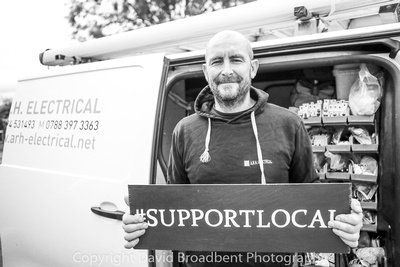
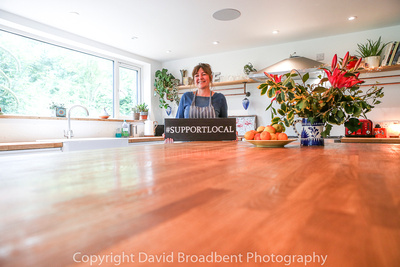


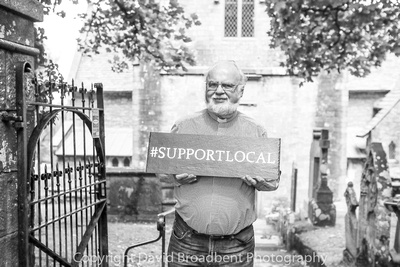

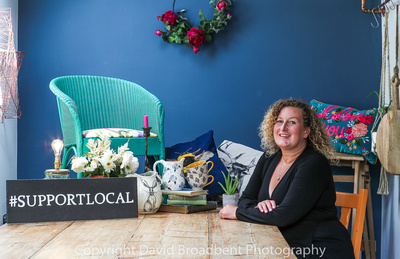
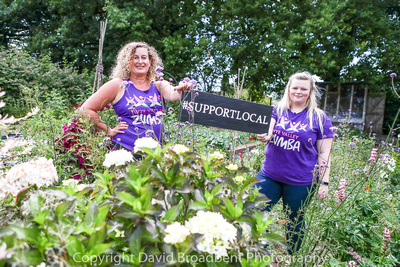
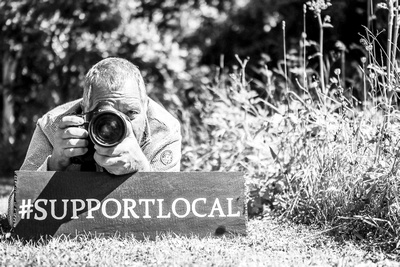
David Broadbent
Business Images: Made by Mo - Mo Parker, Cinderhill Farm - Debs Flint, Parry's Haulage and Feeds, Darren Wasley Autos, The Pantry, Karen Biddle - online tutor, St Briavels Congregational Church - Matt Rees, Emma Nelson - White Feather Property Management, Stuart Skinner - beekeeper and pest control, Wye Valley Flowers, Wye Valley Campsite - Jess and Jo, WyeMade Jewellery - Ann Skehel, WyeMade Outdoors Mike Skehel - Mountain Leader and Navigation Trainer, ARH Electrical Contractor - Alan Herbert, George's Secret Supper Club, Youth Hostel Association - Linda Harrison, Barnby Fencing, St Mary's Church - Minister David Rees, Cowshill Farm Shop, Frank & Minnies Interiors - Jo Davies, Wye Valley Zumba - Jo & Harriet, yours truly.
Links
#SuportLocalStBriavels
#SupportLocal
https://twitter.com/MarkWhittleFSB
https://twitter.com/FSBGlosandWoE
Paul Scully MP Minister for Small Business https://twitter.com/scullyp
Mark Harper MP for Forest of Dean https://twitter.com/Mark_J_Harper and [email protected]
]]>
- Adhere to government guidelines and advice
- Practice safe working for all
Coronavirus has, and probably will, change the way we work for the foreseeable future. But, as people, we still need to be fulfilled by learning new skills, having new experiences, social interactions and, of increasing importance, being immersed in the natural world. Some of the things we used to do during photo school training will no longer be advisable as we rebuild our programme. For the safety of everyone, you, me and anyone we encounter we have devised a strong working protocol ready to emerge from the crisis. This is a protocol that we had devised and used successfully prior to the lockdown for those courses than ran immediately prior to the stay at home order.
We are getting ready to welcome you back into the Photo School. Here are the details of our protocols which we hope will give you the confidence to get back out into nature and improve your photography:
For the time being we will only be offering One to One training in the great outdoors. You may still bring a friend in line with government guidelines at the time (from the same household at the time of going to press). Our select locations are isolated in normal times and it unlikely that we will encounter many other members of the public.
When attending a course, you will not be displaying any symptoms of Covid-19. If you are, we will reschedule free of charge or give you a refund. You can be confident that your instructor is not displaying any symptoms of Covid-19 or the course will be cancelled and refunded. If you believe that you have had Covid-19 and recovered please let us know the details of your illness date and duration.
You may wear whatever PPE you think appropriate for you during the course. Hand gels and bleach wipes will be available throughout. You’ll be asked to use hand gel prior to starting the course as well as at the end (recommended).
You will be asked to arrive at our meeting point in your own transport.
The meeting point will be in England. Restrictions in Wales are, at the time of going to press, different to those in England. We are following the advice for England as per the gov.uk website.
Our hotel pick-up service has been suspended for the time being and you will not be asked to car share with the instructor.
Two metre social distancing advice will be adhered to. It’s not that far apart really and easily close enough for safe learning.
No equipment sharing or handling is possible between you and the instructor to negate any contact contamination. Clear instructions and help are provided so that you can make any necessary changes to your equipment. It may take a little longer but it is valuable learning in that having done it yourself, you less likely to forget it.
You’ll be required to relax, improve your mental wellbeing, breath in some fresh air, ask lots of questions and have some fun.
Free online support and backup is available post course.
If you have any worries or questions, please just ask.
David
]]>
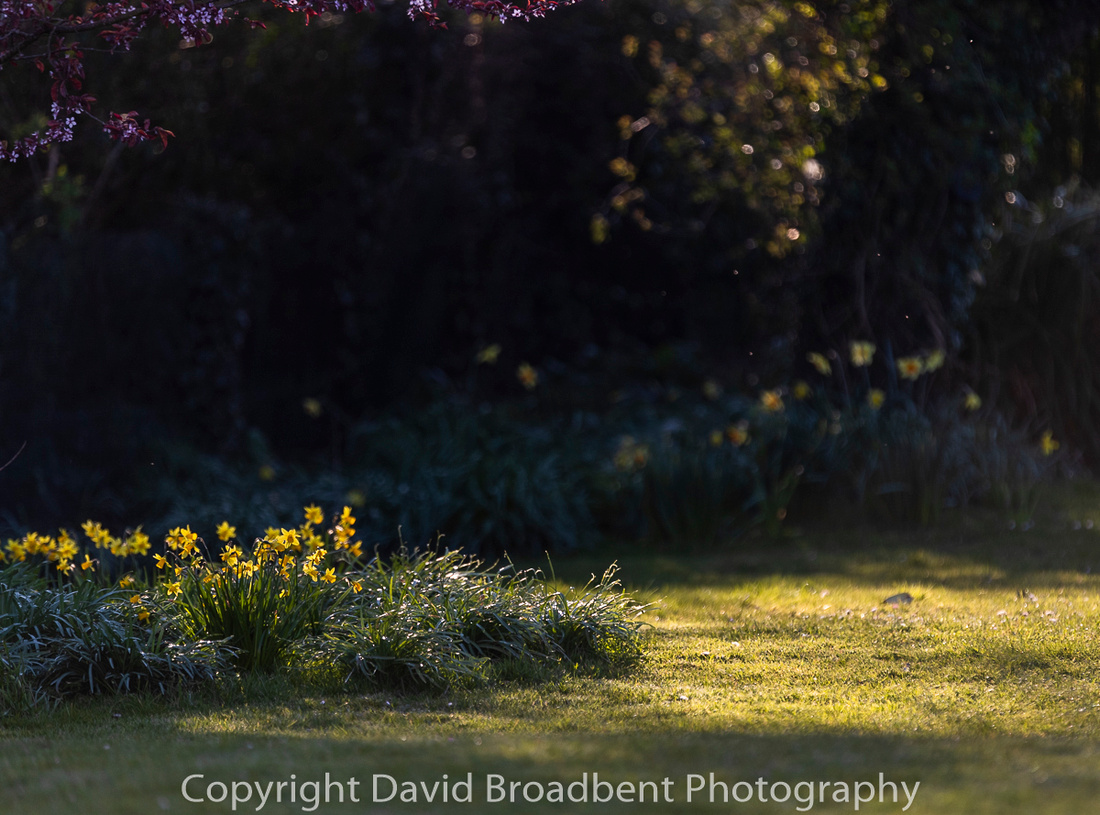
People often dismiss the places like gardens, parks and local walks. They are too familiar and surely somewhere you have to travel to is much more interesting - right? But it is the familiarity and locality of places closer to home that make them so appealing. We have the opportunity to return to a shot if we think we can improve on results from last time, we can visit easily in different lights, it doesn’t cost anything and most of all we can observe. We can watch for a shot developing, see what time, weather and light will be ideal and we can experiment with technique.
Over the years I have been attempting to create wildlife meadows on and off for years. I must have read all the books and in the end the key to success was simple – Yellow rattle! Having cracked it I now have a wealth of subjects to photograph and the great news is that they change every few days! It starts with the Celandines, primroses, the Snakes-head fritillaries, then the cowslips, the Pasque flowers the Cow parsley and then the orchids.
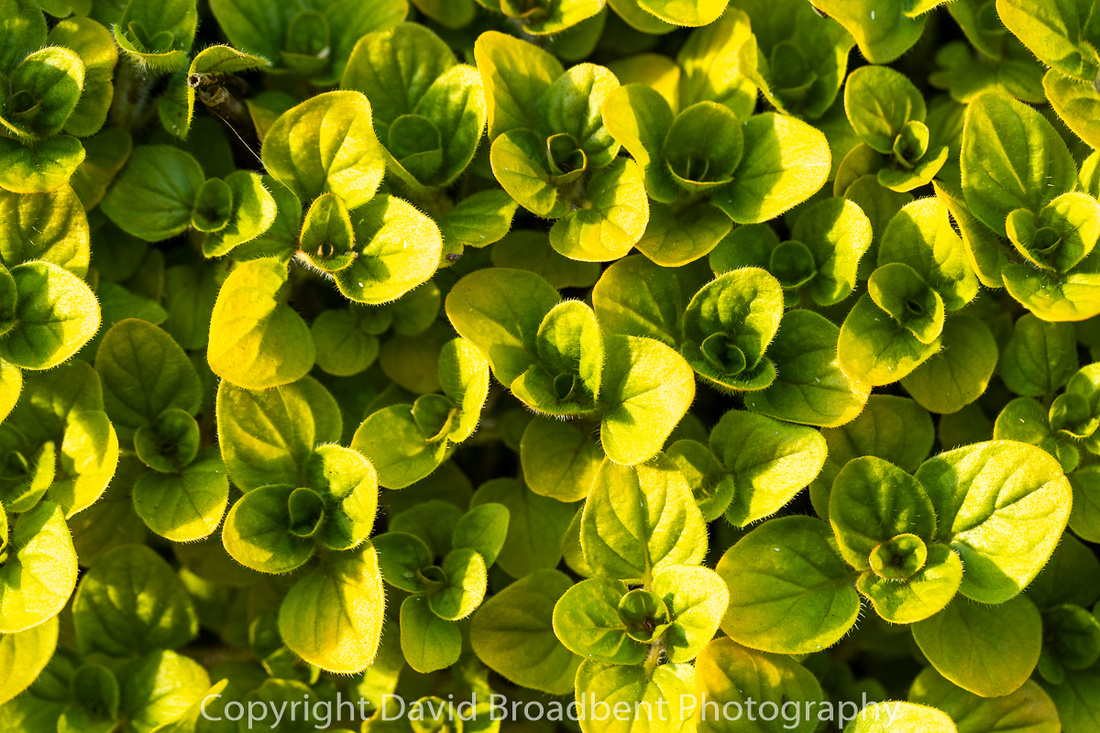
In the early mornings and late evenings, I can hang out waiting for the right light to illuminate whatever is looking its best that day. And on lucky days I get to shoot some insect pictures too.

But you don’t need a garden necessarily, although if you feed the birds, you’ll have an ever changing gallery of feathered friend pictures. Your daily walk will become surprisingly familiar to you just because you are walking every day. You will start to spot interesting subjects and watch them develop. You will know what gear you may need so won’t have to load yourself down with everything you own (something I always teach on our group and one to one sessions).
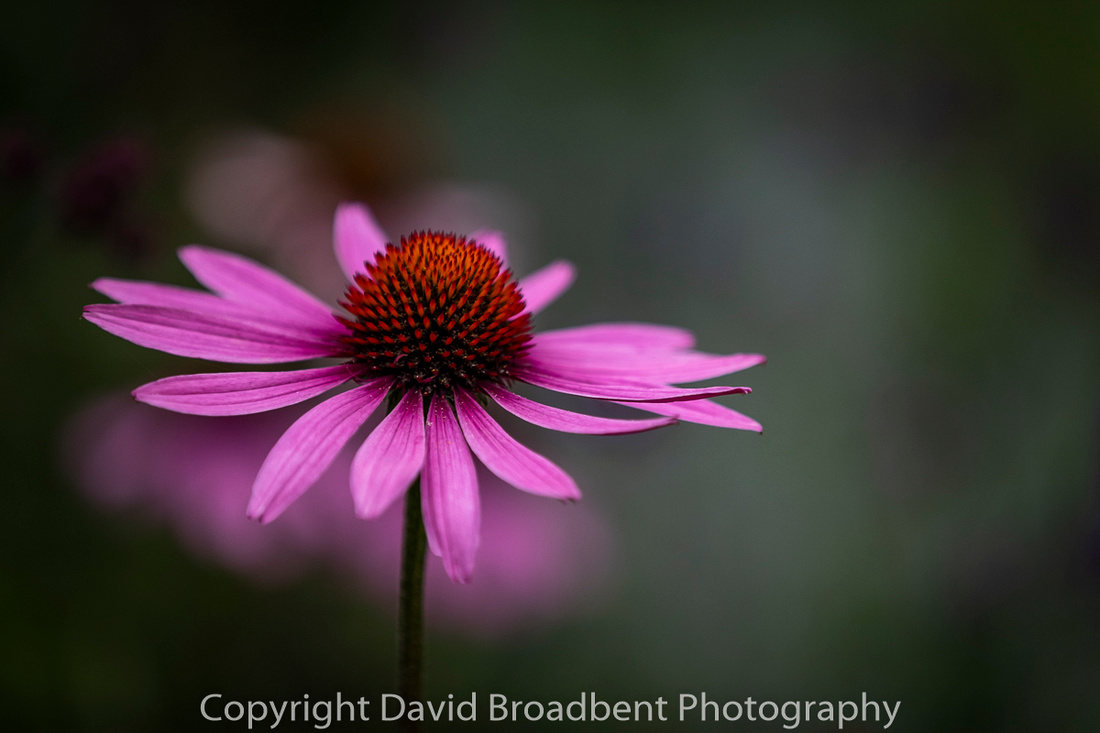
Here are my top tips for photographing your garden.
Rose Cottage Garden Diary
Early morning and late afternoon sunlight can bring out the colours and details in flowers and foliage.
Backlighting adds a sudden drama to pictures and often highlights details we normally overlook.
Chart the development of a subject e.g. apple blossom from bud to opening to fading to tiny apple.
Experiment with aperture. Photography is subject to the whims of fashion like everything else. Wide open apertures on standard to telephoto lenses give a very modern looking shallow depth of field and clear the backgrounds by blurring.

Look for a new take on the mundane. Everyday jobs and objects take on a dynamic look if you can come up with a different angle on them. Experiment with a soils eye view of someone digging, strimming or weeding.
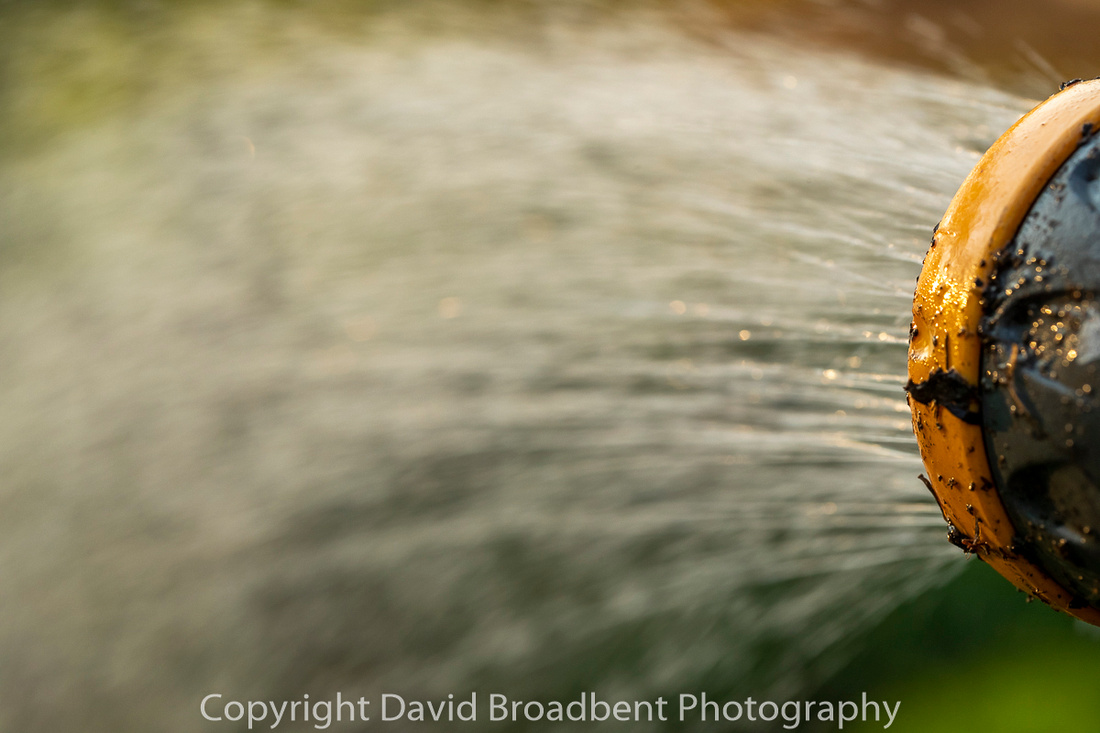
Weeds are only weeds if you don’t want the right there! Weeds are plants like everything else and generally they are more important to wildlife. Long live the weeds!
Tell the story of your patch. Gardens are the new countryside. They are estimated to make up percentage of the UK equivalent to Norfolk Broads, and the Exmoor, Dartmoor and Lake District National Parks added together. Insects may not be everyone’s cup of tea but when it comes to ecology, they are king. If you have a garden full of insects, you’ll have a garden full of birds and mammals. Shoot a series of pictures that tell the story of how the wildlife in your garden benefit from the way that garden. It could be a pond or a flower species like bees on ivy flowers.
Low angles, combined with back light, can make for striking compositions and unusual angles. Some cameras feature angled monitor screens but all have live view if you don’t want to lie in the mud!

When I shoot a series of pictures, I always have a small part of my mind on how people will look at these images, how they will engage with them. Everyone understands the concept of leading lines but we can also draw the viewers eye into a picture, or part of picture, by intelligent use of focus and blur combinations, strong colour blocks, dynamic shapes, texture and most of all they way that we capture the light on our primary subject.
Use wide angle lenses close up and at oblique angles. They’ll give context to the picture because of the inherently good depth of field and we can use the lens edge distortion to focus the eye on the main subject and cut out distractions.
By far the hardest thing to do in photography is….something different! Photographers have been working hard recording our environment sine the mid 1850’s and so unsurprisingly, most things have already been photographed – some of them millions of times. Take a challenge and photograph something in your garden or patch that has never been photographed like that before.

Slow is the new fast. Experiment with shutter speed to see if you can add a new dimension to your pictures by slowing everything down or speeding it up. Don’t be a too much of a slave to ISO while you are experimenting, you are just looking for potential effects. Slow shutter speeds are the easiest and most obvious way to introduce a sense of movement into your pictures.
Image that you are magazine editor and you want to put a story over a picture spread over two pages. How frustrating would it be if everyone tried to fill the frame with their primary subject!!! Editorial photographers think like this all of the time. If you try this it automatically forces you out of your frame filling comfort zone to create offset primary images and interesting diffused backgrounds. Surprise, surprise the pictures look just as good. You don’t have to include all of your primary subject to represent what it is. In the photo school sessions for beginners, I ask them to photograph something big like a car for example. Most people take a step back to include the whole thing. You can just as comprehensively represent a Rolls Royce by a close up of the Spirit of Ecstasy. These iconic images are cemented in our brains. As soon as we see them, our brain takes over and tells us exactly what it is and pulls a generic memory from our little grey cells.
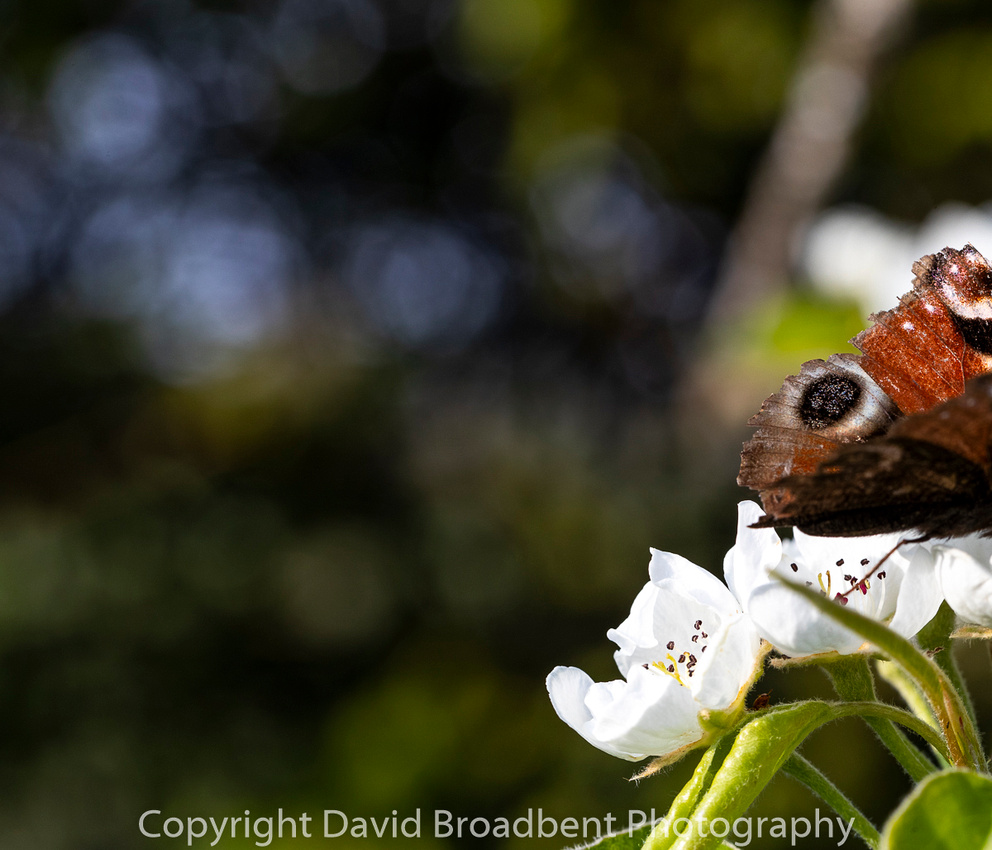 Lesson one: the camera doesn’t work like you. You see pictures thanks to a canny combination of your eyes and brain working in perfect synthesis. Your eye records shape and colour and distance and your brain does the rest (it’s why it can be easily fooled with optical illusions). Your camera works much more like your eyes in isolation it just sees. When it comes to interpreting what we see the camera is a bit of a blunt instrument.
Lesson one: the camera doesn’t work like you. You see pictures thanks to a canny combination of your eyes and brain working in perfect synthesis. Your eye records shape and colour and distance and your brain does the rest (it’s why it can be easily fooled with optical illusions). Your camera works much more like your eyes in isolation it just sees. When it comes to interpreting what we see the camera is a bit of a blunt instrument.
Check your backgrounds. Position your primary subject where you Want it in the frame and then train yourself to check all for corners before you pull the trigger. Embedding this process into your muscle memory will help exclude those annoying things that you spot in the background after you have shot the picture. Defocussed bloke in a high-viz jacket is not something anyone, even the most skilled, can loose from the background in Photoshop.
Photoshop, Lightroom and other similar programmes are a many and varied wonderful bunch. They don’t claim to be and are most definitely not a substitute for getting it right in the camera.
Wildlife in the garden can be fascinating, fun and really dam difficult to photograph well. All you have to do to welcome this life into your garden is follow the 4-step process
- Provide something to eat – berries, nectar, peanuts
- Provide something to drink – a regular source of water
- Provide somewhere to nest and roost – nothing special, just be considerate and don’t be too tidy
- Don’t poison them when they do visit!

Wildlife is predictable. The single most useful skill for a wildlife photographer is understanding that our quarry is predictable. They inhabit a certain place, they feed on certain things in certain ways, they can be territorial, they do the same things at the same time. Take the small birds on your bird table for example. Seemingly living life at the speed of light, these little birds never seem to stay still long enough for even the highest shutter speed. But while they are feeding, they feel vulnerable and so every now and again they’ll stop. Look around. Make sure that the coast is clear. OK go back to feeding. Great wildlife photographers are also great observers of the natural world. Watch your fully stocked bird table for just five continuous minutes and you’ll see what I’m talking about. Watch it for an hour and you’ll start to recognise the frequency of this behavioural trait.
Give up looking and start actually seeing! Internet lawyers everywhere make a jolly fine living from our inability to actually see where we are going. If this applies to you, get yourself a magnifying glass or a loupe and go in search of lichens. Allow the looking glass to suck you into a world within a world. Marvel at the shapes and textures (and in some cases the tastes) of these beings stuck between the fauna and flora of the classification handbooks. See the colours and the fruiting bodies and suddenly your eyes are opened to what is there if only you can see.
Why not post your favourite pictures to our photo school Facebook page and share your best pictures with our virtual group of friendly and enthusiastic photographers……
https://www.facebook.com/ForestofDeanSchoolofPhotography
]]>

David Hurcombe - Architect, Apex Architecture, Bath.
The business image you choose to show to the world is unique. It is an image of you that looks like you but bears no resemblance to who you are in private life. It conveys business only messages to potential clients and employers alike. I believe you should therefore have taken some time to consider “how” you want to look in those images and pieces to camera. To kickstart this mindset, you should have been asked (by any portrait photographer worth his or her salt) “how do you want to look?” what message do you want to convey, what personality and qualities do you want to come through?
The single most difficult question to ask my clients is “how do you want to look?” To some, that question had never occurred to them. To others self-consciousness can all too easily cloud their judgement.
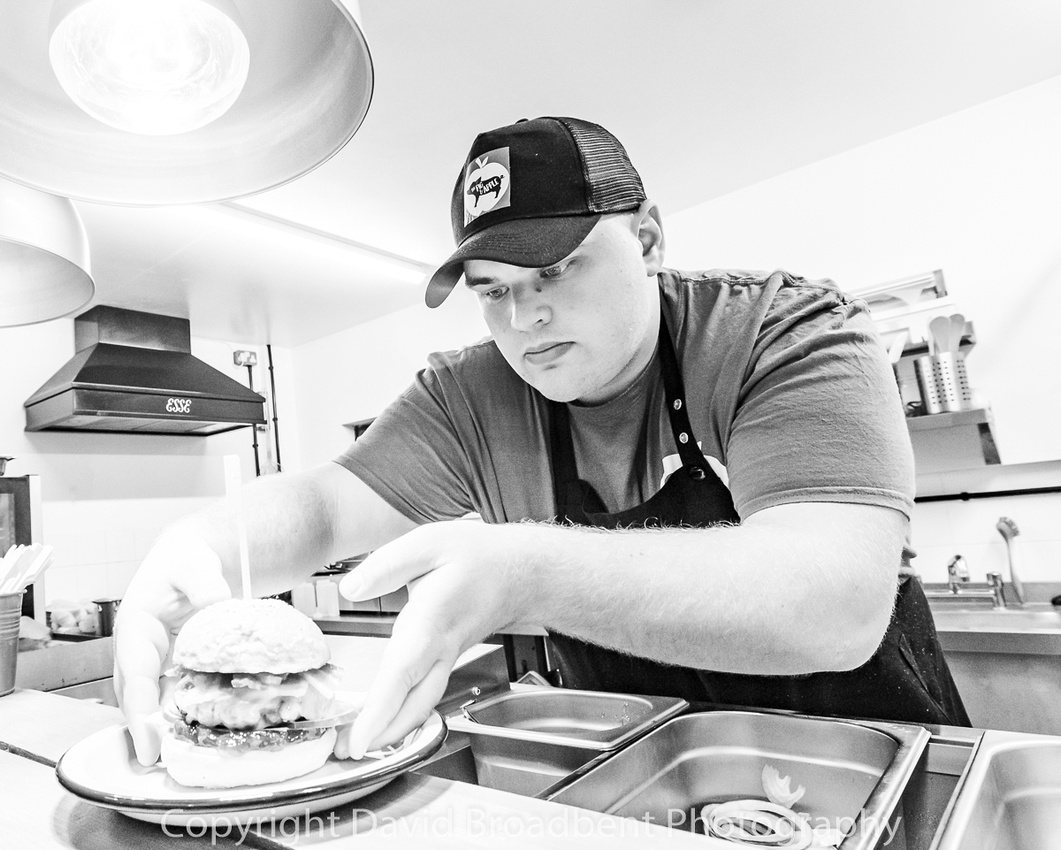 Jake - Chef/proprietor of The Pig & Apple Cafe at Humble by Nature
Jake - Chef/proprietor of The Pig & Apple Cafe at Humble by Nature
I tell people that commercial and editorial work is about telling stories. It could be your story, it could be that of your employees, your facilities, your estate, or your processes. Many often forget the story of their customers and how you and your business solve a need that they have.
All of this can be usefully reinforced by visually connecting with your audience regardless of whether you have met in person.
So often I see the exact opposite of this. On LinkedIn the go to business connection platform there are thousands of anonymous silhouettes. There are just as many up against the wall or car park hedge shots by photographers happy to pull the trigger for the price of a networking breakfast. Whilst the individual images may be perfectly serviceable, I can’t see that there has been much thought of how that shot fits in to your corporate approach, I could of course be wrong.
 Paul Smith - Independent Financial Advisor
Paul Smith - Independent Financial Advisor
When you are thinking about portrait media for business, as well as the considerations we’ve already discussed, you should calibrate your mindset. These images are first and foremost assets of the company. Like any other asset, they need to be sweated to repay the investment. This should mean that you are already thinking about the platforms they’ll be used on, how long the assets will live, the corpocracy of the image set and how they will help you stand out from your competitors. I believe passionately that after we have achieved the primary task of representing you (and that means that your friends and relatives would also recognise you) they should be different!
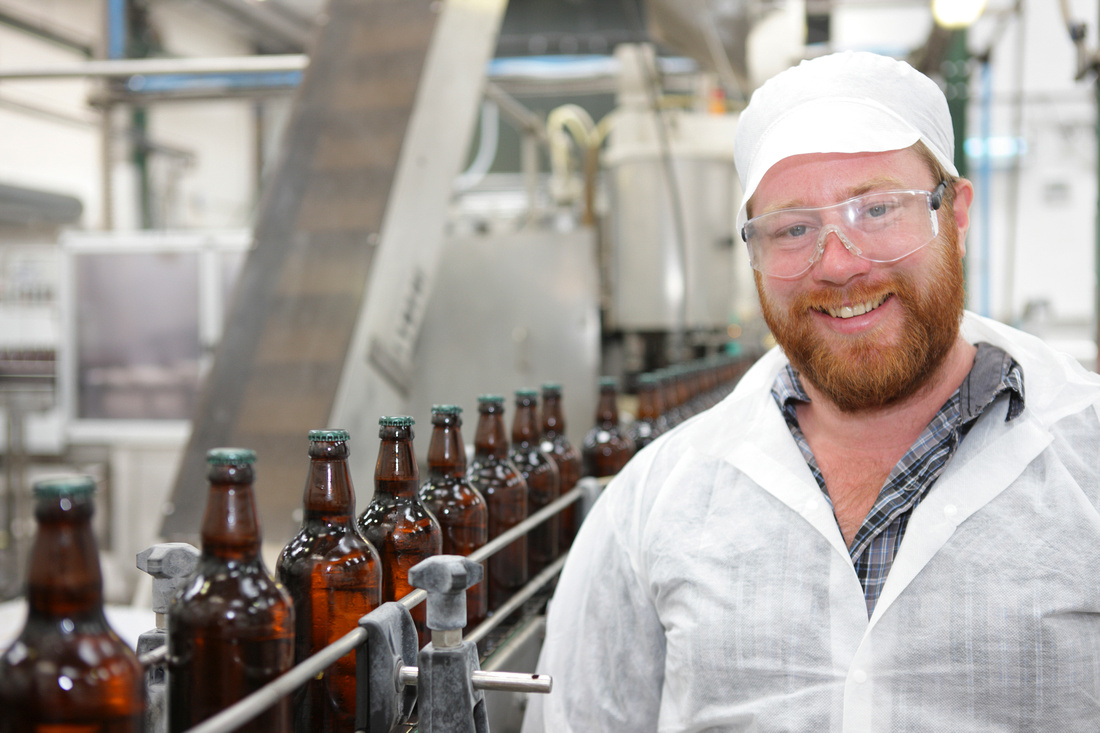 Tom Bull - Severn Cider
Tom Bull - Severn Cider
I constantly tell people that the hardest thing in photography is to do something different. When I photograph music, I get followed around by other photographers like the Pied Piper. Rather than explore their own angles, some find it easier just to watch and copy someone else. Those of us who have original ideas will know that we just have to get used to it.
There is a real opportunity in this preparatory thought process to produce something different and distinctive – to begin to tell your story.
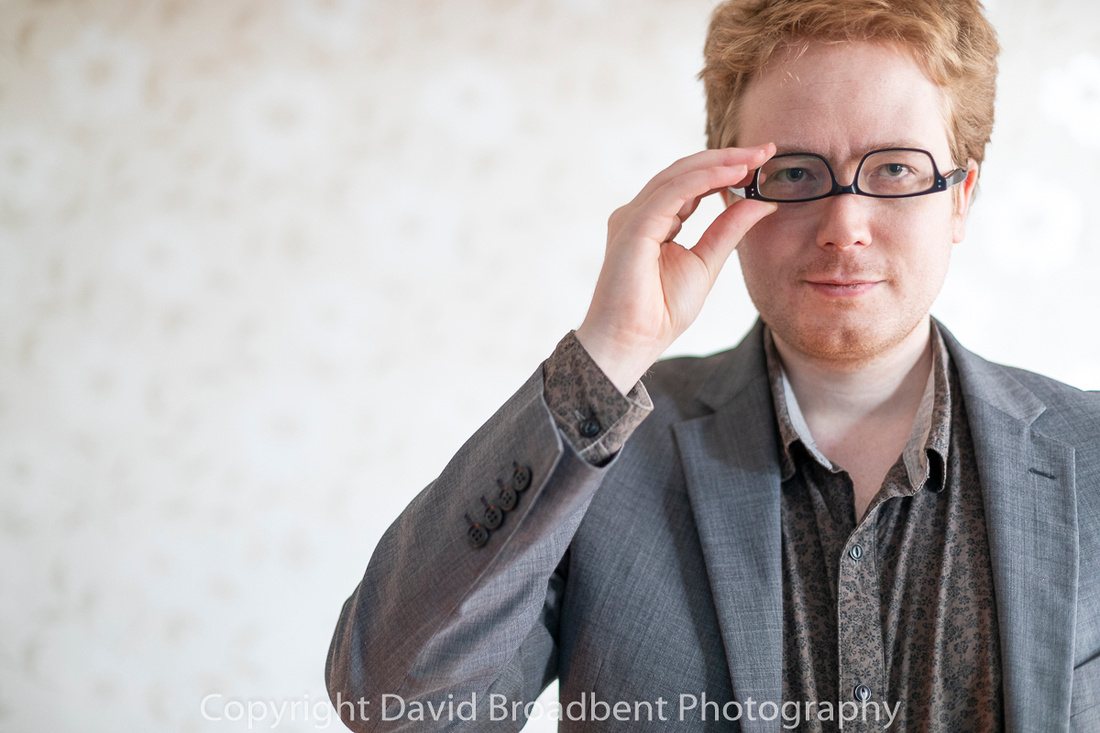
Dan Warren - Free Range Web, Bristol
 Luke Doulton - Free Range Web, Bristol
Luke Doulton - Free Range Web, Bristol
Enforced absence from anything is always a time to take stock and reflect. As we sit in the middle of one of the worse health crises the world has faced in recent times, many of us find ourselves at home with spare time on our hands. If you are self-isolating, you may not feel like doing very much. Many of us though are self employed and either the orders have dried up with customers concentrating on other things or our business revolves around social interaction, rapidly becoming a fear inducing word.
 Pete Bell - Bell Group
Pete Bell - Bell Group
The priority of course is how we can survive. But savvy business owners and company executives know that we will come out of this and so we need an eye to the future as well as to manning the pumps. The business landscape may look different at the end of all of this. There maybe fewer competitors with the reinvigorated market looking less crowded. It may be that a pool of previously employed people are now looking to begin on the road to self-employment. In any case when things do restart there is likely to be fierce competition for that “new” business. Who knows? No one it seems.
Service, quality and difference, as ever will be a discriminating factor and the image that you portray to the world is an integral part of that. Do the right thing and make it interesting.
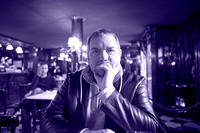
]]>
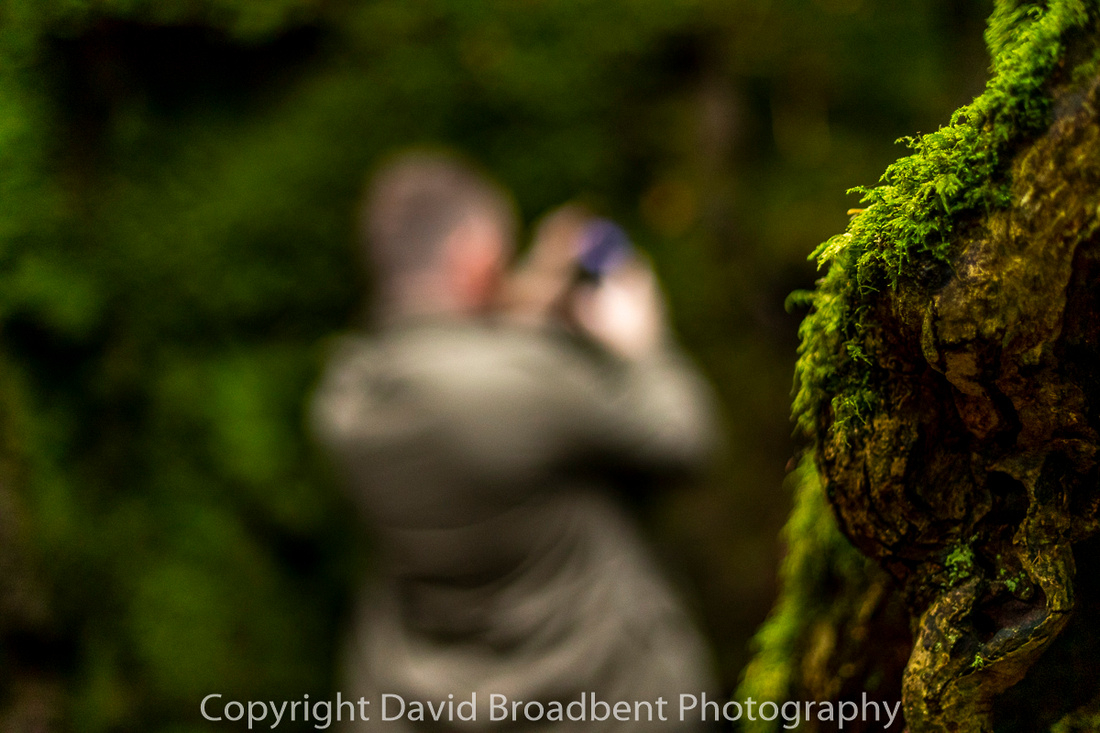
Over the years of experience, and of course age, David has perfected his people watching skills to be able to spot a person going into overload from a mile off. He needs to. Teaching photography can, for some, be a daunting process. It’s not about being tech savvy either. You try teaching an "engineer" you be creative!
The key issue of getting the message across in a way that it can be used, is simplicity. Here at Forest of Dean & Wye Valley School of Photography, we take all of our experience and technique employed in our commercial photography business and distil it to the essence. Jargon free, we deliver it in a friendly, fun and simple form in the best way you learn and understand. We watch our clients for any sign that the tank is filling up. As soon as that gauge goes over three quarters, the likelihood is that we take longer to process new information and start to slow down learning.

We’ve just introduced a new one to one course style, the Continuous Personal Development Sessions. These are multiple sessions, spread over a period of time that might be a few days or a few months. They are multidisciplinary so that you can design a course that covers your whole workflow from capture to post production. We are not all naturally good at editing and so the sessions come complete with mini assignments and image editing and feedback sessions online, something which David himself has had to work on to perfect.

Pre-book as many hours as you think you’ll need to kick start the process and we’ll work with you to develop a training needs analysis. This analysis is personal to you and so the courses are ideal for total beginners as well as helping advanced photographers develop their own creative style This analysis will be the template for how we deliver the sessions to you and includes lots of opportunity for reflection and feedback.

Delivery one to one training in this way will help your motivation to improve, give you a structured learning process (whilst having fun!) and give you time to assimilate information and practice it before moving into the next lesson phase.
Hours are priced at £31.25/hour with a 10% discount on packages of 12 or more hours. Gift certificates are also available.
The lessons you teach yourself are always more powerful than those you get from others.
If you are not having fun, you are not learning properly.
]]>
 The winter months needn’t be a dampener on your photographic endeavours – far from it – they offer some of the best, and most varied, shooting conditions of the year. All you really need to cash-in on this golden opportunity is a few simple techniques, some warm clothing and a positive mental attitude (PMA).
The winter months needn’t be a dampener on your photographic endeavours – far from it – they offer some of the best, and most varied, shooting conditions of the year. All you really need to cash-in on this golden opportunity is a few simple techniques, some warm clothing and a positive mental attitude (PMA).
Gear
- Tripod, cable release (or use the 2 second self-timer),
- Torch,
- Warm clothes,
- Phone with a star map app which can either double as a torch – just in case.
Top Tips
OK, here we go with some of the things that will help you to capture fantastic night time shots.
 It helps if you have visited your chosen location in the daylight. If you are just starting with low light pick a location that you know well to get you going. If you are able to set-up at dusk while there is still some daylight – even better. Even so things can be dis-orientating in the dark so prepare! Take a torch with fresh batteries. Make sure that you have a spare camera battery. Nothing kills the batteries like live view or the cold and I always wear more clothes than I think I will need. It’s one thing being out on a cold night for a couple of hours, but doing it standing still…..and you’ll feel the chill go much deeper into your body without enough warm gear. Plus, you can always shed a layer if you are too hot. This is a real issue and one where your PMA will come in. It is very easy to get demoralised and fed up when you are very cold – so think positively and stay motivated – it’ll pay off for you.
It helps if you have visited your chosen location in the daylight. If you are just starting with low light pick a location that you know well to get you going. If you are able to set-up at dusk while there is still some daylight – even better. Even so things can be dis-orientating in the dark so prepare! Take a torch with fresh batteries. Make sure that you have a spare camera battery. Nothing kills the batteries like live view or the cold and I always wear more clothes than I think I will need. It’s one thing being out on a cold night for a couple of hours, but doing it standing still…..and you’ll feel the chill go much deeper into your body without enough warm gear. Plus, you can always shed a layer if you are too hot. This is a real issue and one where your PMA will come in. It is very easy to get demoralised and fed up when you are very cold – so think positively and stay motivated – it’ll pay off for you.
Your camera meter is going to have a much harder job getting an accurate light reading in low light so your default position should be not to rely upon it too heavily. Switch to manual or be prepared to race up and down the exposure compensation dial in Program, Aperture or Shutter priority modes. Always think of the first few shots as “tests” used to refine your camera settings for a picture that looks about right on the rear screen – whatever the camera warnings are telling you. Dependent on your chosen location you may have ambient street lighting of different sources as well as the night light. Often in wide angle views you’ll also get an orange glow from nearby cities – the Bristol “glow” shows as an orangey hue.
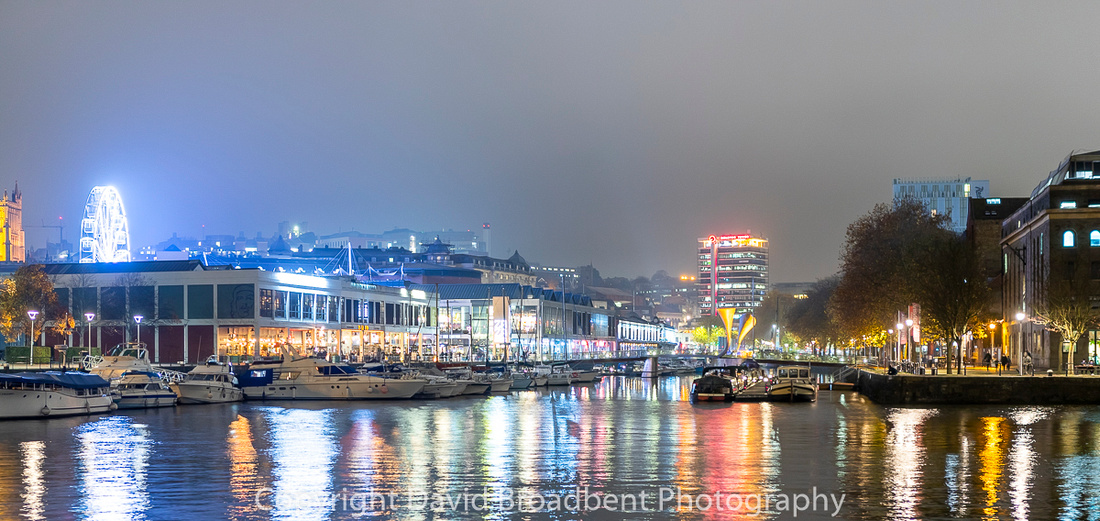
In urban landscapes it’s generally easy to focus on your subject (or something the same distance away) but, your cameras auto focus will start to let you down as the light levels drop out in the countryside. Pretty soon it won’t work at all! So, setting your point of focus before dark, illuminating a foreground point of focus with your torch or using the lens distance scale (if your lens has one) are all more reliable than the auto focus system in very dark environments.
I have a grid graphic that maps the different settings for different locations. Broadly speaking the brighter the light, the lower the ISO. Well-lit urban scenes or the moon, go for low. With a sturdy tripod or rock-solid shooting position go for ISO 200, 400 or 800 for maximum quality. For the night sky, you’ll want to push the ISO in order to cap your shutter speed at 20 seconds – unless – you want star trails (where stars appear as lines rather than dots).
Here is where your in-camera (noise reduction) NR and high ISO noise reduction settings, if you have one, really come into their own. All sensors suffer from electronic noise which can make the image look grainy and speckled with tiny points of colour. Long exposures and very high ISO’s bother suffer from this noise. The in-camera mode does a good job on long exposure shots but the price is that the image will take longer to process (generally as long as the shutter speed) delaying your next shot.
Shooting the moon
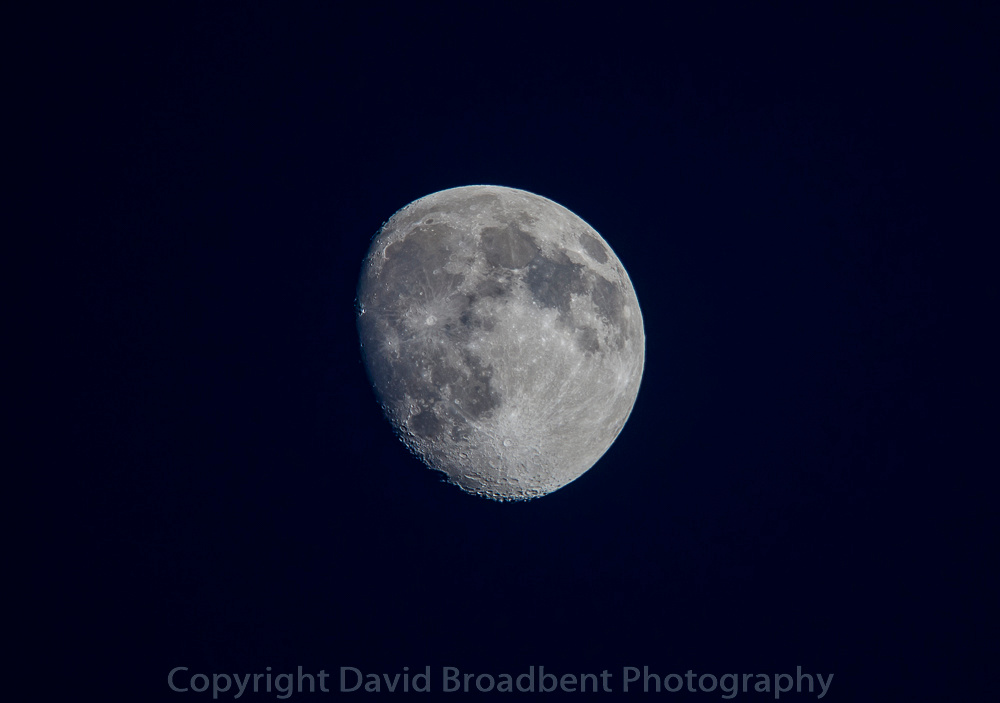
You’ll be amazed just how reflective the moon is once you start to take camera light meter readings of it. The single most common problem I find is that the moon comes out over exposed and white (due to the above). This can be a combination of factors; you have to meter just for the moon and take a test shot to adjust for your final shot. Try to exclude as much sky as possible (by zooming in to get a reading first on the half press) to get an accurate reading. Alternatively try shooting the moon before dark. The day before a full moon, it always rises in the daytime and is almost indistinguishable from the full phase. The moons reflectiveness, comparative to the rest of the sky, even at dusk will make any sky look darker in the image. Send us your best moon image or top tips.

Other great night time subjects
- Fairgrounds and fairground rides
- Light painting with torches and sparklers
- Landscapes and city scenes
- Time lapses
- Starscapes
In the autumn we run night sky courses with our friends at Humble by Nature. During the rest of the year why not try a dark skies and low light one 2 one photo class with Forest of Dean & Wye Valley School of Photography at an introductory price of £45 (t&c apply) or join a photographer group via Facebook or Flickr in which everyone can feel a little safer together.
If you’d like to give a course as a gift Gift Voucher.
]]>

To those amongst you who haven’t yet read the “bible” of living in the moment – The Power of Now: A Guide to Spiritual Enlightenment by Eckhart Tolle – your bewilderment or scepticism is excused. First published in the early 1990’s this book is still a foundation read for anyone of us who has a pressing need to de-stress their lives for the sake of their own wellbeing and mental health.
Radical and new age upon publication, this heady mix of spiritualism, psychology and scientific examination of human brain function has since become the go to guide for those in need of guidance and, for those who want, or need, to press life’s big fat red reset button.
Many of the wellbeing and mental health therapies we know so well today as well as the need for positive work life balance are made out in the book and indeed some of them were first described within the narrow lines of text exploring our complex relations with our own brains, ego and thoughts. Mindfulness walking, the outwardly bizarre slow-motion perambulation through the countryside advocated by many practitioners comes from here.

Simply summarized, living in the moment is about unburdening yourself from regrets about the past or your anxieties about the future. It is about seeing the life and vitality in whatever it is that you are doing – right this moment! No distractions!
By some wonderful event of serendipity (for The Forest of Dean & Wye Valley School of Photography)) it turns out that photography is a wonderful vehicle for just this endeavour.
These two new courses are your introduction to the practicalities of being in the moment and spending some quality you time whilst you are there. As an added bonus, we’ll feeds our own need to be creative and help create a reflective diary for personal development for use after the session
As a fan of the book as well as a long-time practitioner both of living in the now and positive thinking, the concept of photography walking is as new to me as it is to you. However, I have now discovered what I’ve been doing all this time without realising it! I have long known that the best pictures I take almost always (luck notwithstanding) come from being “in the zone”, free from distractions, relaxed but hyper sensitive (in a good way) to life around me. Concentrated and aware, calm but able to react as situations develop into a winning image.
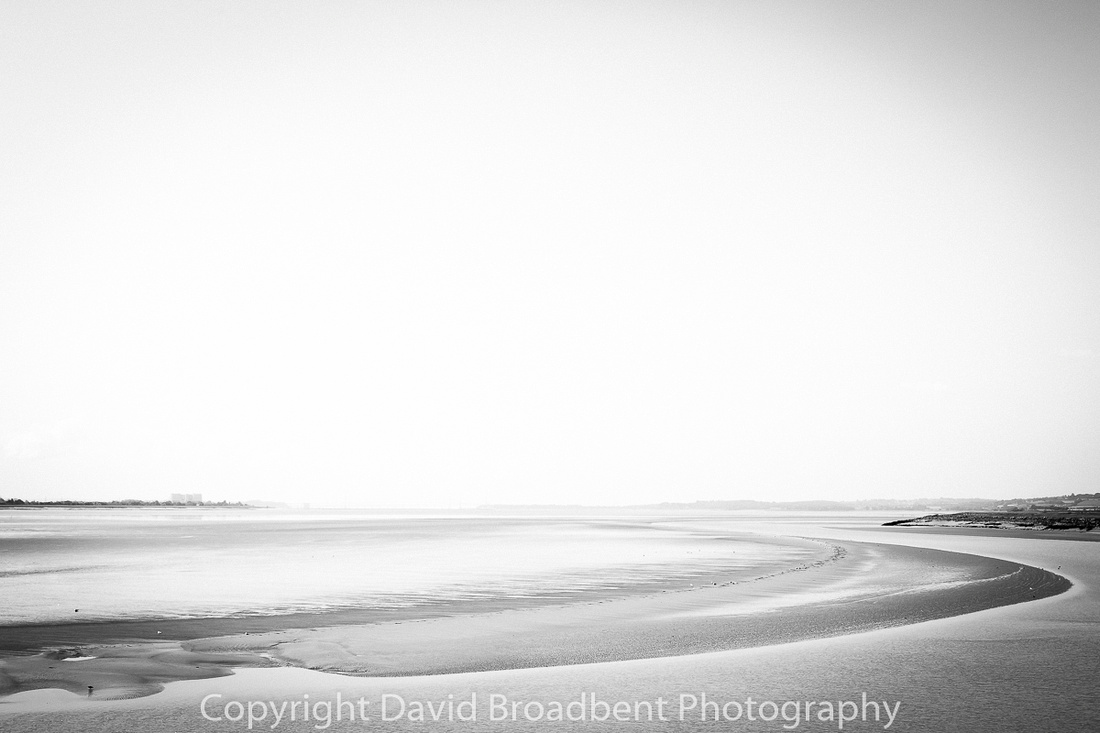
Putting my two passions together for the first time was an “of course it is” moment a bit like when a science tells us dinosaurs turned into birds - of course they did! We can all see that can’t we, it’s obvious – but it took a moment of insight or someone really clever to tell us about it.
Photography Walking is about seeing, not looking. How many of us wander around looking but never actually see anything? It’s where the “no win, no fee” legal vultures all come from, where the “gorilla in the room” psychological experiment lives and its where my ankle first slipped of the tiny pavement in Strasbourg – see previous blog above.
Because Photography Walking is a really useful mental exercise to get you started actually seeing things, it can help with creativity, composition, managing light and your own personal photographic style as well as with relaxation and inner calm so can help photographers develop a better “eye” or help with in the moment training. We love the grey area in the middle where the two approaches collide.
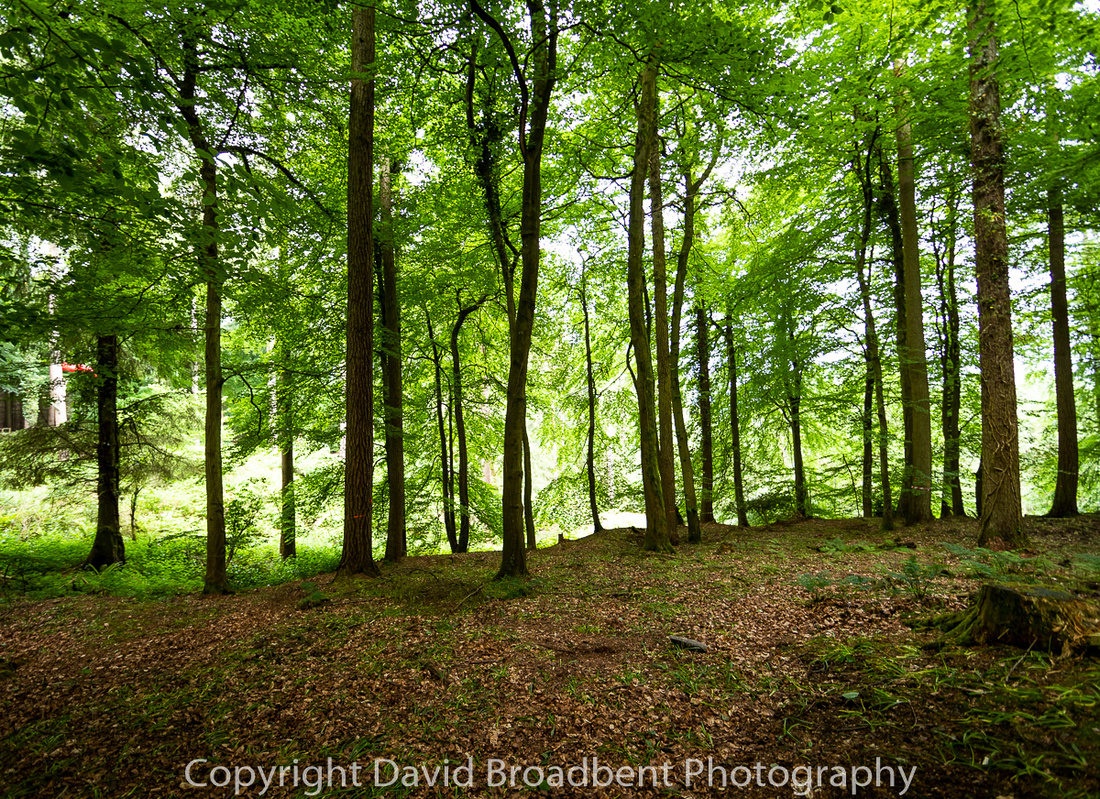
We have lots of experience of delivering bespoke training and these new courses can be easily adapted and refocused to either group. Please say when booking the course which approach you would prefer.
For those looking for a guided mindfulness session we’ll help with practical hints and experiences to get you into the “moment” and improving mood as well as creating a mindfulness visual diary for reflection. The key here is simplicity and connection so these sessions are ideal if you wish to use your phone as your camera. If you prefer to bring a DSLR, keep the kit very simple.
For those looking to develop a better eye and a personal photographic style we’ll guide you toward the unusual and creative angle and start training the photographer within. Again, we’ll ask you to keep the kit simple.
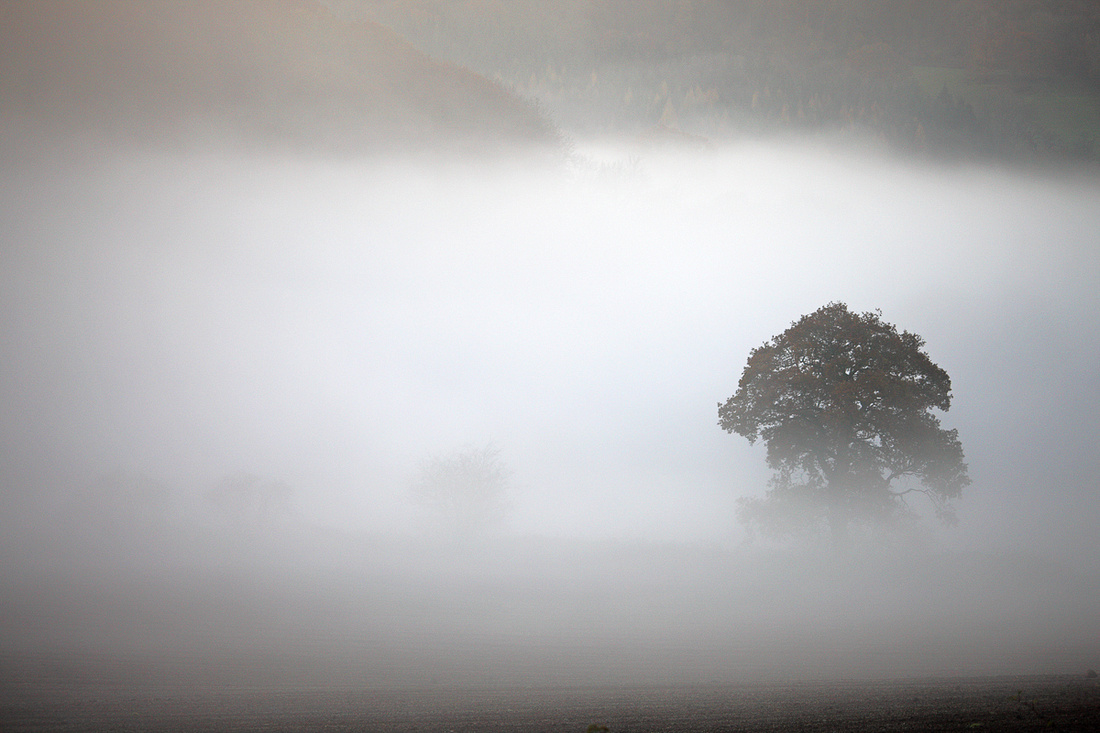
On one of our two-hour introductory sessions it’s not about speed of working, camera envy, having the stamina to carry every piece of gear you own, trying to look like a professional – whatever that looks like – or radiating photo wisdom over a twenty-metre fall-out zone.
Sessions begin with a short, but challenging for many, session to clear the mind, I mean empty – nothing!
Your eyes and brain successfully re-tuned and in perfect sync to your surroundings we’ll walk through the process of challenging and interesting viewpoints for things most others didn’t even see. It’s brain training for photographers to develop a creative style and mindfulness training for those who need it. Everything becomes interesting and your curiosity will run out of control.
These sessions are about the simplest of capture and most creative use of the image. They are suitable for all and for all cameras/devices. In fact, the sessions lend themselves to less not more gear and so you’ll be intentionally restricted from delving into the whole of your kitbag. For example, I routinely go on assignment with only one prime lens. I have to make it work. To use all of my creative thought process to make that one piece of equipment work hard. These sessions are really suitable for smaller cameras and phones too and we’ll look at the processing and sharing options from your device or later (for DSLR users) in post-production.
These sessions are pre-booked and take place in the great outdoors. They are suitable for all, with venues catering for access challenges. We go whatever the weather – so check what Bert Fish has to say on precipitation by all means, but bring a coat anyway.
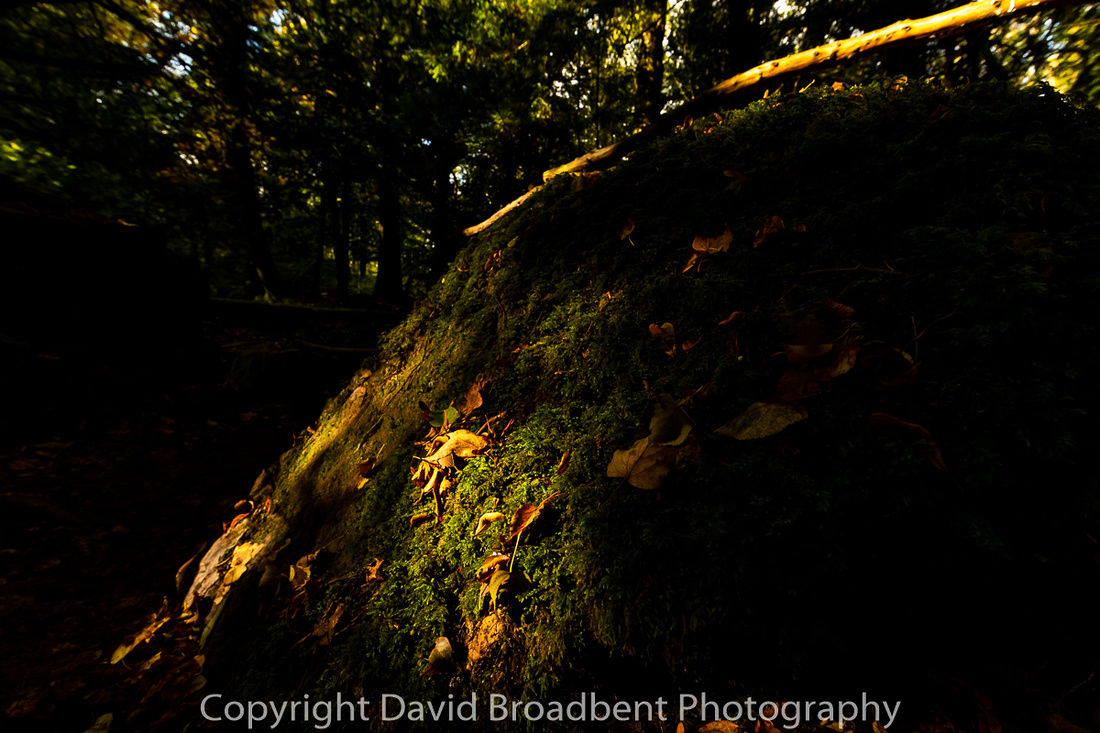
Caution! David Broadbent is not a real therapist, he has no qualifications, does not wear coloured spectacles and he doesn’t insist on cash payments for sessions.
We run these sessions in countryside and urban environments. They are suitable for all but please tell us if you have access issues. We are also happy to run your session in a place already familiar to you to make the follow 365 plan programme easier. A two-hour introductory session at one of our venues for one person costs £50. Payment by BACS or credit cards (via Paypal) is accepted. For more information or to book a session contact us on [email protected]
Photowalking, photography, walking, mindfulness, mindful, mood, stress, fresh air, mental health, health, fitness, exercise, connection, nature, mood,
]]>

It's always good to step back and reflect in life. It helps galvanize your enthusiasm as well as temper and focus your effort.
We don't have a big garden. It's rather long and thin, not at all conducive to a classic border style. The top half (furthest from the house) had half a dozen fruit trees when we moved in. Sadly, a couple of those didn’t make it as the garden had been previously used primarily as a run for 6 border collies! The trees obviously hadn’t seen any maintenance and some of the remaining trees also needed some TLC including a rather grand Bramley apple.
This also happens to be one of the best places to practice your photography techniques. Forget the subject matter, right here there is lifelong learning in taking control of focus, composition, the creative use of depth of field and managing the available and reflected light. Our Photo School page has more details.
Anyway, whilst wiping the sweat from my brow after a particularly vigorous session with the lawnmower, wrestling with the tough grasses and dodging the overhanging fruit branches, I reflected that this was all a bit pointless. So, I decided it was high time to instead, mow a serpentine path through this half and so began the garden planning. Zoning was all the rage in the “garden spaces” of our “outside room” at the time but our own zoning strategy was easy - close to the house, fun, pretty, playtime, functional. Top half rewilding!

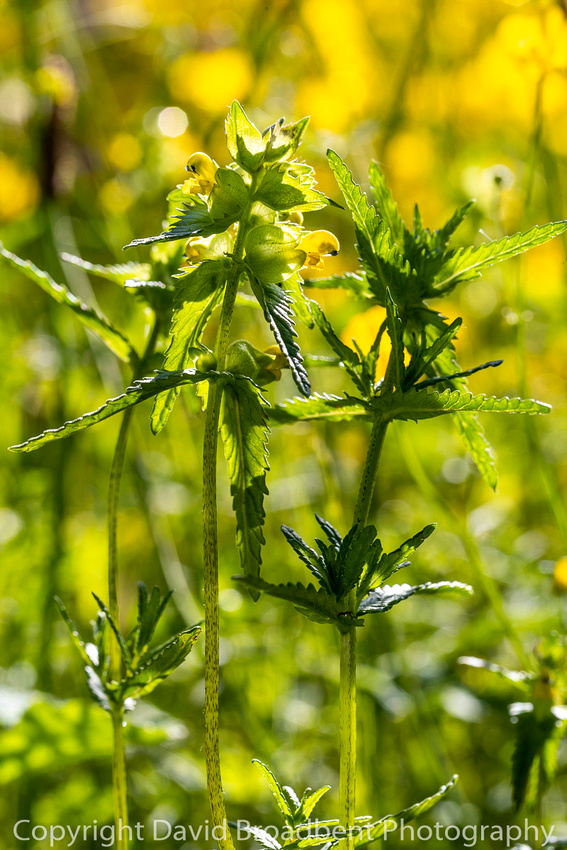
Surveying the untidy ramble of first flush grasses allowed to let rip, I spotted a curious thing, thin lime green leaves, just visible in the thatch, with spots! To our utter amazement, the very first year we stopped cutting an orchid popped up! Common spotted orchid (Dactylorhiza fuchsia) to be exact. These seeds must have lain in the ground for donkey’s years just waiting for some kind soul to stop mowing the blooding grass. I’m not sure that our amazement was well placed though, this should be quite a common UK wildflower. In our little rewilding patch was everything that it needed. Protected from strong sunlight by the hedgerow and dappled with shade from the overhanging apple and Victoria plum, the ground stays reasonably moist (not a wetland) even in the height of summer.

Because the former lawn still had its fertility from the fallen mowing’s this first specimen was huge in size and I suspected that it may not therefor flower. But, flower it did and on multiple stems.
I’ve tried before to rewild areas without much success. The secret weapon, we found, was Yellow rattle (the seeds rattle in their pods). None of the books or advice at the time had this gem of information. It was all about stripping off the top turf was the only way to go but, please – I was trying to make myself less work.

We found out about it from its old names, hayrattle and cockscomb, and the fact that the many farmers and equestrian centres in the Forest of Dean & Wye Valley don’t like it because it reduces grazing yields. It was once a common sound of hay making to hear the seeds rattling in the cut hay. We purchased our Yellow rattle seed from Meadow Mania. It gets delivered in September and ideally needs a winter out so to be one the safe side we put it straight in the fridge until the outside temperature had dropped in November. The seed is quite expensive and we were on a budget so this had to work.
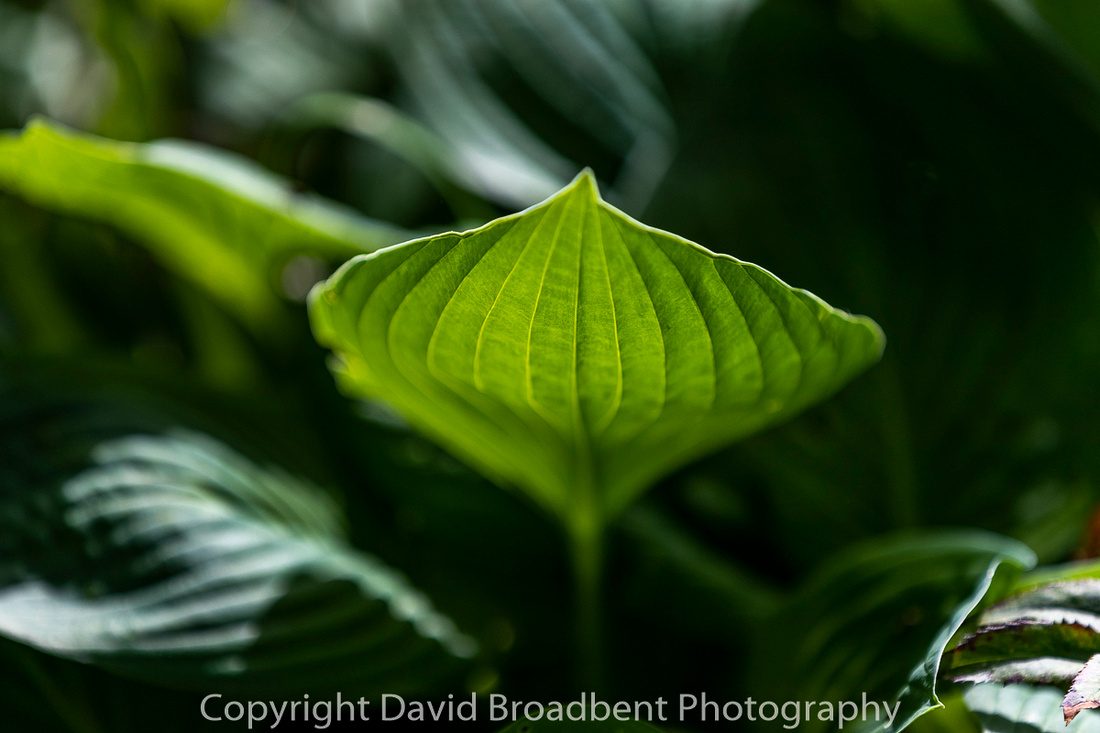
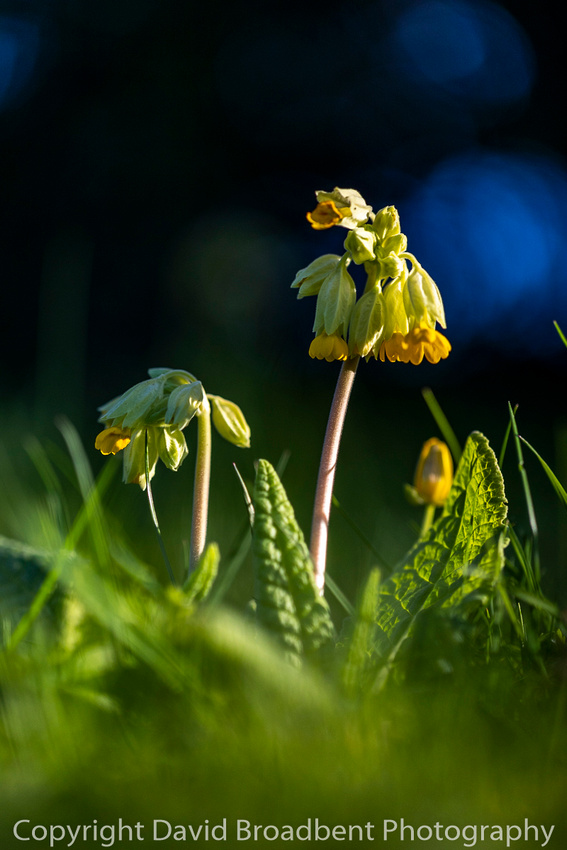
Some wildflower seeds, experience had taught me, don’t always do very well. I now realise why. Think of it as an investment for a cash hungry business. Put too little investment in and you’ll only progress in tiny steps. The background seed vault needs to be bursting. A tiny packet of seeds on their own is not going to do it. We purchased half a kilo! It worked. The following spring up they came. Soldiers in the fight of rewilding. Marauding through the more vigorous grasses, suppressing them as they advance (Yellow rattle is semi-parasitic on grass) to give the wild flowers a chance.
The first orchid was ground zero for the first batch of broadcast rattle. We had read that it may not recur in the same spot the following year and so we ordered a second batch. It wasn’t really necessary so we blew the budget there. A little did germinate in the second year around the orchid but then there was a new patch, and another new patch and so the march went on with military tenacity and seemingly total randomness. Everywhere it grew the surrounding grasses were a quarter of the size and vigour of those on the other side of the path. Now the rattle is everywhere.



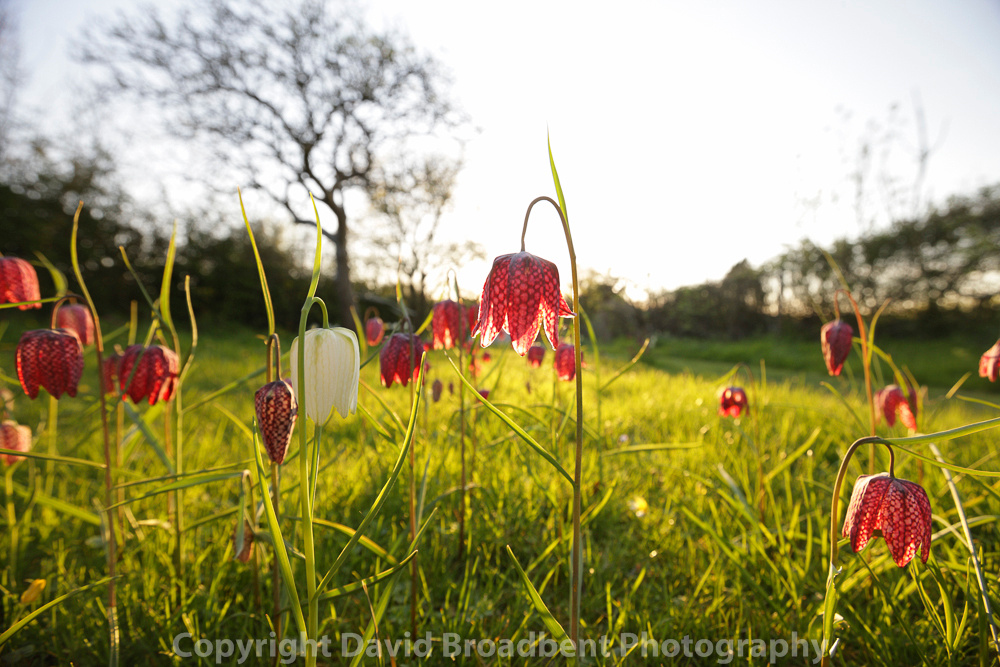
Now everyone is – yellow rattle this and yellow rattle that. Here is our simple advice for rewilding a patch of your garden
Pick your spot – is it in full sun, shade or partial shade? This will determine the wildflower species that thrive. We are trying to create a spring and summer meadow for a longer season.
Mow it – mow it and remove all the mowing’s. Leaving them behind will only add fertility to the soil – not good in meadowland.
Keep it short through the winter – Thanks to climate change the grass in our garden keeps on growing well into November. Donald J hasn’t spotted this because he doesn’t cut his own grass. Yellow rattle particularly likes a short grass sword wherever you broadcast it.
Sow Yellow rattle – have you worked out yet that Yellow rattle is important in your meadow quest?
After the flowers – crucial to allow them to set seed. On a dry day in very late July (later if it is still looking good – I cut ours in September). Strim the tops off down to a couple of inches (this avoids harming the millions of insects, small mammals and amphibians that will now call this home). Leave it for a day for the seeds to fall to the ground and rake off the cut. Then go ahead and strim to the ground and remove that cut. Leave a margin uncut for the critters if the rest of your garden isn’t wildlife friendly and the cuts make great compost. If, you are now complaining about the potential workload, it is important to reflect that you are doing this once a YEAR and not once a week.
It is not an accident that all of this sounds like old fashioned farming.
Winter jobs – take the hammock down and store it somewhere safe.
Facts – Rhinanthus minor is a flowering plant. It is an herbaceous plant native to Europe that grows to about 20 inches high with yellow flowers.
]]>
On my latest trip to Europe to shoot travel, food and lifestyle pictures I did a very silly thing in Strasbourg!
I fell over. You know when you fall over the immediate instinct having gone down is jump right back up lest anyone should have seen you make a complete fool of yourself. You may furtively glance around to check that the coast is clear. You may even go mad and try to make out it was all just a harmless rehearsal for a much more serious incident - probably more specific to men this one. Just prior to hitting the deck is the natural reaction to put your arms out to break your fall – it’s why collar bones repair so easily. It’s very difficult not to do this in fact. Your subconscious mind takes over, goes into protection mode and does what it can. Unless that is you have the downhill hand full of 1DX and a 16 – 35mm lens.
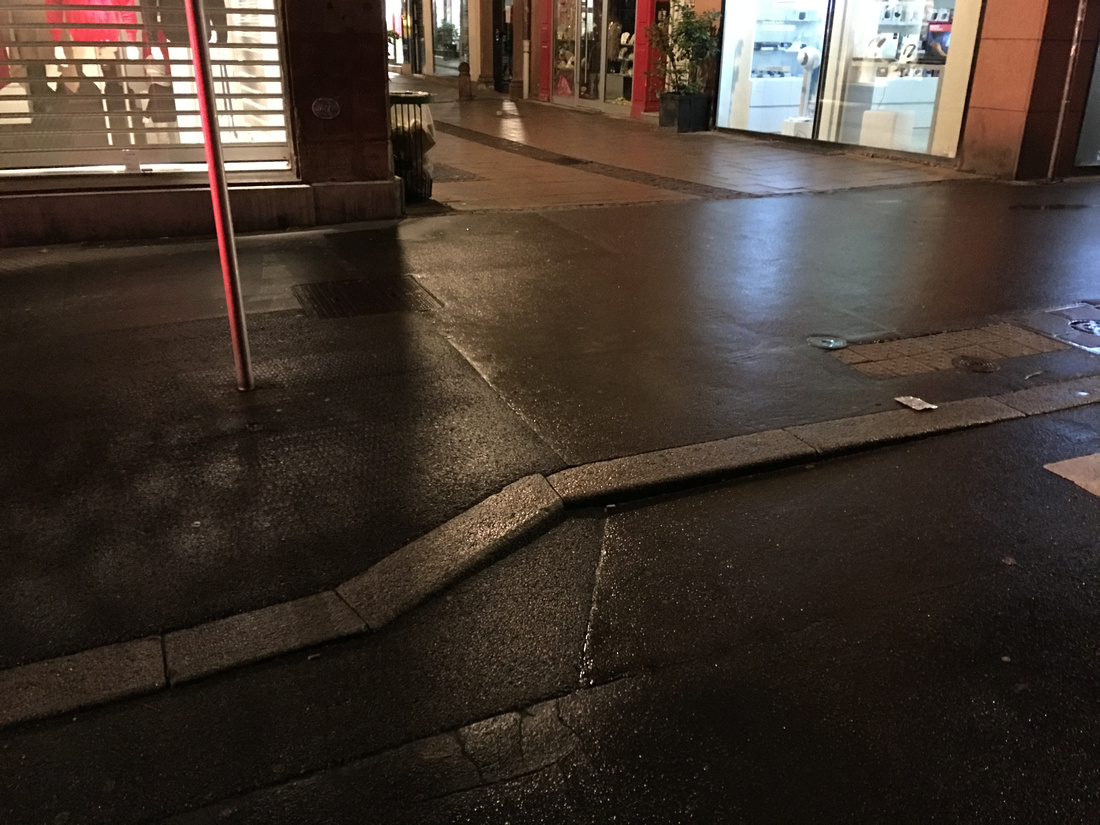
In the course of the inevitable “what went wrong” post mortem, I discovered the following: I went over on the edge of a curb stone. Falling without a sound like a huge felled Redwood, I honestly had no idea what was happening between the slip and crashing into the wet, glistening road. Cue expletives!
On an otherwise hugely successful evening shooting pictures in the rain of the fab city that is Strasbourg I was very saddened to discover that the offending curb was barely an inch high. My shoes had not miraculously lost their sole/ground adhesion quotient and the Strasbourg Town Hall could not have maintained the curb to a higher standard. Although refreshed at an excellent local restaurant in the German style I was not dear friends, in any way non compos mentis.
In these blame culture days there was nowhere else to look for the root cause. So, Accident Helpline I don’t have any employees. If I did, the least I would expect of them is too look where they were going. Sadly, on this occasion I was unable to heed my own health and safety advice. Verdict – simple muppetry!

Rising slowly and slightly winded from the scene I was a little confused. The camera body was still firmly in my grasp but a large section of the lens barrel was still rolling around in the gutter. Ooops, the lens looks like a right off! Dusting off and recovering of dignity mode was followed by a quick insurance photoshoot using my cell phone to record the scene of the street, the conditions and location. Once in good light on the return tram – the damage looked pretty catastrophic. Instead of a bayonet fitting on the back of the lens there were now shiny green circuit boards and trailing wires exposed to the atmosphere.
Back at the rented gaff it was time for an urgent test of the body itself (with another lens) and all appeared to be in order so the body seemed undamaged. There was a small but obvious impact mark on the body which indicated first impact. I’ve always complained about the quality of the powder coating on this camera. A shiny wear pattern appeared on top of the pentaprism almost straight away. Give Canon their due though, the body had survived a sudden drop in altitude followed by a 16 stone body slam. Tomorrow I’d shoot some blue sky and check for dust. Giving the camera body a huge clout sometimes disturbs all the captured dust from the sensor sticky pad. And it needs a re-clean.
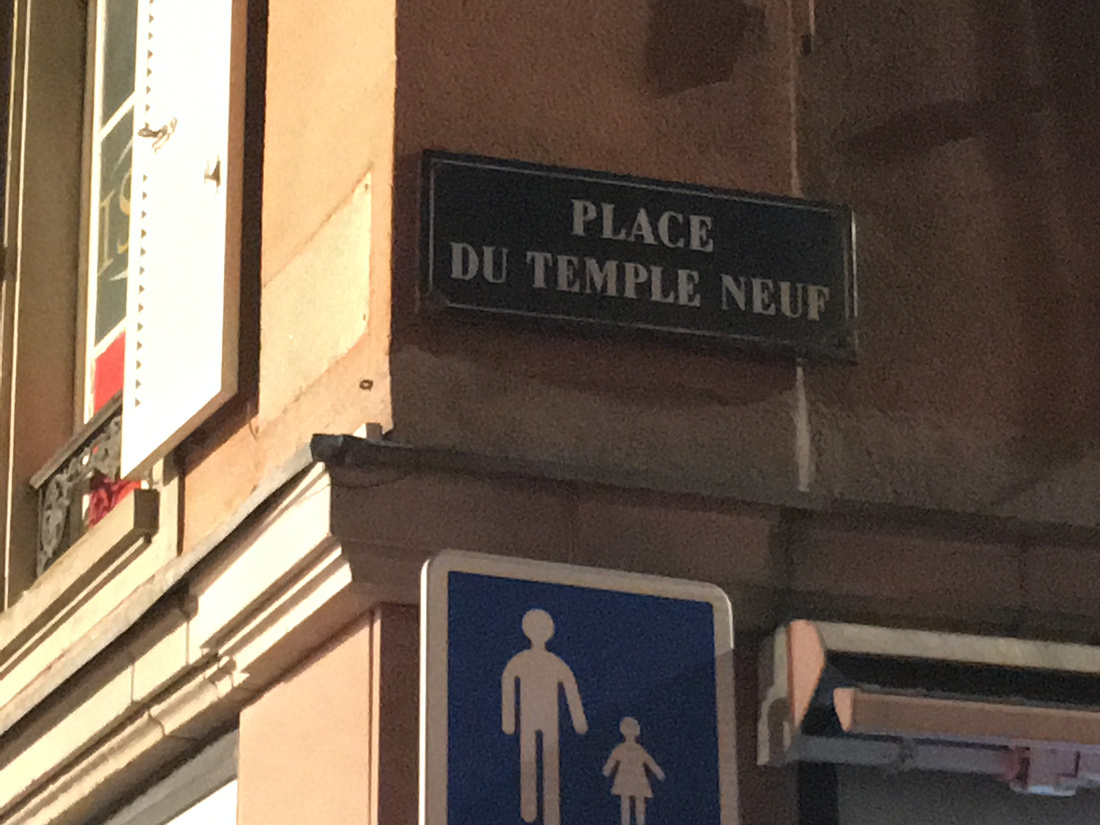
I could really have done without this it goes without saying. I’ve had that lens a long time and it has been around the world with me. It is one of my “go to” optics and I was now very happy that I had the zoom range kind of covered in my often-prepared but seldom deployed contingency plan.
For all trips I generally take at least one spare body over and above the one/s I’ll be using. I also had my 14mm and 28 -70 (another “go to” lens) so at least I had some wide-angle capacity. In fact, following the calamity (as we are now calling it) I went on to shoot nearly the whole of the rest of the trip on the 14. This is something I often do intentionally since it makes me work harder for the pictures i.e. make one lens work for you by composition, movement and creativity.
This as they say is what insurance is made for. If this happens to you there are a few things you need to do. The first is to manage your expectations of what is going to happen next.
You’ll need to inform the insurance company of the damage/loss normally with 24 or 48 hours. Leave it until the end of your trip and you may be putting your claim in jeopardy. The notification will nearly always be required in the form of filling out of a claim form rather than an email or a friendly chat over long distance. Should you take a pre-printed form with you? Probably not. Looks a bit suspicious doesn’t it?

No matter how much you need that lens, the insurance company are not going to drop all the pencils and everything else to settle the claim and get you a replacement. First, to go with notification form, you’ll need an engineer’s assessment and practically that isn’t going to happen until you get home. As a Canon Pro I do theoretically have the option of a French engineer assessing it as a matter of urgency. However, the reality is the UK insurance company will not be accepting Marcel’s Gallic missive any day soon if a national bank won’t even accept letters in Welsh! Similarly, if it is a total loss they aren’t going to get it shipped to where you think you might be in a weeks’ time even if you can trust the local carriers. I may also have the theoretical option of borrowing a loaner from Canon for the time being. Normally though this presupposes you are at a supported event and aren’t going to waltz off to somewhere else in Europe with the goodies.
If the accident is not bad enough, you’ll now need to lug the wreckage around with you from now on too. If it is a total loss, once settled the wreckage becomes the property of the insurance company and they may want it back (so you’ll have a shipping cost which in the small print is specifically not claimable!) – they think of everything don’t they.
So, there you have it. The key is, have a backup plan in terms of gear and a sanguine and realistic attitude to when your problem is going to be fixed! If you do have a catastrophe, get yourself the best cup of coffee you can find, sit down, have a calm think and reset. These things can be opportunities you wouldn’t have explored originally. But now you have too, grasp it with enthusiasm and make the best of what you’ve got.

I’m with Aaduki Multimedia Insurance whose response has, in fairness been great. If this happens to you whilst away from home - ask for a claim form you can compile online and not a PDF which needs printing! Make sure, before you leave that you have some travel cover for the countries you will be visiting during the journey. Expect also to have to prove to your insurance company (by flight/ferry ticket or hotel reservation) that you were in the country outside the UK you say the accident took place. Thank god for the presence of mind not only to photograph the damage but also the scene of the crime (and your other injuries/damage if appropriate) all of which could come in very useful.
Always check that you are covered for world travel and it’s always a good idea to review the insurable cost of your gear under cover. Prices rise all the time and if you are on a new for old your insured value needs to match the replacement price. As an example, my 14mm was purchased for £1400. The sales rep lacked any hint of a sense of humour when I pointed out to him that was a hundred quid a millimetre! Now the same lens retails at £1900.
Everyone loves a happy ending and the news is…..It’s repairable! I know. I couldn’t believe it either. Optics all perfect and the parts list includes new rubber mount collar, zoom collar, focus assembly, main lens assembly, circuit boards and new barrel section. The combination of my settlement less the excess and VAT etc. and I have it back in the bag - Yay!! That lens is going to end up like Trigger’s brush!
]]>
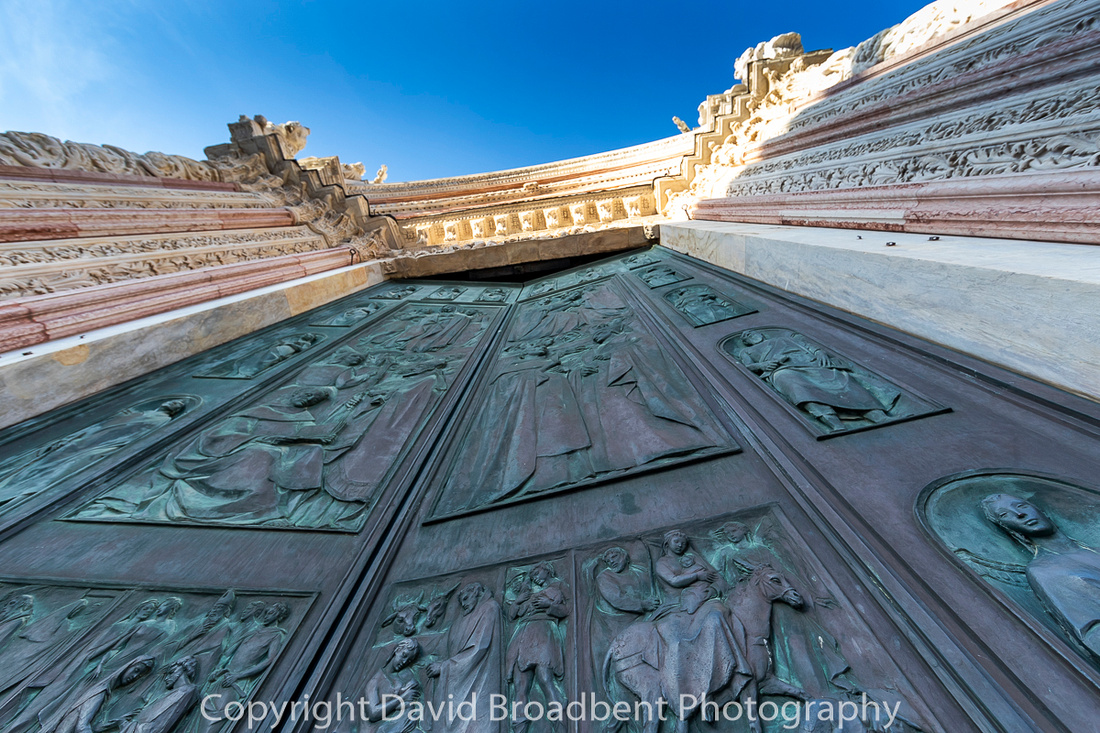
Just about everyone, it seems, in Siena believes that you can buy a ticket for the local bus onboard, apart of course from the driver!
Being fair, I perhaps need to be a little more specific and say that the old guys who drive the buses seem blissfully unaware that on-board purchases are possible. Then again the young guys (presumably indoctrinated by the aforementioned old guys) seem similarly unaware. Our advice to travellers to this fantastic mediaeval city is only get on a bus with a lady driver. Our first female pilote was particularly friendly and helpful. So, there is the gender gap dealt with for Siena – you’ll find the female transport operatives far more in tune with the Visit Siena tourism message than the old guys – whatever their ages.
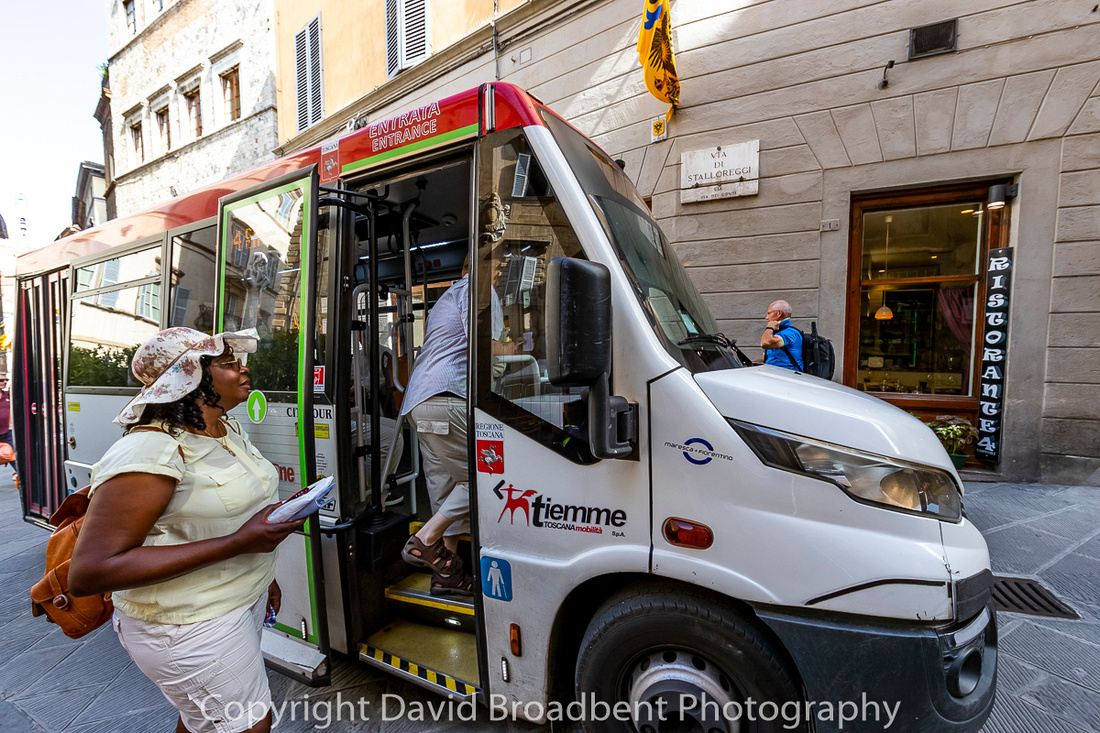
Don’t let the opening paragraph put you off. Siena is the most spectacular of medieval cities and most of it would appear little changed to a medieval time traveller. Even a Roman or Etruscan (who founded the city) visitor may find familiar areas of the city still standing, if only at pavement level. We’ll talk more about the photo and food later but for now it’s just time to manage your expectations.
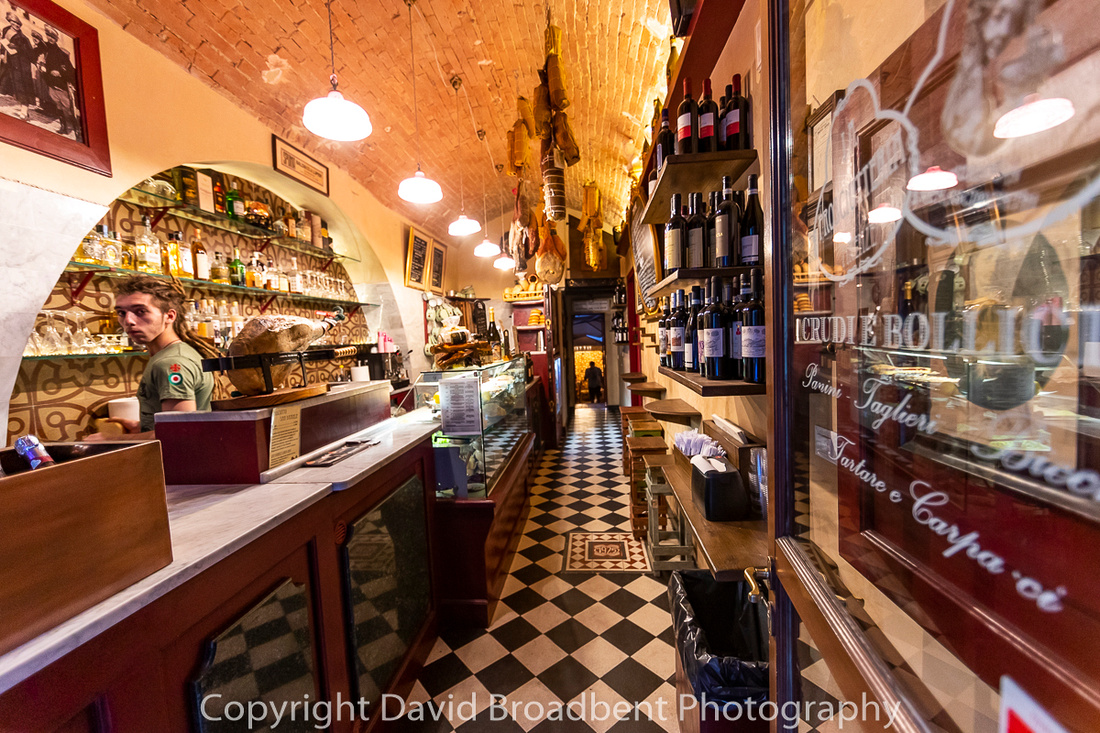
If Siena is your first taste of Italy, take the local customs like the bus, with a pinch of sale. It’s not all that difficult to understand. The locals and those who work in the public facing services seem battle scarred from their immersive encounter with “tourism” in one of Italy’s most popular destinations. They have the thousand yard stare of those who have seen things no other bus driver should have had to experience. For example, in a Gelateria just off the Campo we waited in a for an excessively expensive but redeemingly gorgeous fruitti di bosco (fruits of the forest) gelato in cone when the American lady in front asked the Gelateriere if he sold ice cream as well! See the disclaimer below
The rest of Italy is not like these tourist honeypots of Siena and of course The Vatican. Similarly in this papal palace, which must have a bad day if it doesn’t clear 2.5K Euros a day, there are staff who can hardly raise a smile even in the name of God.
Cut to the magnificence that is Siena! The monumental scale of this medieval masterpiece leaves photographers spoiled for choice in every genre from Architectural to Street. At each turn there is a shot or potential shot. The detail of the architecture, the exterior of the Duomo and the fragments of medieval friezes which still remain on the seemingly plainest of buildings is quite simply staggering. The quality of the artworks, stone masonry and mediaeval building lines are without equal. Much of the old city is pedestrianised and for these two reasons, Siena is every bit as impressive as Firenze.
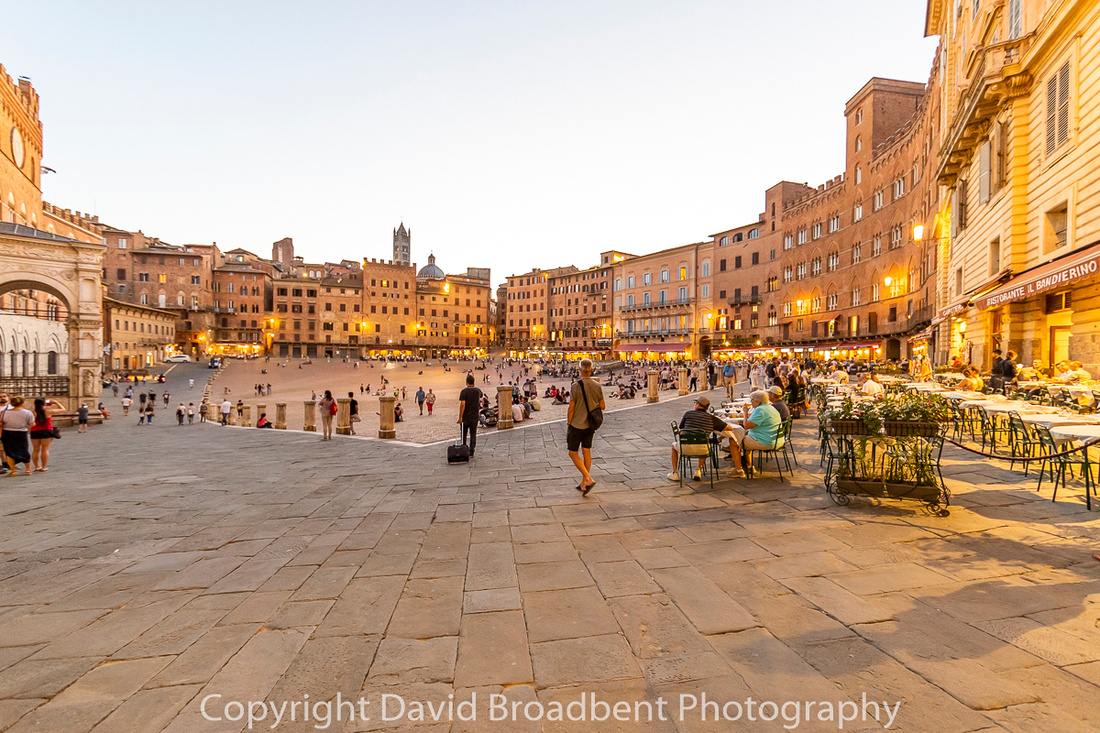
Il Campo is the scene of the famous Il Palio horse race staged each year in late summer. Horses career at breakneck speed around the Campo and packed crowd with reckless young men aboard. In doing so they defy gravity and, much like the rest of Italy, the relentless march of Euro health and safety. It is a breath-taking architectural arena. Enter from any of the narrow side streets into a natural sloping amphitheatre (probably also the site of the Roman Forum). Those narrow streets mask the full view of the Campo and therefore it always feels like a surprise before drawing the eye to the Torre and it’s crenelated companion buildings from anywhere in the square.

Don’t go to the Duomo in the morning unless you like queuing but rather wait until just after lunch and you’ll find the ticket office a wide open, air-conditioned reception area for you. Alternatively get the latest afternoon ticket you can and marvel at the interior religious splendour that is the Duomo.
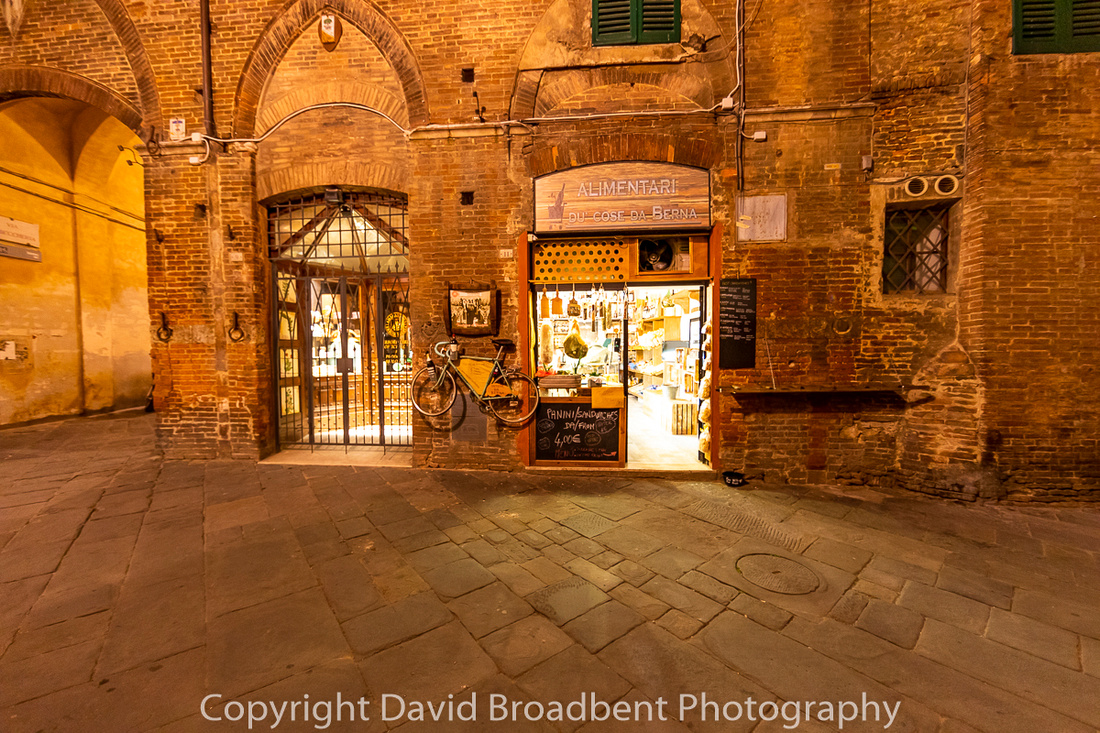
Photography A&E
We heartily recommend Marco at Solounclick di Marco Soldateschi, Via Pantaneto, 95, 53100. He is a Canon pro photographer and retailer and has a great deal of general photography knowledge. If you get into photo trouble during your visit – this is the guy to seek out for help. Siena also gives its name to the SIPA photo awards and exhibition. More details can be found here https://sipacontest.com/
The Bus
Riding the bus can be convenient and cheap. It can also plug you into the local zeitgeist and in some cases is a really good way to orientate yourself around a place (as are the red bus tours in bigger cities). Italian buses are often a "request" service (fermata a richiesta) i.e. stop the bus you want by holding out your hand at a stop and stop the bus you are on by dinging the bell on the bus BEFORE you get to your required stop. Tickets are sometimes available on the bus depending on whether your bus driver decides they can be bothered (see above). A more dependable approach is to buy them beforehand from your hotel reception, increasingly from auto machines at the stops or most tobacconist shops (Tabacchi). If I'm going to use the bus I'll either buy several tickets at a time. Tickets become "live" only once you validate them. They are normally valid for an hour or so on any other bus once validated. You validate your ticket onboard the bus. Put the ticket in the machine slot for it to be stamped or on more modern city buses the tickets are contactless - just put them on the screen until your hear the bleep. The driver is unlikely to want to engage in conversation about how you do this!
If I can find a seller next to really good coffee, I'll often just buy tickets for the day and give myself an excuse to call for coffee again tomorrow.
Eating

Don’t eat in the Campo unless you do so for the atmos and the view. Go with the first rule of the travel photographer and check out where the Sienese are eating. Not as easy as you may think as Siena attracts many Italian tourists as well. If in doubt listen for Italian around the tables. If you hear lots of American accents – you’re bound to need your credit card! There are lots of great small ristorantes on the Via di San Pietro down toward the town gate at Porta Tufi with price points to suit every traveller. For a real treat, we ate at Da Divo on Via Franciosa, 25, 53100 Siena – tucked away in the back streets not 5 minutes walk from the Duomo, the place is a cool gastronomic haven. The staff are friendly, helpful and multi lingual (do though try to speak some Italian at least) and the chef is reassuringly rotund. The food is fabulous! We tried courgette flowers and ricotta and prawns for starters – the courgettes took the taste finishing post by a length and half. For lunchtime mains, pappardelle and wild boar (Cinghiale) ragu and Tagliatini with Lobster. With a cheap bottle of wine and some frizzante water it came in around a 100 Euros.
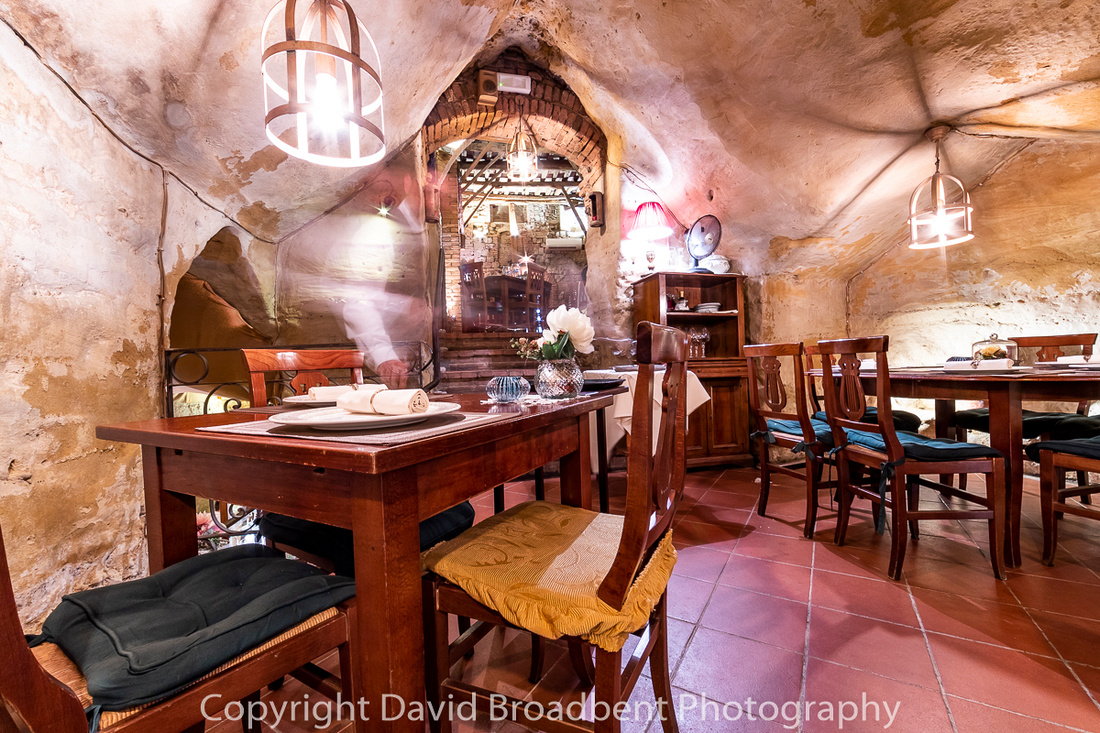
Eat really well in the week in the evening or lunchtimes and eat on the go at weekends when the eateries are likely to be much busier. Also, look out for local festivals where food is always an element in Italy, and you can sometimes just turn up and pay for a plate.
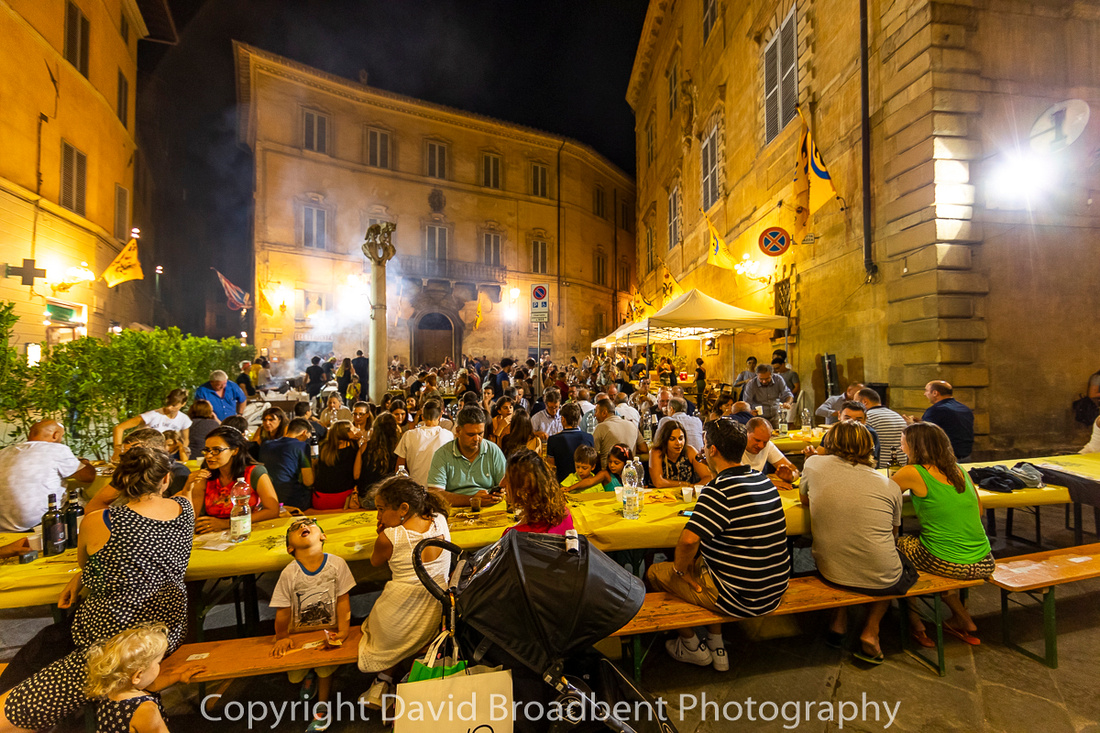
Gelato/Ice cream disclaimer
After the ingredients and blending comes the freezing and churning. More air (overrun) is typically introduced to ice creams to increase the output volume by 100% or more. Gelato overrun is typically more like 30% so is denser and creamier. The nice American lady may have been correct technically but in reality didn’t seem that with it.
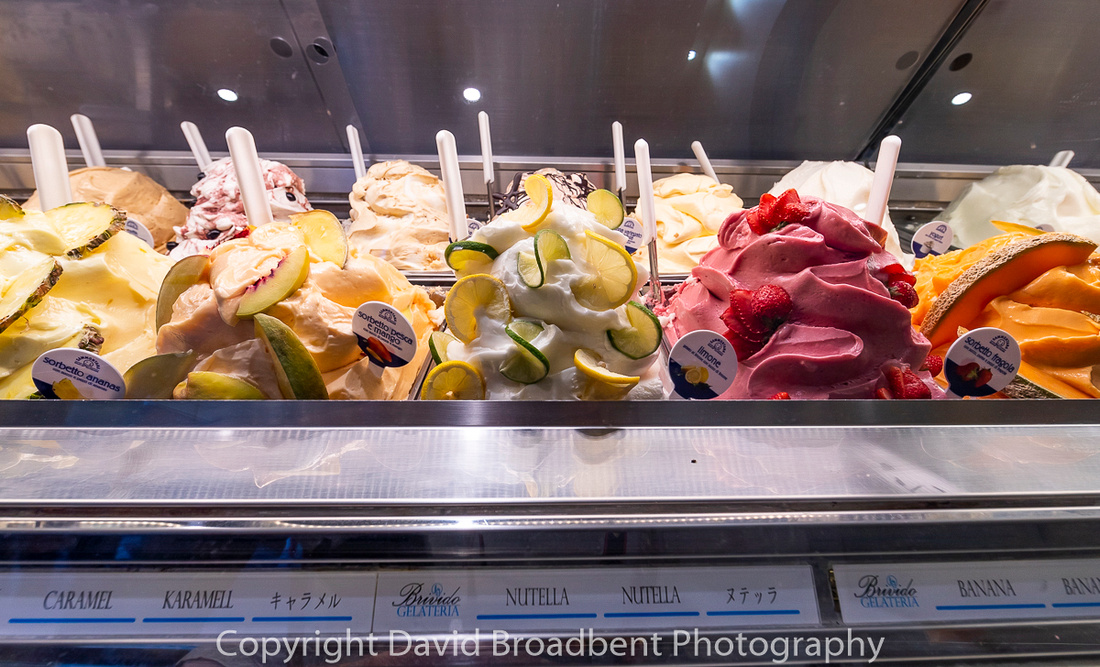
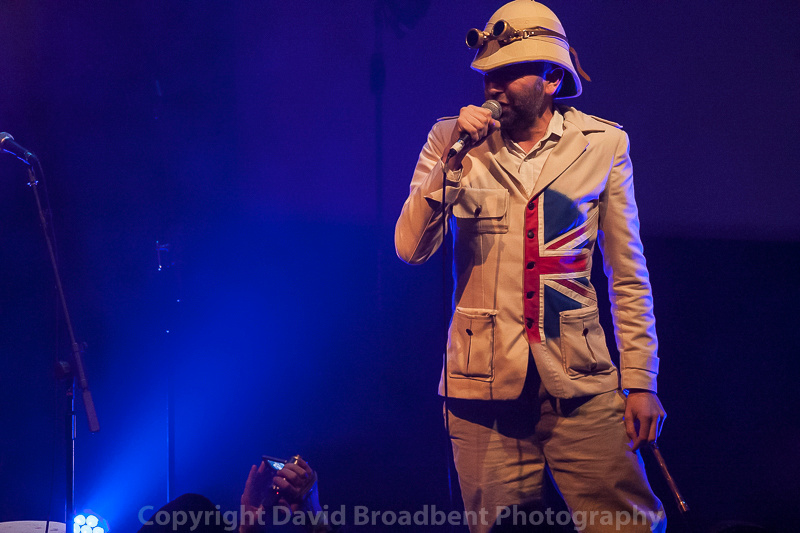
- Nothing has changed since the 1800’s.
- It’s meant to be fun.
- It’s meant to be a creative process.
- It doesn’t matter what gear you have.
- It does matter that you know how to use the gear you have.
- Digital cameras don’t work without a battery and card.
- You’ll never take the best sunrise shot ever if you’re not there, ready to rock and roll at sunrise.
- Many of the must have buttons do the same thing as the others but just in a different way.
- A significant and important amount of the technology in your camera is there simply to get over the technological shortcomings of the camera itself.
- If a setting that helps you do everything without another care in the world sounds too good to be true…………..
Two quotes stick with me constantly when helping others to improve their own photography and anyone who has been on one of my course will probably have heard them already;

One was by a client of mine half way into a session who said “I thought that I needed a new camera. What I actually needed was a life time’s experience”.
And the second is about knowing your gear and how to use it – Bradley Wiggins has an outside chance of winning the Tour de France on your bike, but you have no chance of winning it on his.
]]>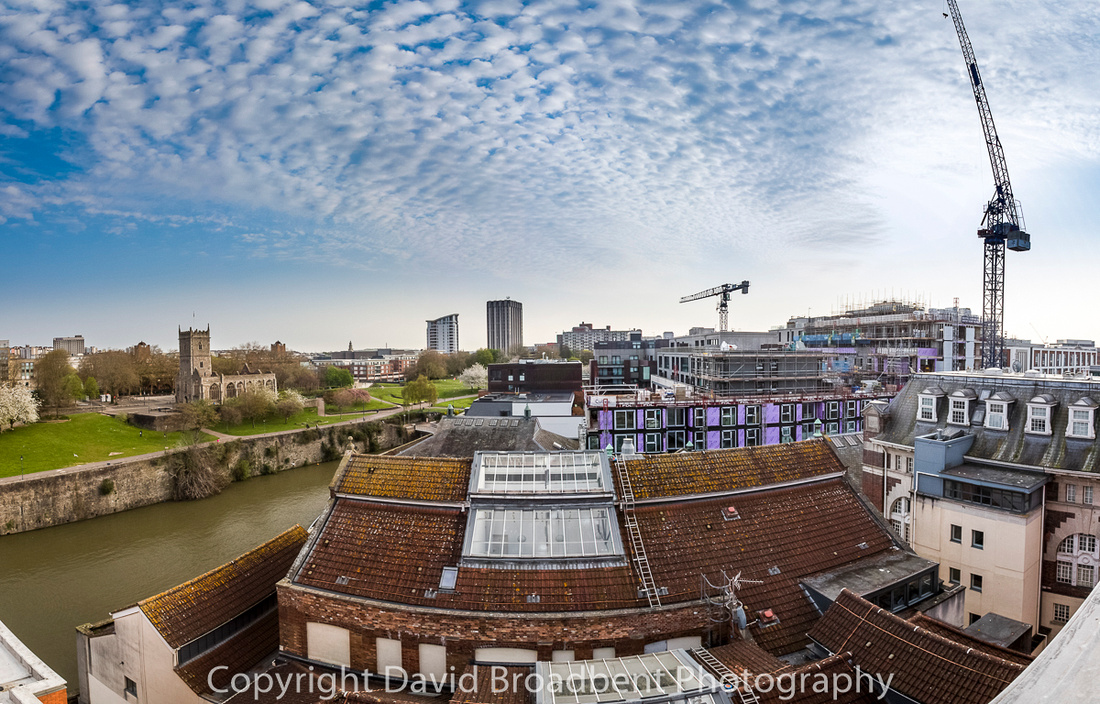
Back in the day of “proper” panorama photography the specialist cameras were so big that they had to have huge handles either side of the lens and after inserting a whole role of film (celluloid chemical coated strips popular before digital) and got just three photographs!
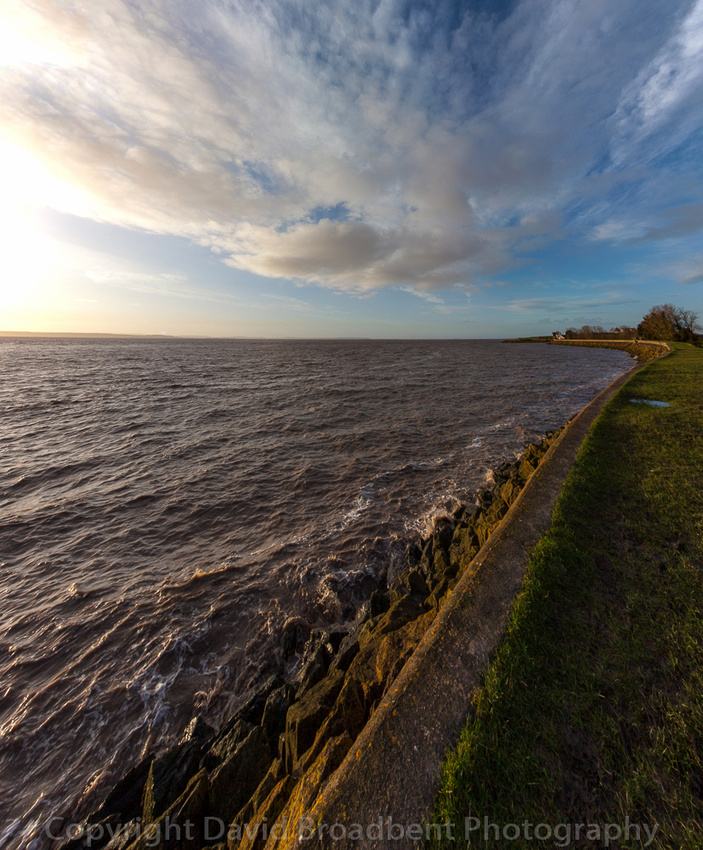
Those were the days. We had proper cameras with handles on to attract as much attention as possible and a massive and extremely heavy tripod that could only be transported to the location by a Yak. Oh, how we toiled to produce six inches long thin transparencies or negatives that no normal enlarger could accommodate and that were extremely difficult for the print industry to use unless they cut them up into sections! But we were proper photographers with a proper big Billingham bag and a proper back ache.

But now we live in the 21st century. Our DVD’s may not play once covered in jam as we were promised faithfully by Tomorrows World and it has taken the election of a crazed madman to revive the prospects for “Space Force”, but we do have panorama software. So, it didn’t all end in a mess.
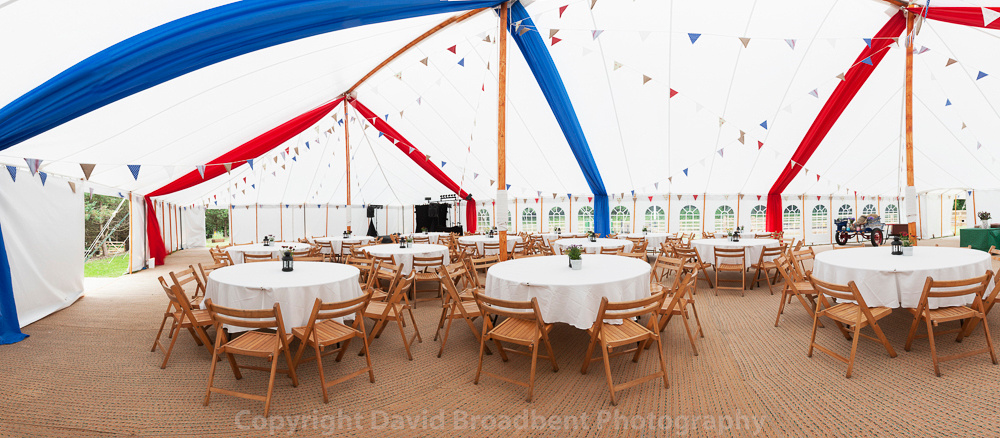
Now we can stitch frames together to make panoramas or we can just “swipe” or camera or phone across any given scene and hey presto – a panorama. Or, instead of side to side, up and down to create “vertoramas”.

Why has this technique persisted in photography? Is it because we all grew up on the magic of wide screen movies which told of the landscape beauty in one effortless sweep or is it because they are really useful? We all tend to accept the image format handed to us by the manufacturers but the reality is that some scenes look much better in different formats. Landscapes are a perfect example. Often, dependent on the subject matter the tell the whole landscape story much better and in a much more sympathetically balance way (forget the so called “rule” of thirds).
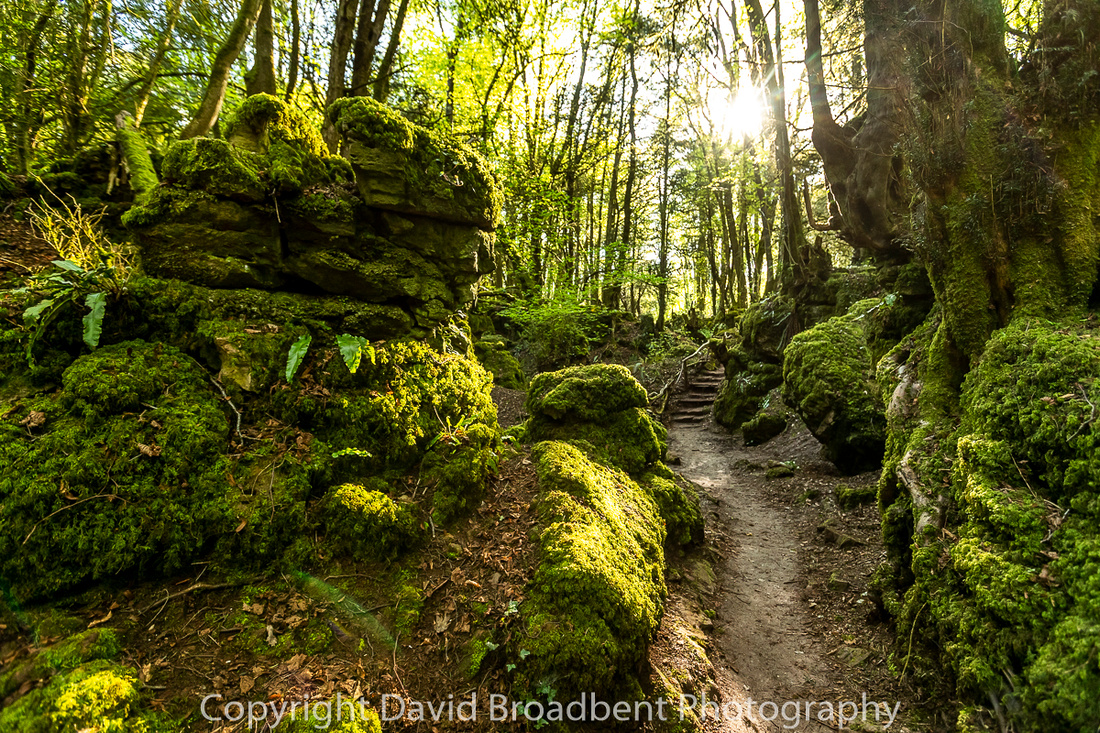
I use them from everything from close ups, to landscapes, to interiors and street photography. They work brilliantly. And unlike thin cut slices from a single image, stitches also have a decent file size and so remain cool for publishing. Now, thanks to the power of our pocket techno they are also dead easy to try and, dead easy to use.
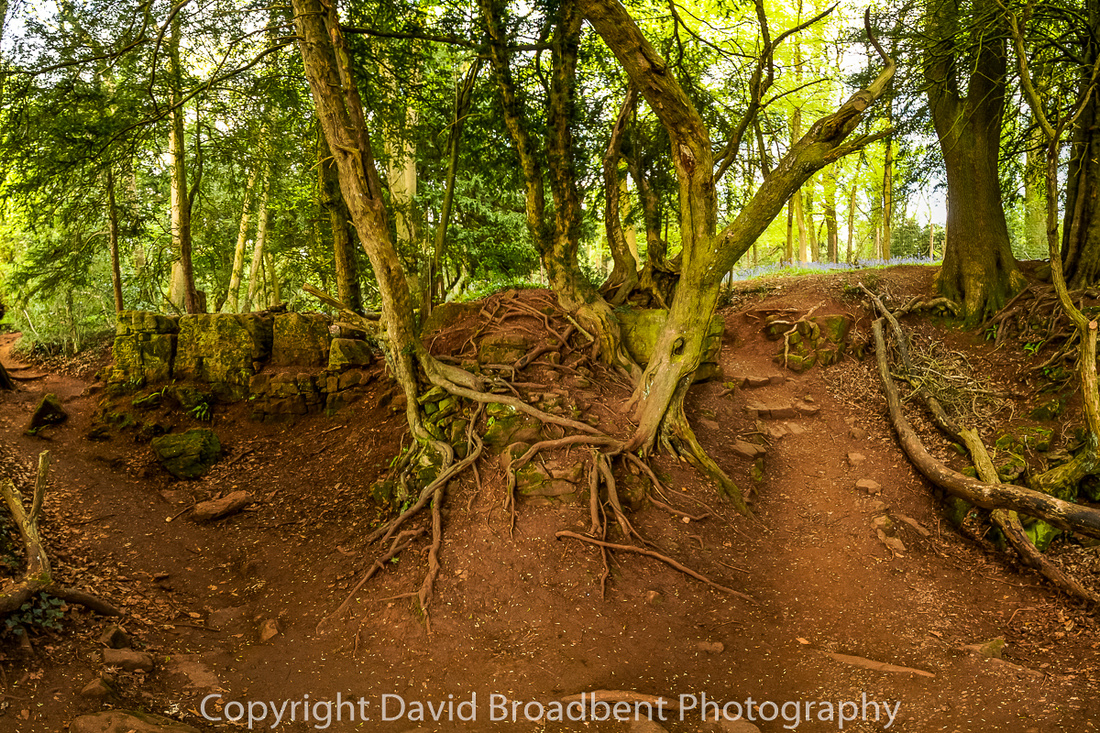 Join one of our courses or specify panoramas on a one to one to find out more.
Join one of our courses or specify panoramas on a one to one to find out more.

Boy, it’s tough selling street photography sessions and workshops. If this is your thing, nothing brings home to you how uneasy people feel about it than trying to encourage others to try it. I was working in Bristol city centre at the weekend. I’m documenting the city from the centre outward. It’s a project that started at the beginning of 2018 and I suspect that it will take me a very long time to complete, if ever! Every major city I know lays claim to being Britain’s second city (apparently acquiescing without a fight as to the top slots real owner). Each keen to press its own USP to take the accolade. Bristol does have a USP, it is extremely bohemian in the best possible sense.
It is so bohemian that on a sunny day the Castle Park is packed with people enjoying herbal cigarettes and practising circus skills. And yet, it is a city so bohemian that despite having a Steampunk Bar and A Steampunk Museum no one seems to be able to get a major UK Steampunk event going there!
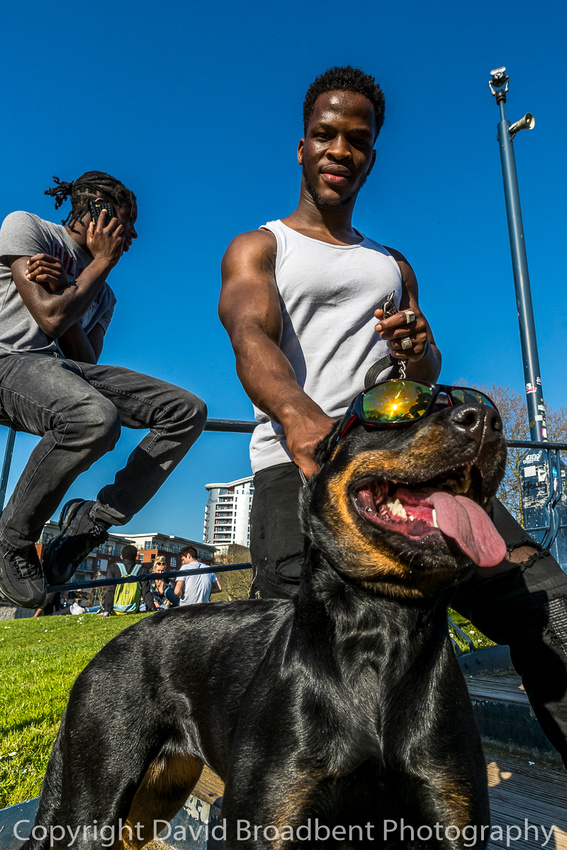
Anyway, back to street photography. What is it – well the stock photography answer is of course – it depends. A bit like the length of a piece of string the answer can be very simple or very complex. Wikipedia tries to define it but you’ll be more confused at the end of the definition that you were at the start. I like the observer of the streets quote best.
I always think that it can be defined more simply. They are pictures of our every day urban lives. Sometimes we are the central character and sometime we are bit part players. The pictures are also incidental history because in a years’ time we won’t dress like that, and in ten years’ time we won’t look like that. You could of course just have a picture of a street but I think that is a little too literal.
I think that there are broadly two camps. Either, you find and interesting street and background, set up on that and wait for something or someone interesting to come into that space. You then operate the camera to make the most creative use and image of that encounter. Second, you can enter a space that includes complete strangers and ask them, or not, if you can photograph them doing whatever it was that caught you eye in the first place.
Practising the latter, as with travel photography, has the ability to restore your faith in humankind. It is here in such encounters that we rediscover what we’ve always known, that most people are just like us and that most people are nice. Only your own self consciousness prevents you from asking a stranger with an interesting face if you can take their picture.
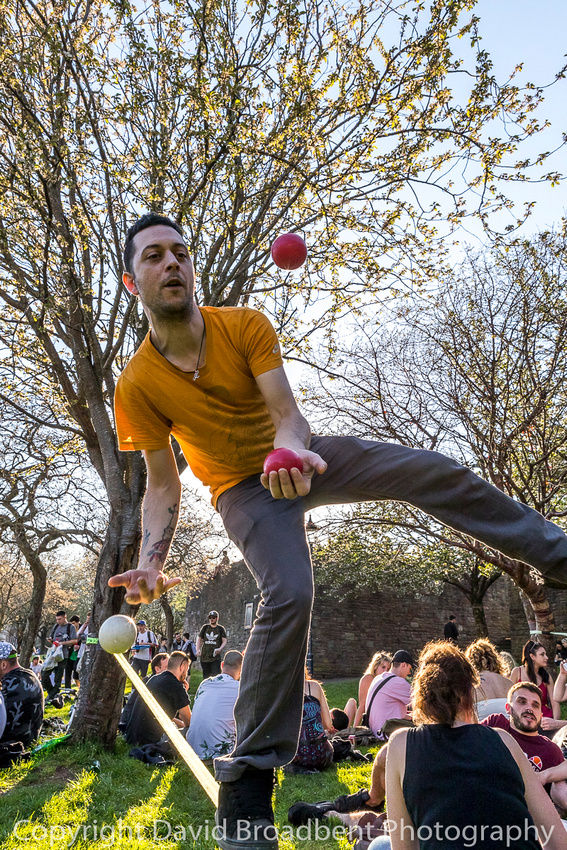
On my workshops, I demonstrate all the techniques and approaches possible after dealing with the legal and safety (for the 1 in a million odd bod) issues. Then I show clients how it’s done and they take pictures with me. Then it’s time for a little assignment – pick a stranger, approach, engage and ask. Even then I do have some clients who just can’t bring themselves to go that extra mile.
The most often asked question from subjects is a variation on the theme of “what is it for”… Be honest about your potential use of the images but be brief. No subject wants to hear you spouting about your great achievements and creative intent. Some say no and that is to be respected. Occasionally, someone will say “fuck off”, that’s ok too, no need for a conflict.

But this subject of people being people remains absolutely fascinating not only to photographers but to us all. It’s current, it’s news, it’s history in the making and people love looking at pictures of the lives of others. Try it for yourself on one of our city based workshops.
]]>
In Pursuit of the Golden Setting
One of the questions I’m regularly asked during Forest of Dean & Wye Valley School of Photography training sessions is “what is the best setting for…..”. My answer is always the same, “it depends”. This useful and often used phrase in photography isn’t meant to be evasive, avoid the issue or to be clever – a recent lawyer client told me “we use that one a lot too”. It’s a genuine response to a question that often confuses developing photographers. So often they are bombarded by ill-advised, misguided and often inaccurate information from what gear they absolutely “must have” to so-called professional settings and workflows. This question, if you think about it is technically orientated and not in the slightest bit to do with the creative process. Searching for the golden setting sits with all the other jargon-istic technical stuff that magazines, blogs and “the wise” churn out on an industrial scale.
If you give it some thought, creative landscape photographers, for example, are never slavishly devoted to f16. The best creative minds make all those sorts of decision after they have laid eyes on the actual scene and after they have arrived at the conceptual starting point for the image. The concept you have may have taken weeks to formulate and prepare or it may have taken a split second in response to whatever has caught your eye – it doesn’t matter – it just comes back to the creative. So, there we are, the question is turned on its head. And, in my opinion, rightly so from a technical enquiry to a creative response to what you see and what it is you want to achieve.
I’m all for being inspired by and emulating others in the pursuit of learning and experience. But, photography is a creative process for the most part. Of course, technical knowledge is required in the execution of the creative. Just as behind any great artists’ work there are several years of hard work, learning and training. So, it should be with photography; the only reason to know and use the technical is to enable the creativity to shine through. In your own personal work – don’t emulate anyone.
In pursuit of this ideal we should, I believe, do as I often do and turn the world upside down and go for it. If you can recreate the original concept you had for the image – result – doesn’t matter how it’s achieved. Whether anyone likes it or not is immaterial but so often confused with image appreciation.
In the same sort of mindset, I also get asked if there are gadgets for this, that and the other. Let’s face it, it’s difficult to get out of Jessops (and other stores are available) without being significantly lighter in the pocket department, can you? So, the answer from the “sales department” then is a most definite Yes! Is there an app or a must have gadget for x, y and z. of course there is! However, most of the time you can also just do it the easy way. The way it’s been done for ages. The way that doesn’t involve carrying anything extra. Or the way that doesn’t cost a fortune. Because, in photography there is a truism that no company with a commercial angle wants you to hear too often. Techno’s will have you believe that the addition of an extra button makes all the difference, but remember:
Nothing has changed since the 1800’s. It’s still all about shutter, aperture and (nowadays) ISO.
 If you would like to learn more about our courses just drop an email to [email protected]
If you would like to learn more about our courses just drop an email to [email protected]
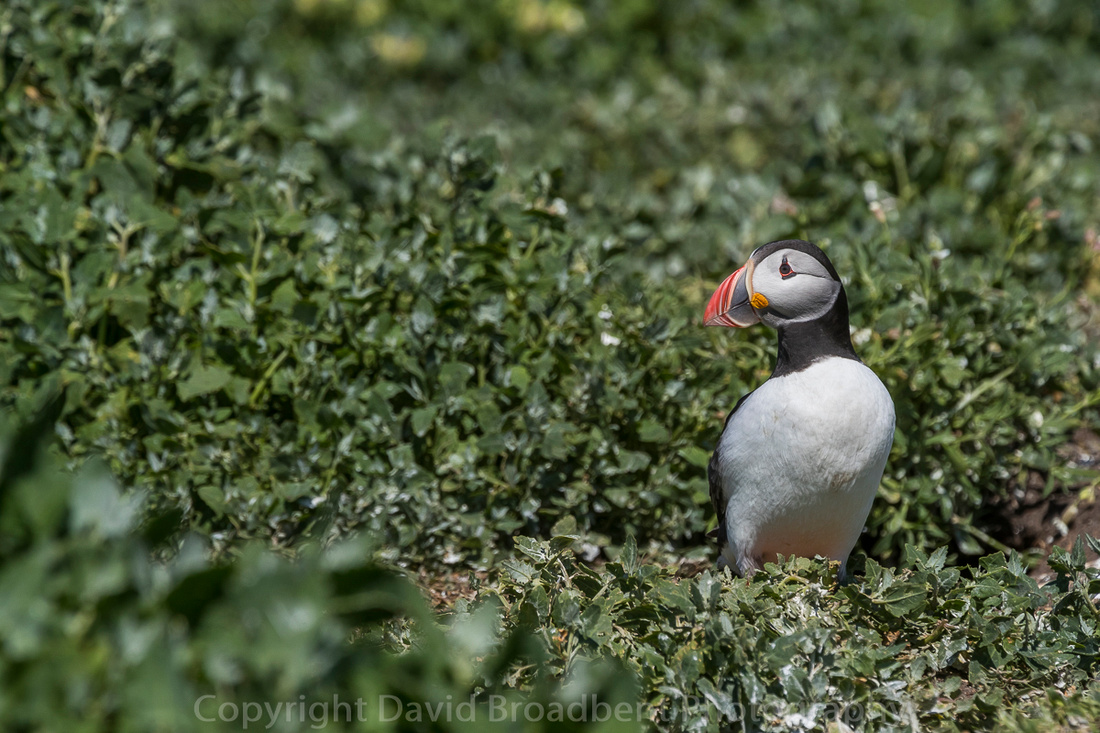 Puffin, Inner Farne Island, Northumberland, UK.
Puffin, Inner Farne Island, Northumberland, UK.
I was back up at the Farne Islands off the fabulous Northumberland coast recently, primarily to shoot Puffin pictures for this, the year of the Puffin. Well, not quite the year of the Puffin but certainly the start of the RSPB’s exciting new citizen science project on this quirky little auk. Project Puffin aims to recruit photographers to submit images taken at Puffin colonies during 2017. Specifically – images of birds carrying food in their mouths. Images from the project can be used to identify exactly the type, size and quantity of fish that the birds are bringing back to nest.
The wider issues facing Puffins seem to be lack of their normal diet, which is suspected to be behind the some of the recent sudden declines in breeding success at some colonies. So, if you are a regular photographer of sea birds you may be thinking that this is indeed a new twist or motivation for capturing these little sea faring beauties. A species that surely has been photographed so often that there is little opportunity for something new and creative.
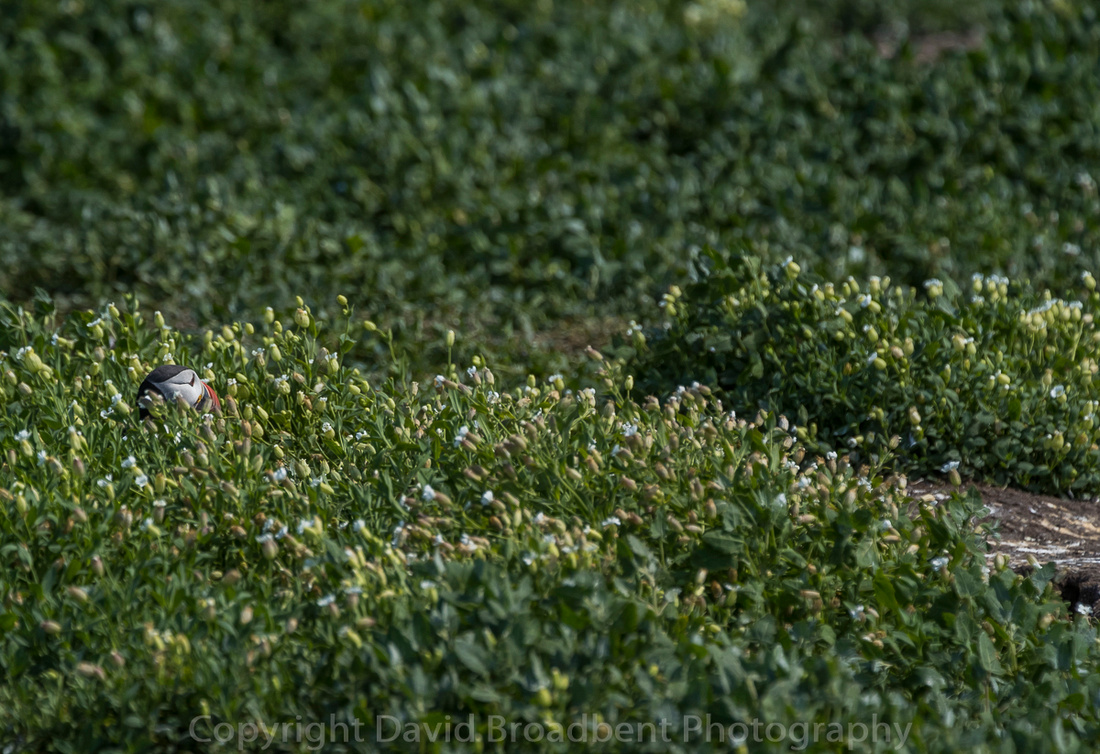 Puffin, Inner Farne Island, Northumberland, UK.
Puffin, Inner Farne Island, Northumberland, UK.
It has been far too long since I was in this part of the world. Although there are colonies closer to home, this one has a special place in my heart and is also surely one of the most iconic. My logic, if there is any, being that if they are struggling here at this long established site – then it does not bode well for other sites. This seabird haven, surrounded as it is by the crystal clear cold rich waters of the North Sea, has in the past been the ideal place for Puffins and many other seabirds to make their home and raise their young. If its going wrong here the must be a problem. Not just a natural cyclical problem but rather, something tangible and one which certainly prompts the need for further research – hence the RSPB Puffin Project UK.
 Puffin, Inner Farne Island, Northumberland, UK.
Puffin, Inner Farne Island, Northumberland, UK.
And so, in part the project is using images to support the wider research project to provided data from other, more conventional, research sources – all clever stuff. That’s the thrust of the project and, at the end of this article, I have included some useful links so you can find out more.
Cut back to the bustling Seahouses harbour on a sweltering hot June morning. High tide has come and gone but these days it is the buzz of the tourist boats and not the local fishing boats that crowd the harbour. The Farne Islands tourist industry is a significant contributor to the increasing popularity, and local income, of this jaw-droppingly beautiful part of Britain. Local boatmen shut out of the fishing industry are now recycling old fishing boats into tourist vessels to give us all a taste of the sea.
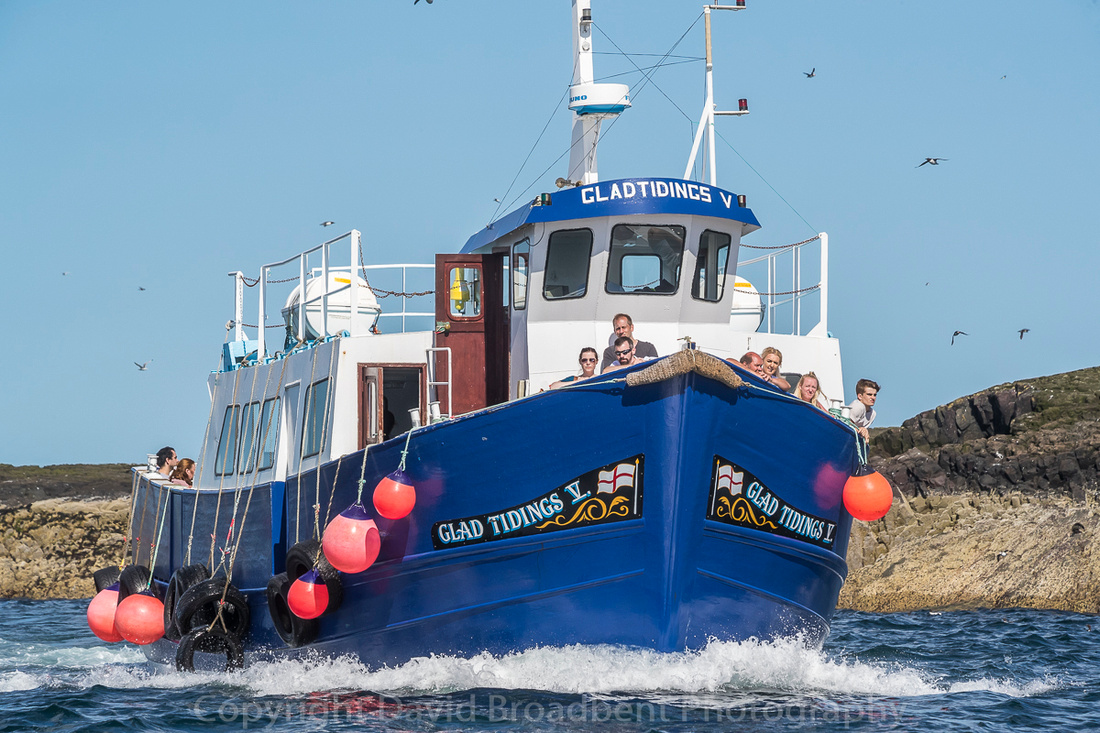 Glad Tidings
A large photo group is gathered by Billy Sheils’ ticket hut on the harbour side. Their instructor for the day is trying his best to impart useful information on the forthcoming visit to a seemingly easily distracted audience. Chief amongst the advice I was privy to was the opportunity to photograph terns on people’s heads. As you might image there is an impressive array of expensive photographic equipment on show. Shoulders groan under the weight of long lenses hanging off branded camera straps and assorted gizmos. Heavy looking rucksacks seem to suggest that yet more gear (or just lots and lots of sandwiches) is contained within.
Glad Tidings
A large photo group is gathered by Billy Sheils’ ticket hut on the harbour side. Their instructor for the day is trying his best to impart useful information on the forthcoming visit to a seemingly easily distracted audience. Chief amongst the advice I was privy to was the opportunity to photograph terns on people’s heads. As you might image there is an impressive array of expensive photographic equipment on show. Shoulders groan under the weight of long lenses hanging off branded camera straps and assorted gizmos. Heavy looking rucksacks seem to suggest that yet more gear (or just lots and lots of sandwiches) is contained within.
What also strikes me as quite odd is the sheer square footage of DPM (disruptive pattern material also known as camouflage to you and me) in various shades of “forest leaf” cladding the gathered throng. Setting aside for the moment the basic principals of camouflage in aping the natural world and blending in with any given background environment, you cant argue that nothing says “Camo” like a good forest leaf pattern!
I can't think of a single practical reason for DPM on Inner Farne, in forest leaf or otherwise. The birds watch from the rocky redoubt as the fishing boats (that deliver no fish from their sterns) loom larger on the cool blue waters. Birds have a sense of the routine and probably know the sailing schedules as well as the boatmen. So, right on time, the boats arrive and disgorge their cargo. The majority of the birds couldn’t really be less interested in us (providing we stick firmly to the rules of where one may or may not go). All, that is, except the Arctic terns. They, by contrast, seem positively excited by the arrival of a new, and sometimes unsuspecting, shipment of victims.
Despite the now obvious Health & Safety notices and briefings from the NT staff (with added nods, winks to reinforce the message) of the need for headgear – these first timers brimming with confidence sally forth onto the ashore. One lady on the outward boat trip suggested her husband was over reacting and assured him of her solution to “just stay on the beach”. Not too sure she had fully grasped what Inner Farne was all about….The terns where way ahead of her and camped out foursquare right there in the sand.
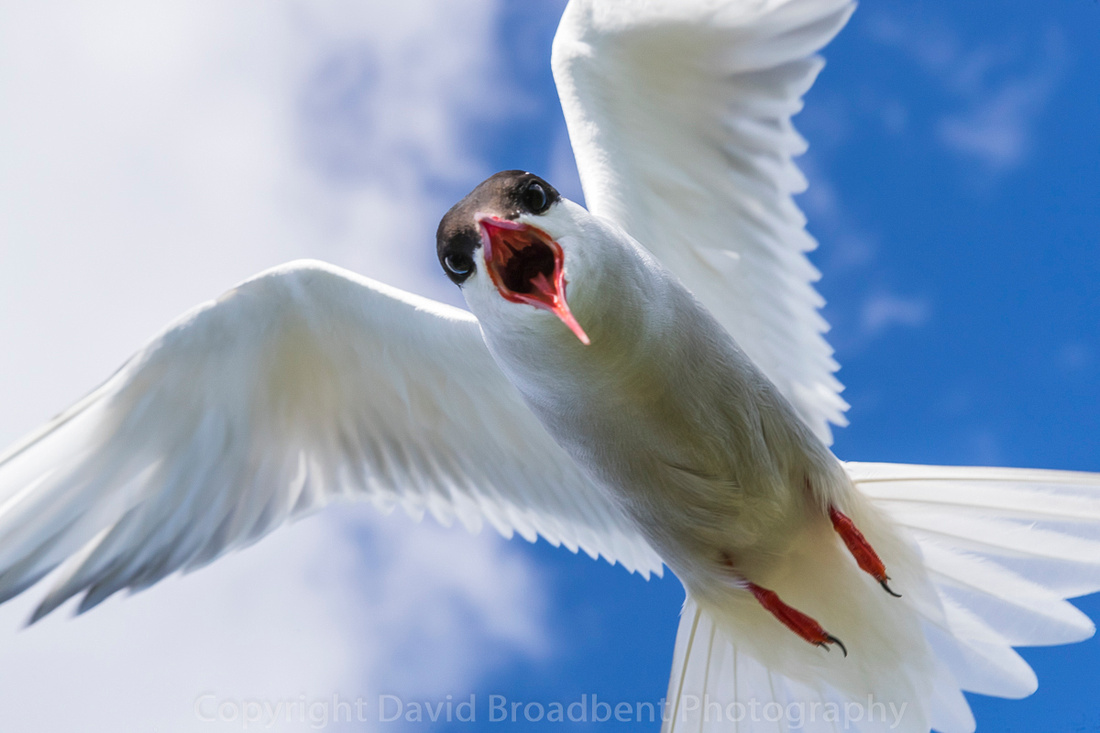 Arctic tern, Farnes Islands, Northumberland UK
Arctic tern, Farnes Islands, Northumberland UK
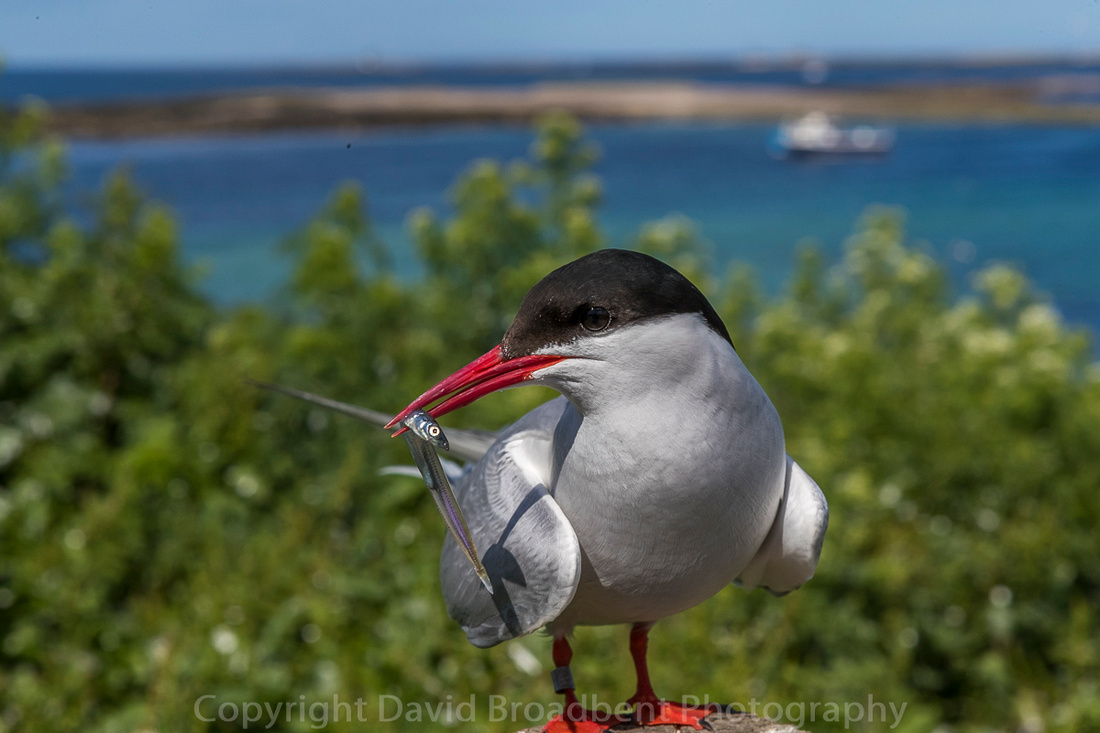 Arctic tern, Farnes Islands, Northumberland UK
Arctic tern, Farnes Islands, Northumberland UK
I mingled with the visitors including members of the photo group now taking pictures of each other with terns on their heads. Dressed in my highly camouflaged check shirt and jeans replete with a MotoGP baseball cap in various bright shades of bright blue I mingled. A funny thing happened to me on the way to the sea cliffs….I got on the receiving end of a pitiful glare, an “Oh bless” expression, perhaps even a sneer from an older gentleman festooned in camouflaged photographic equipment. The seeming reason for his patronizing sympathy was my obvious and energetic attempts to photograph Puffins carrying sand eels in their mouths as they whizzed overhead, nest ward bound, at Mach 3.
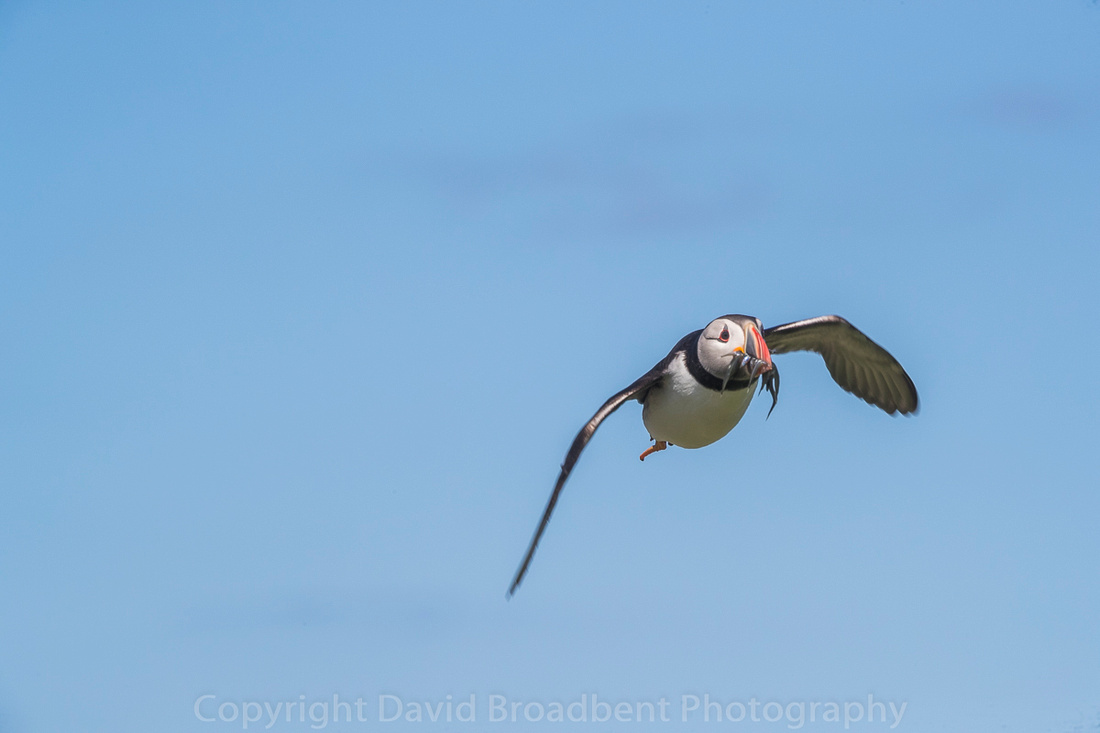 Puffin, Inner Farne Island, Northumberland, UK.
Puffin, Inner Farne Island, Northumberland, UK.
 Puffin, Inner Farne Island, Northumberland, UK.
Puffin, Inner Farne Island, Northumberland, UK.
 Puffin, Inner Farne Island, Northumberland, UK.
Puffin, Inner Farne Island, Northumberland, UK.
It would have been churlish and totally unnecessary to cease my high speed tracking to explain my efforts (assuming my assumptions of what just happened were correct) to “multi pocket jacket man”.
And so there you have it! Do what recent technological advances in gear allow but most importantly employ a creative mind, and do something different!
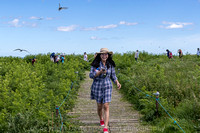 Visitor, Farnes Islands, Northumberland UK
Visitor, Farnes Islands, Northumberland UK
https://www.rspb.org.uk/our-work/conservation/project-puffin/
https://twitter.com/search?q=%23ProjectPuffinUK
#ProjectPuffinUK
Fratercula arctica
We had an afternoon ticket to Inner Farne with Billy Sheil’s Boats
The Farne Islands are owned by the National Trust and in addition to the boat fare, landing visitors must also pay the NT admittance unless you have an NT membership card with you.
Birds, and other things in general, in motion is one of the most difficult skills to master. I hold regular training sessions on focusing and exposure techniques on this at my training school Forest of Dean & Wye Valley School of Photography as well as in the Film and Photography School for the Gloucestershire Wildlife Trust at Greystones Farm.
]]>